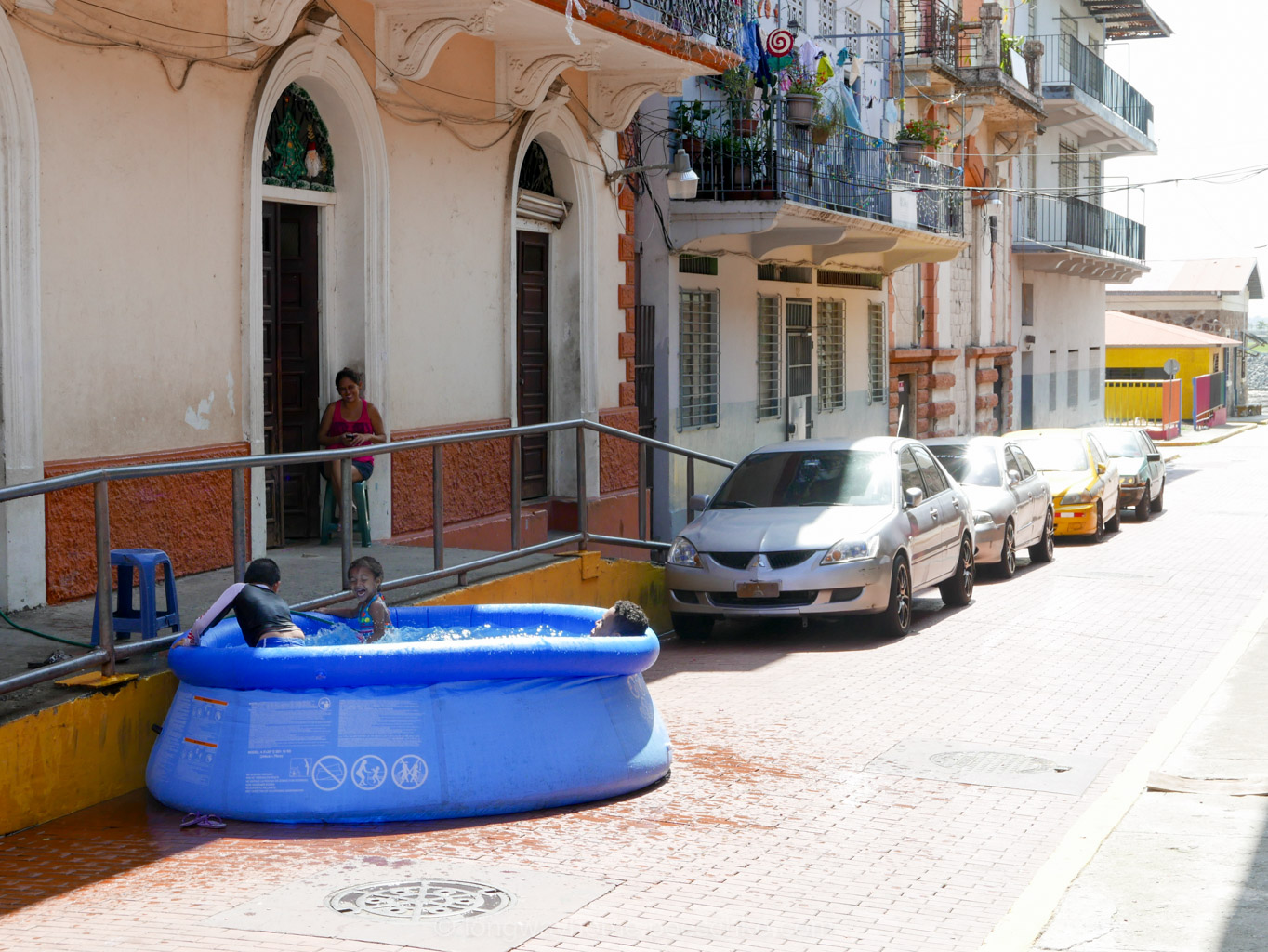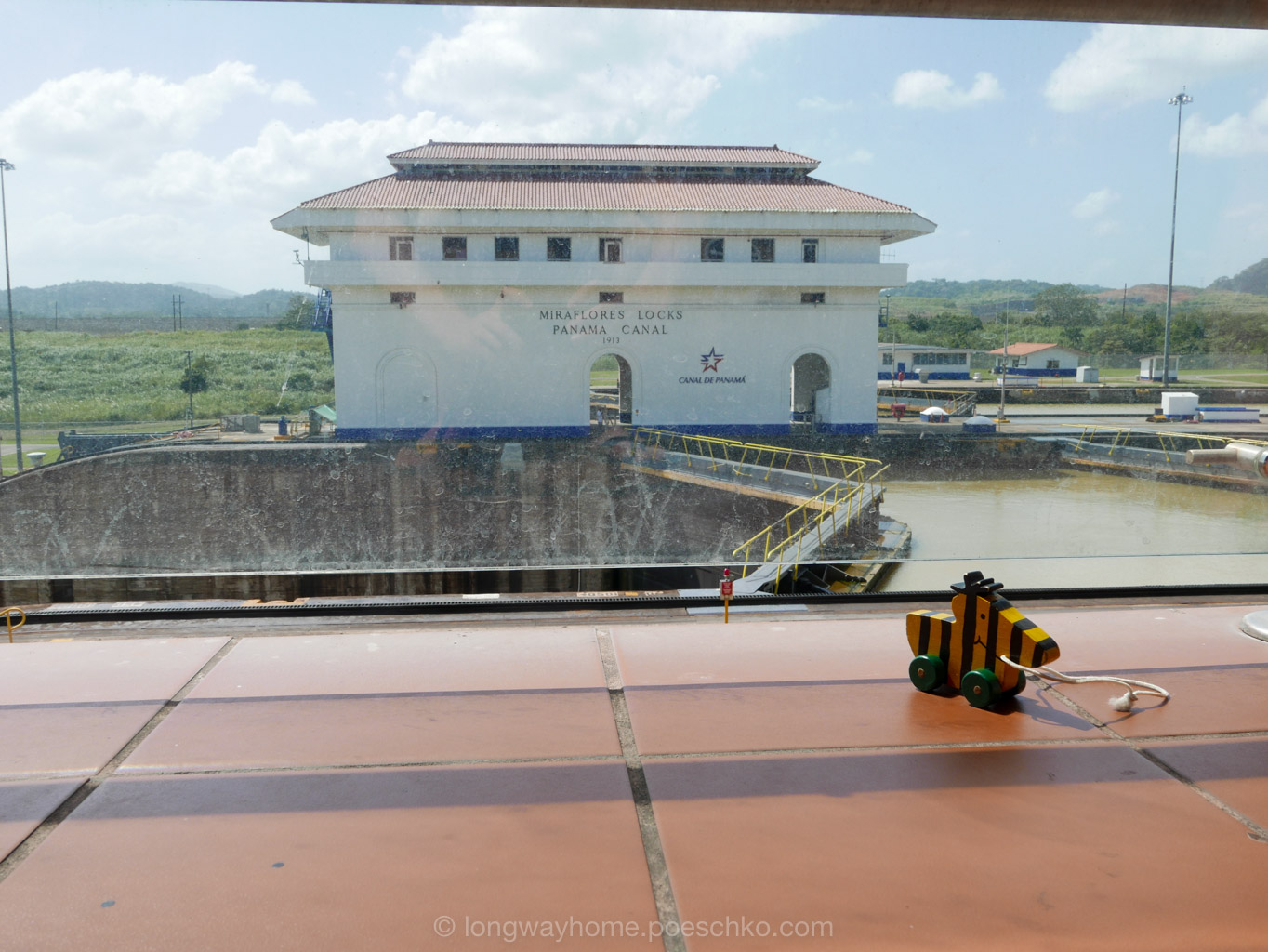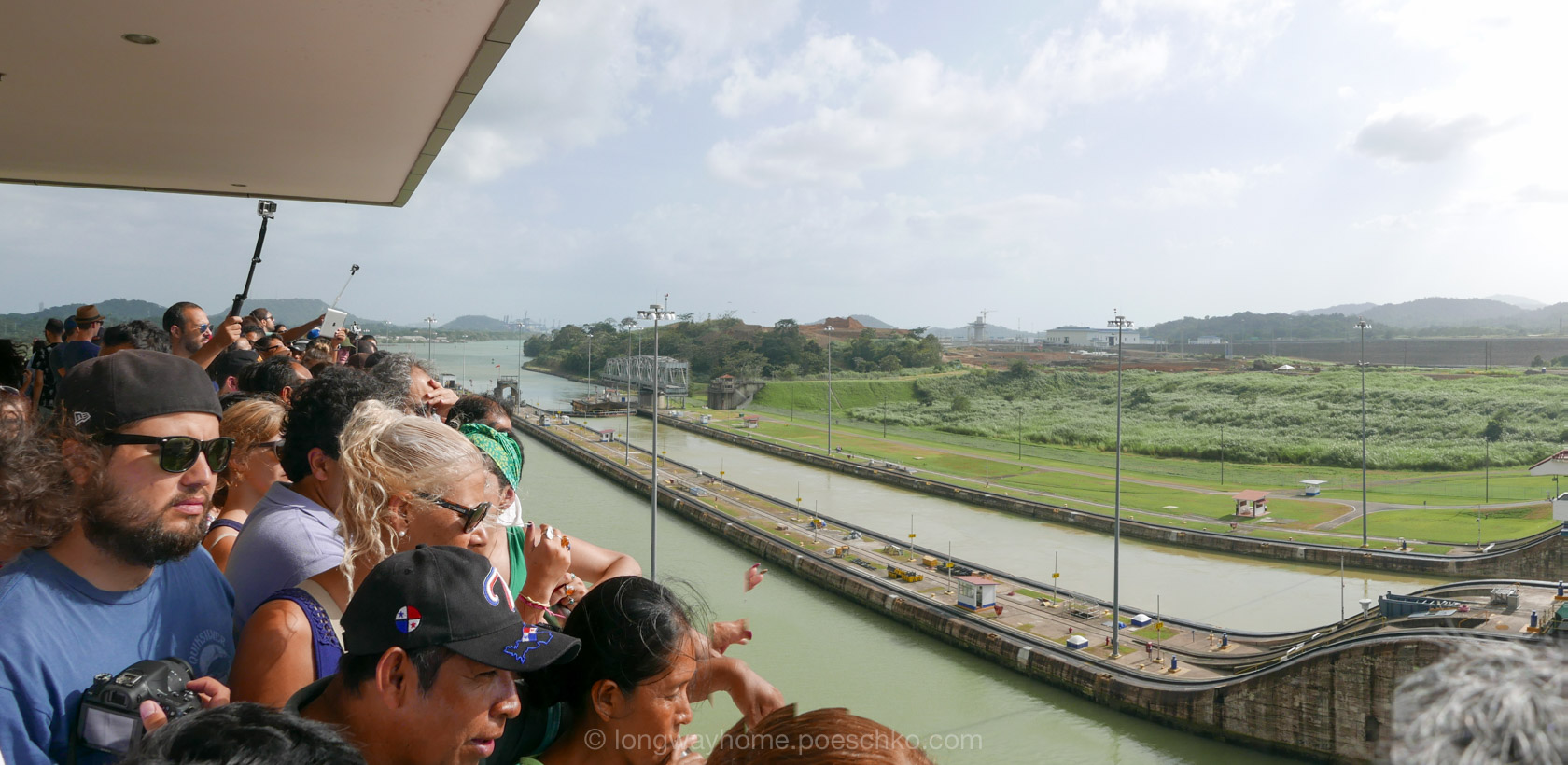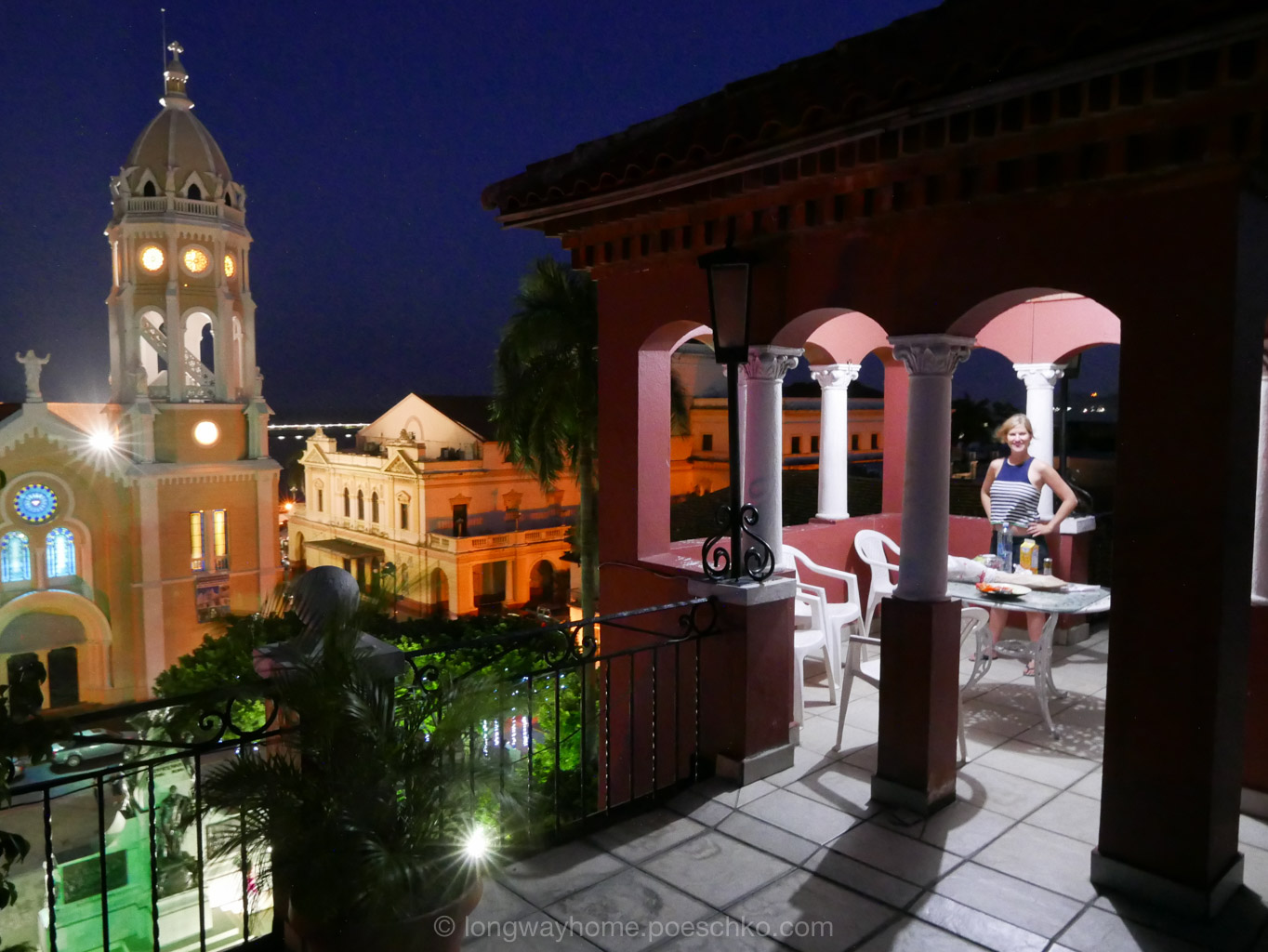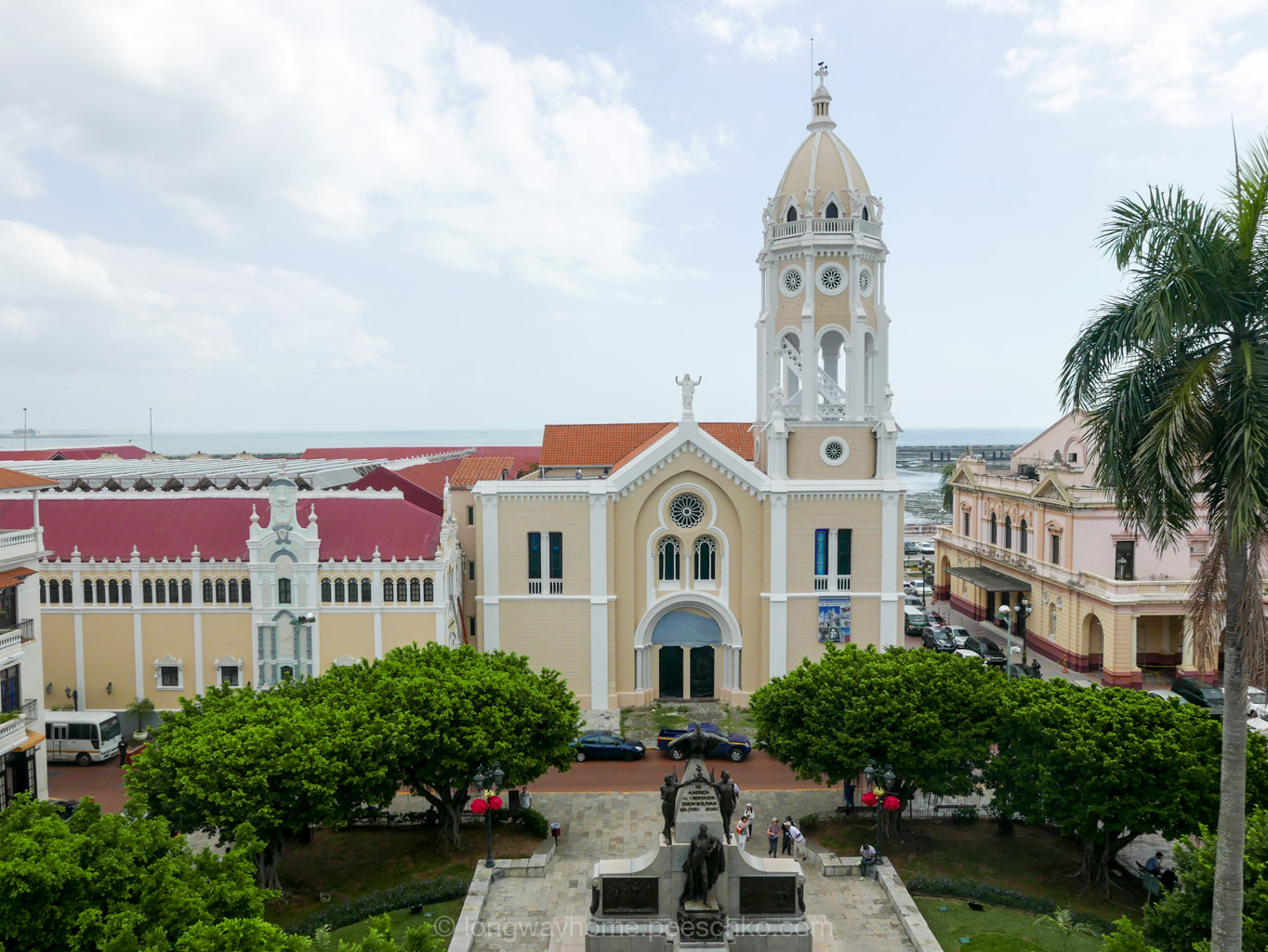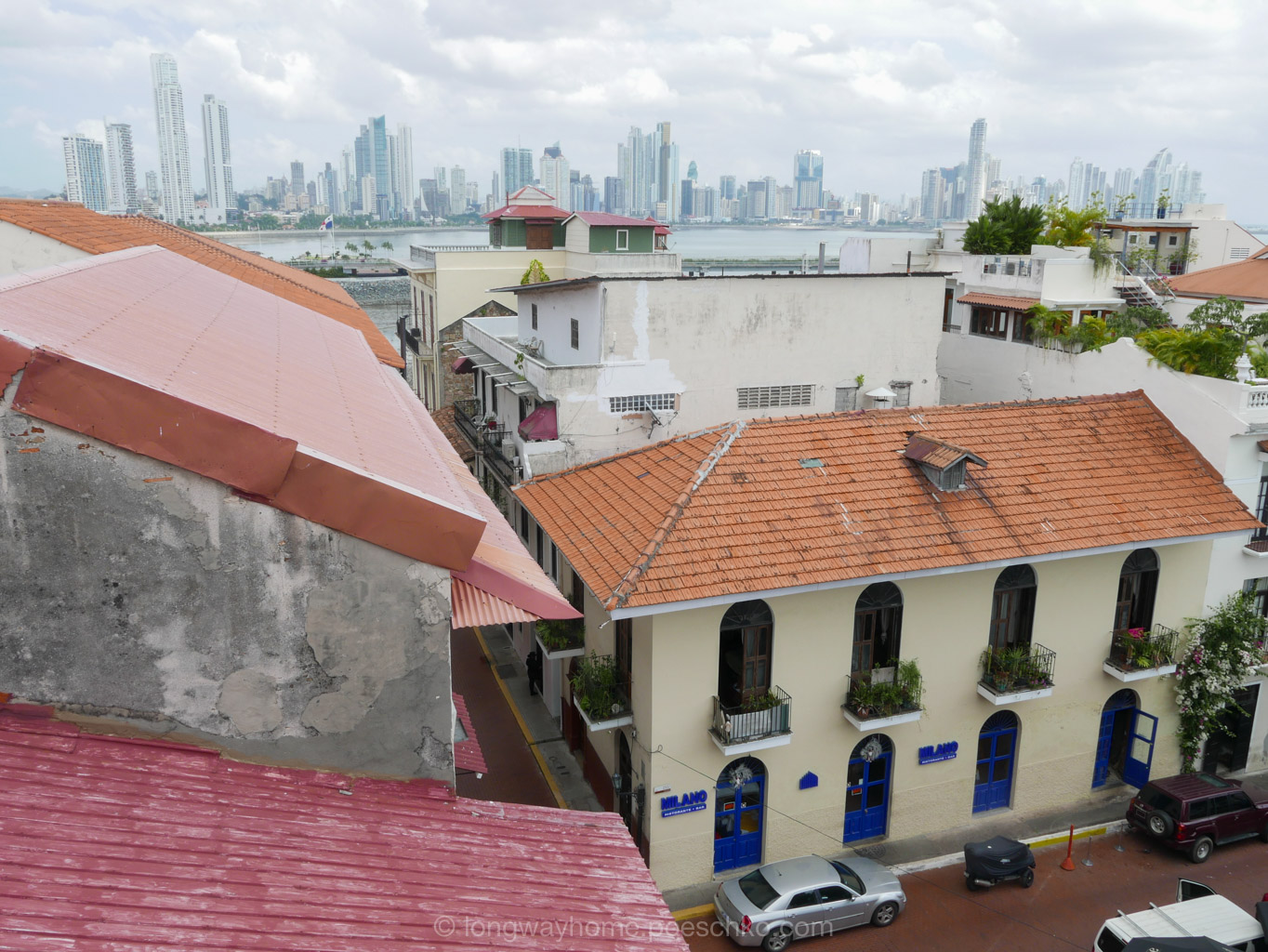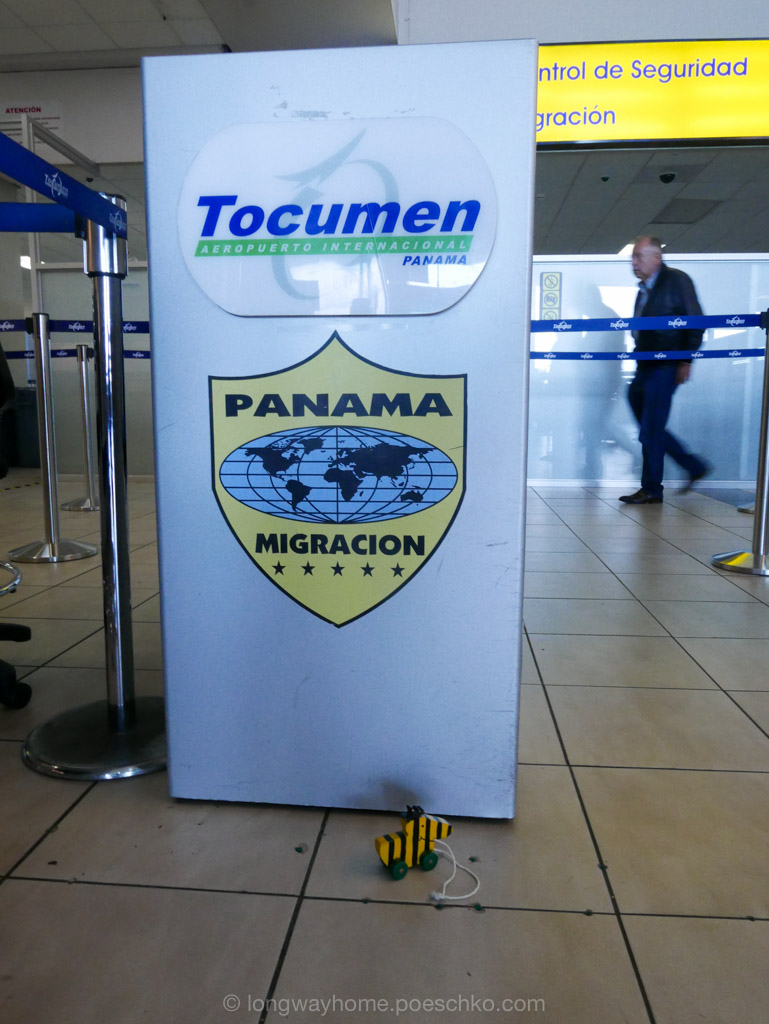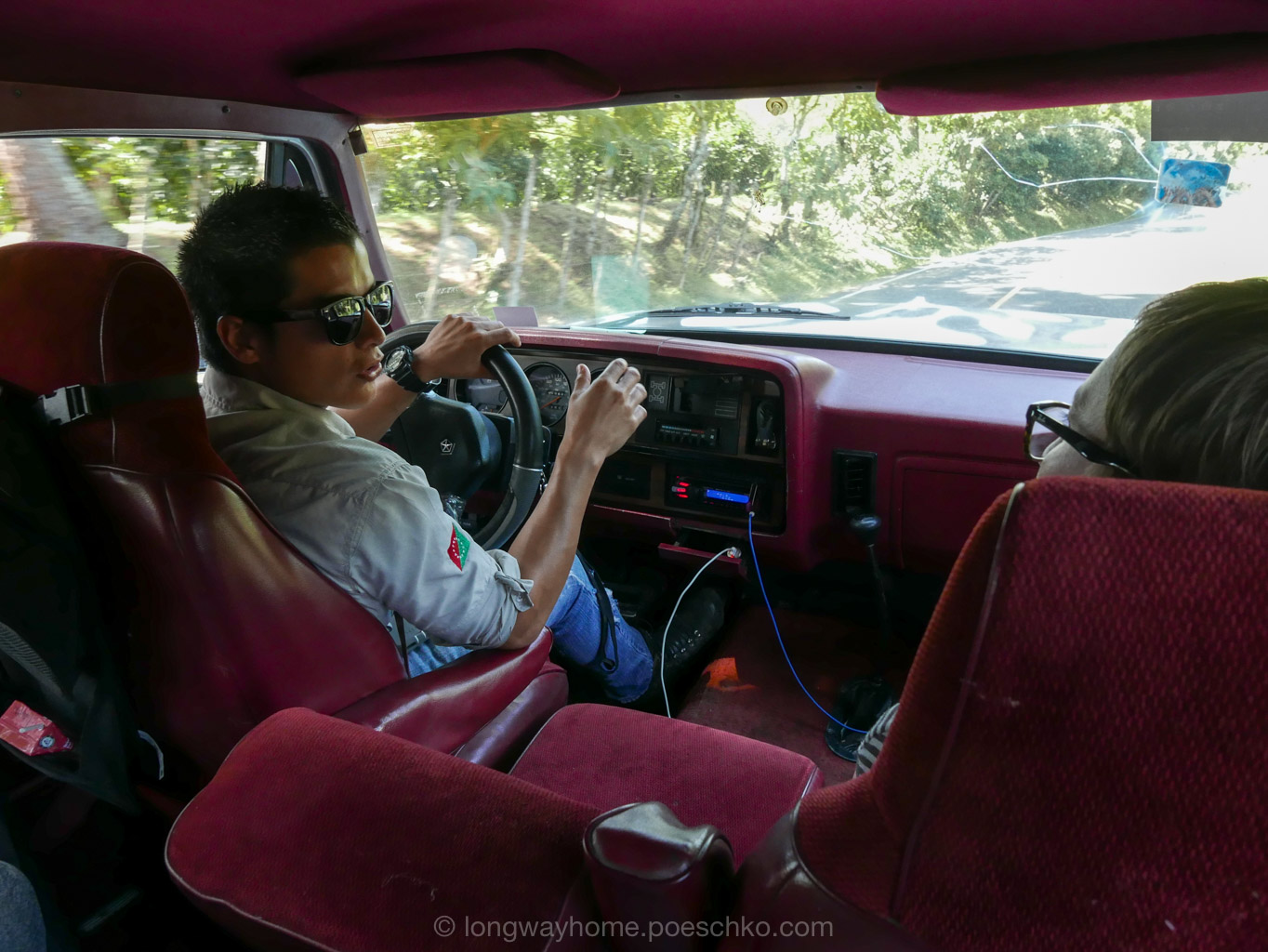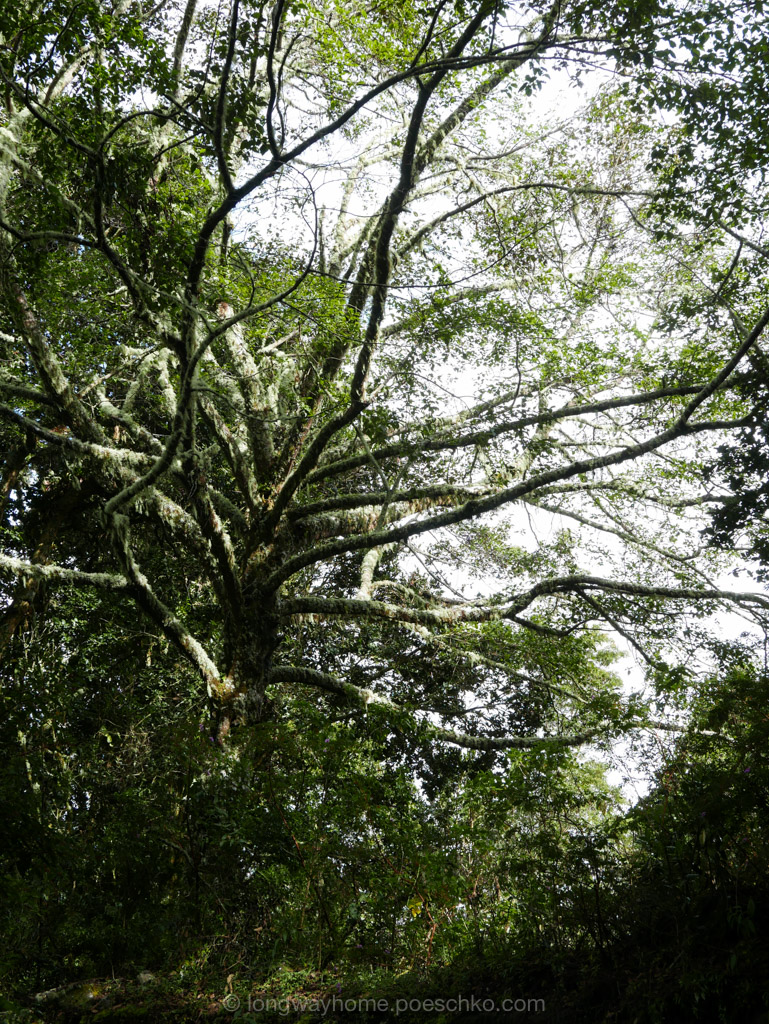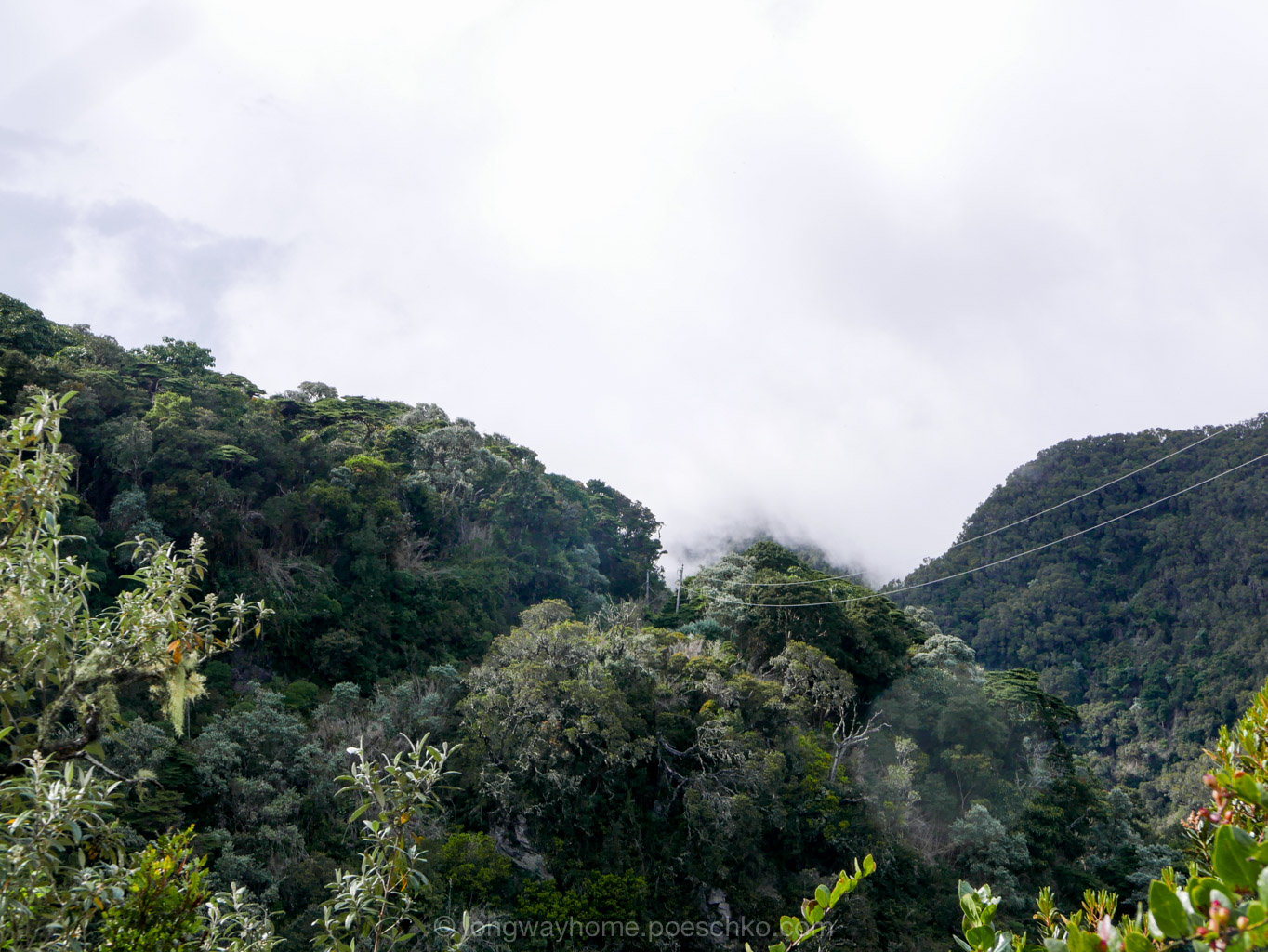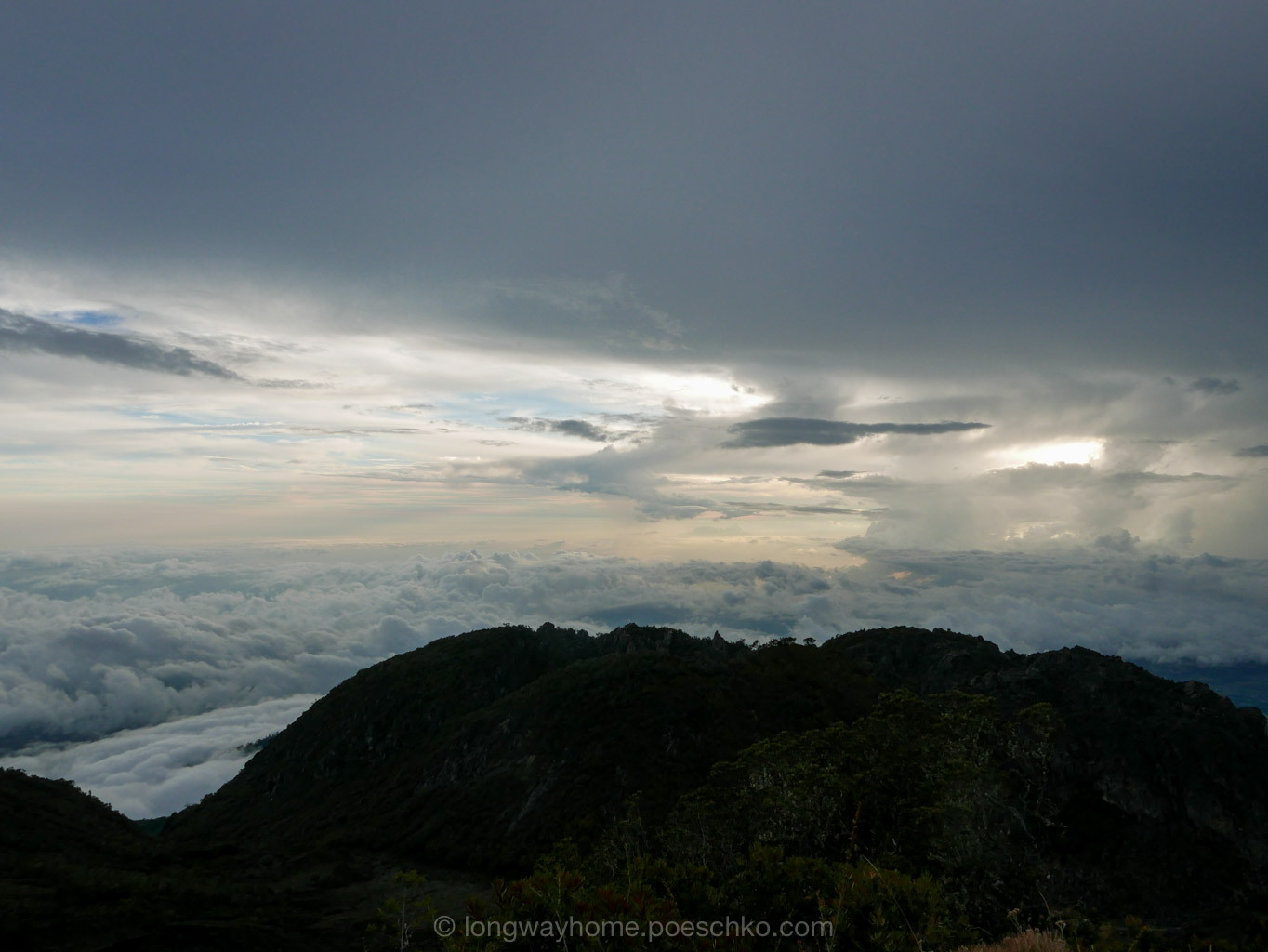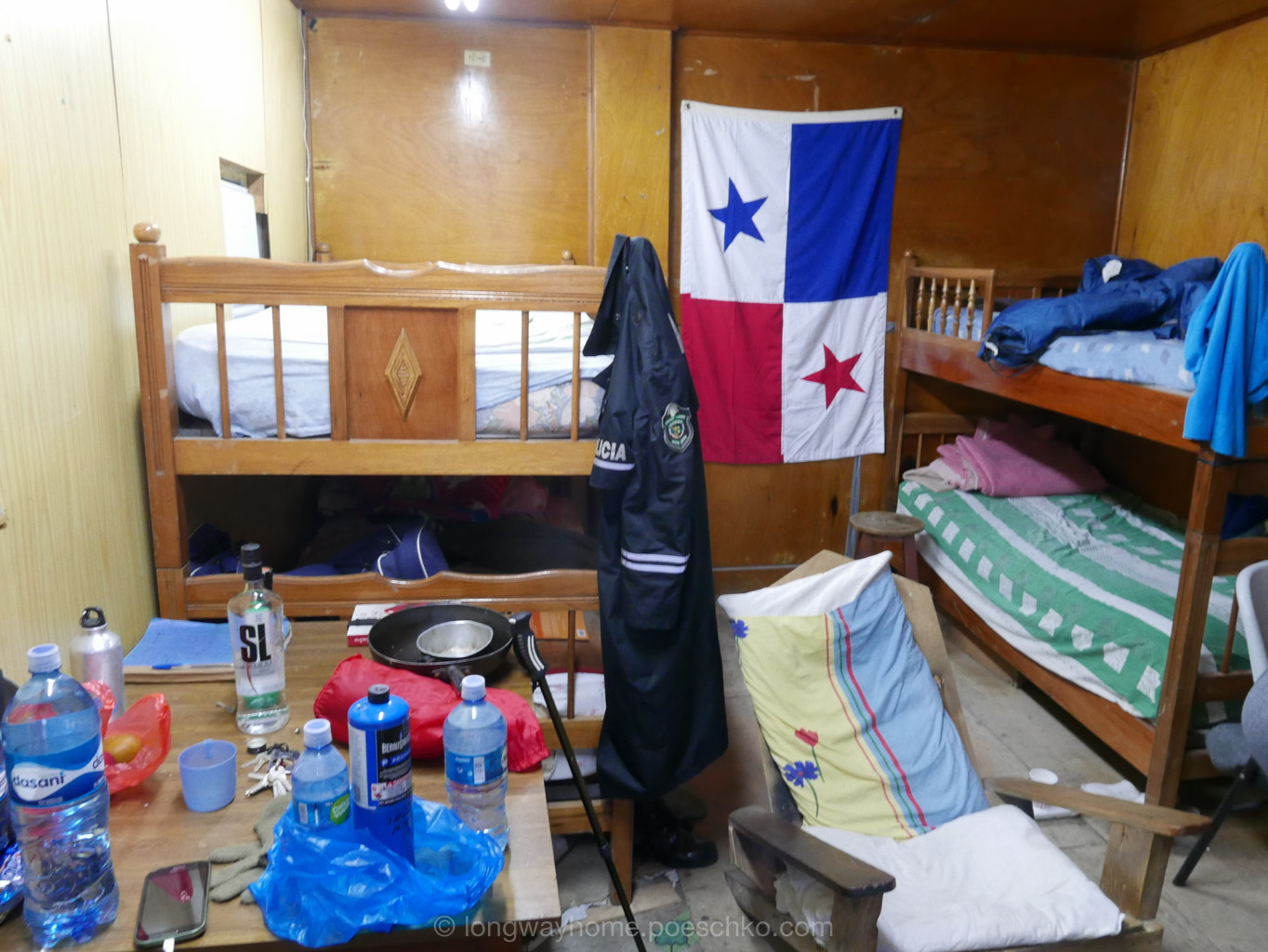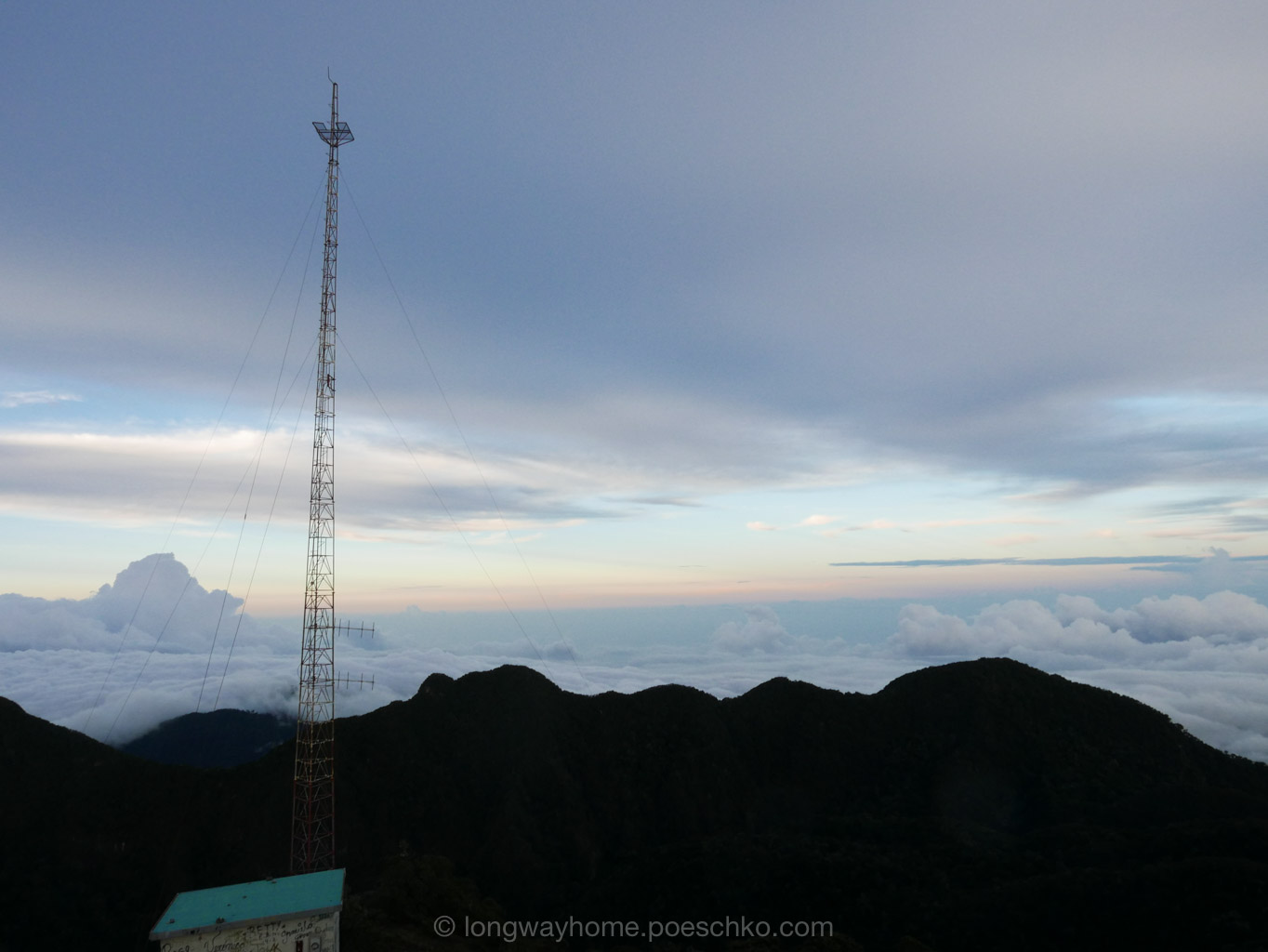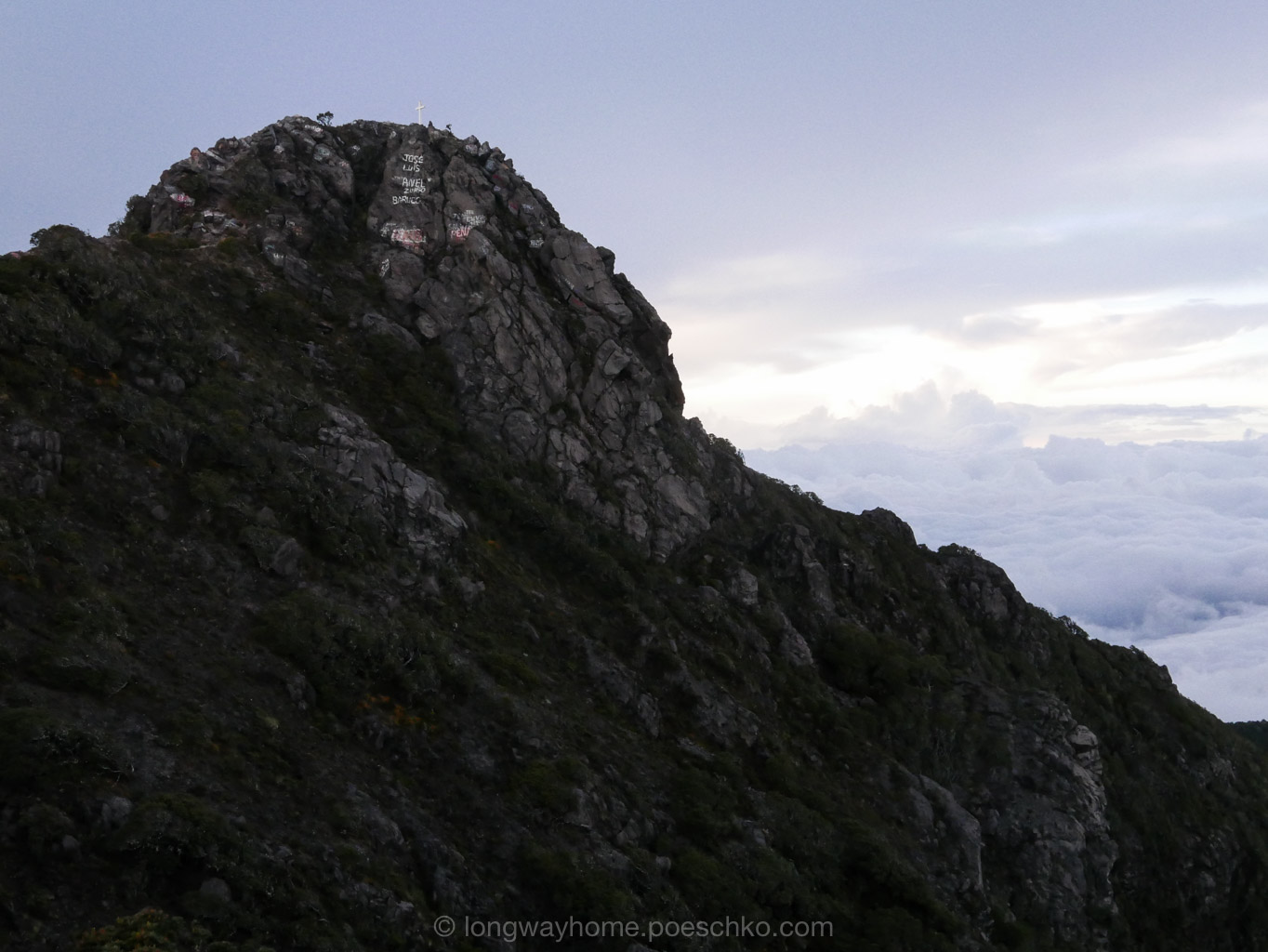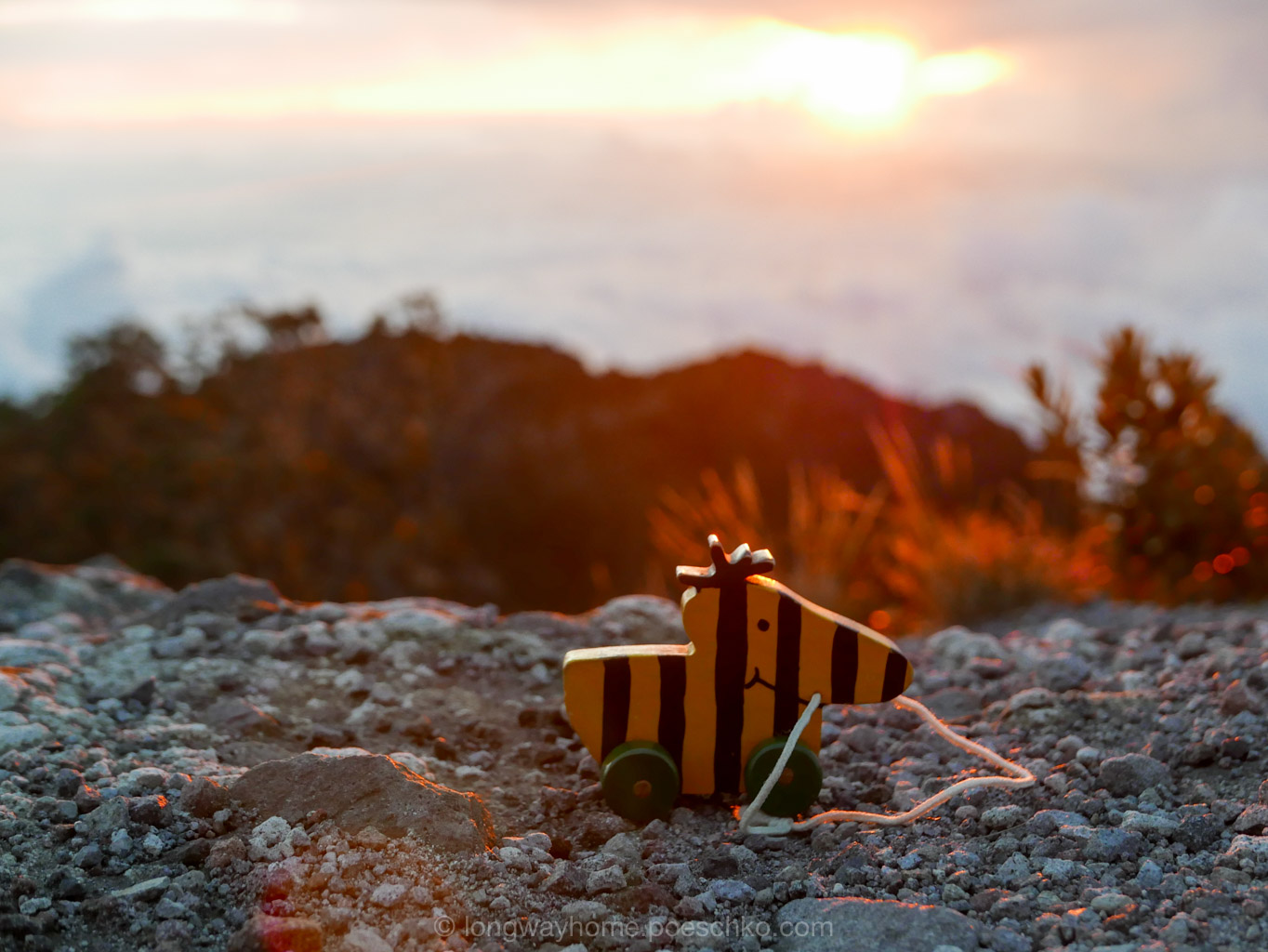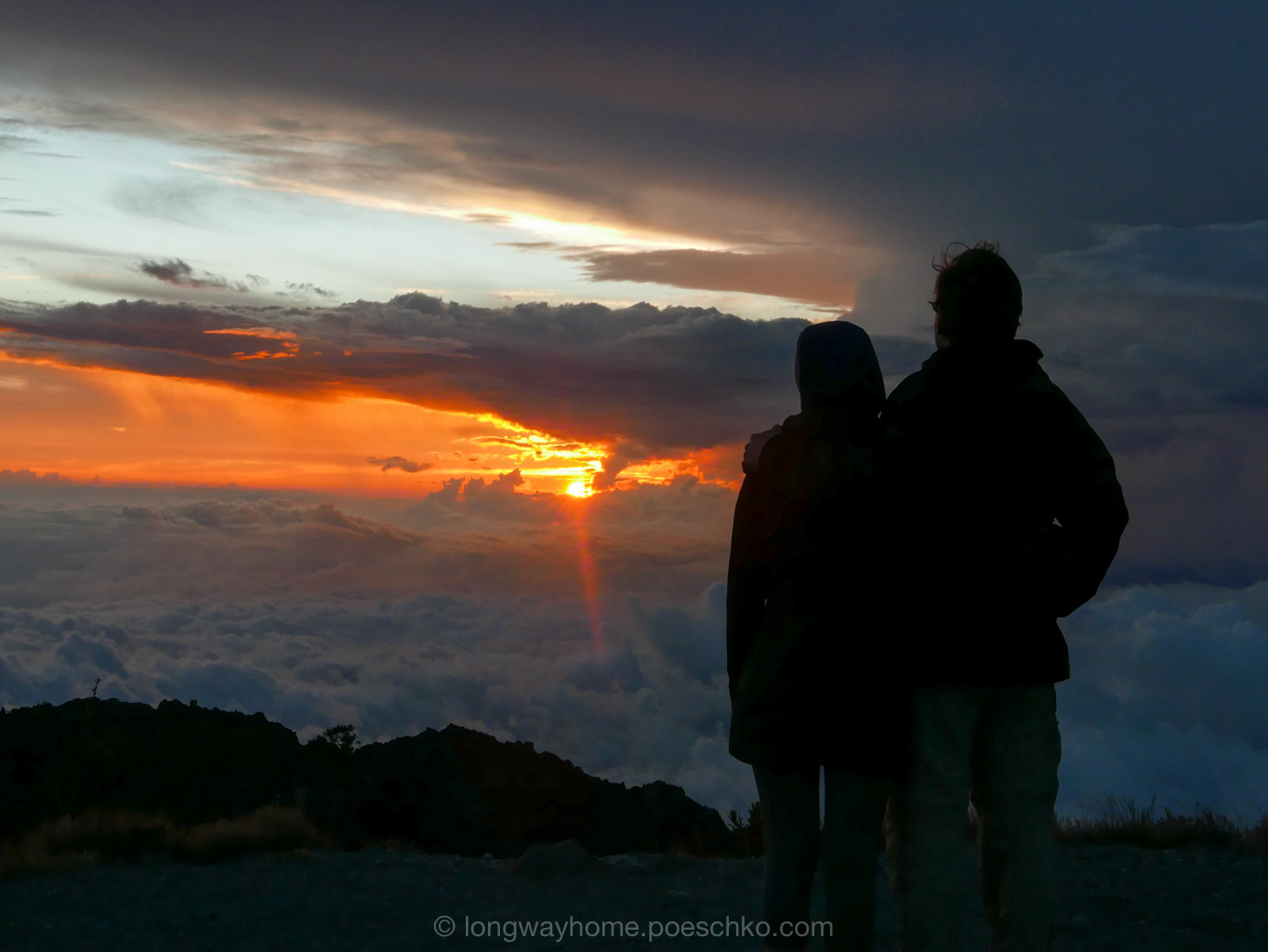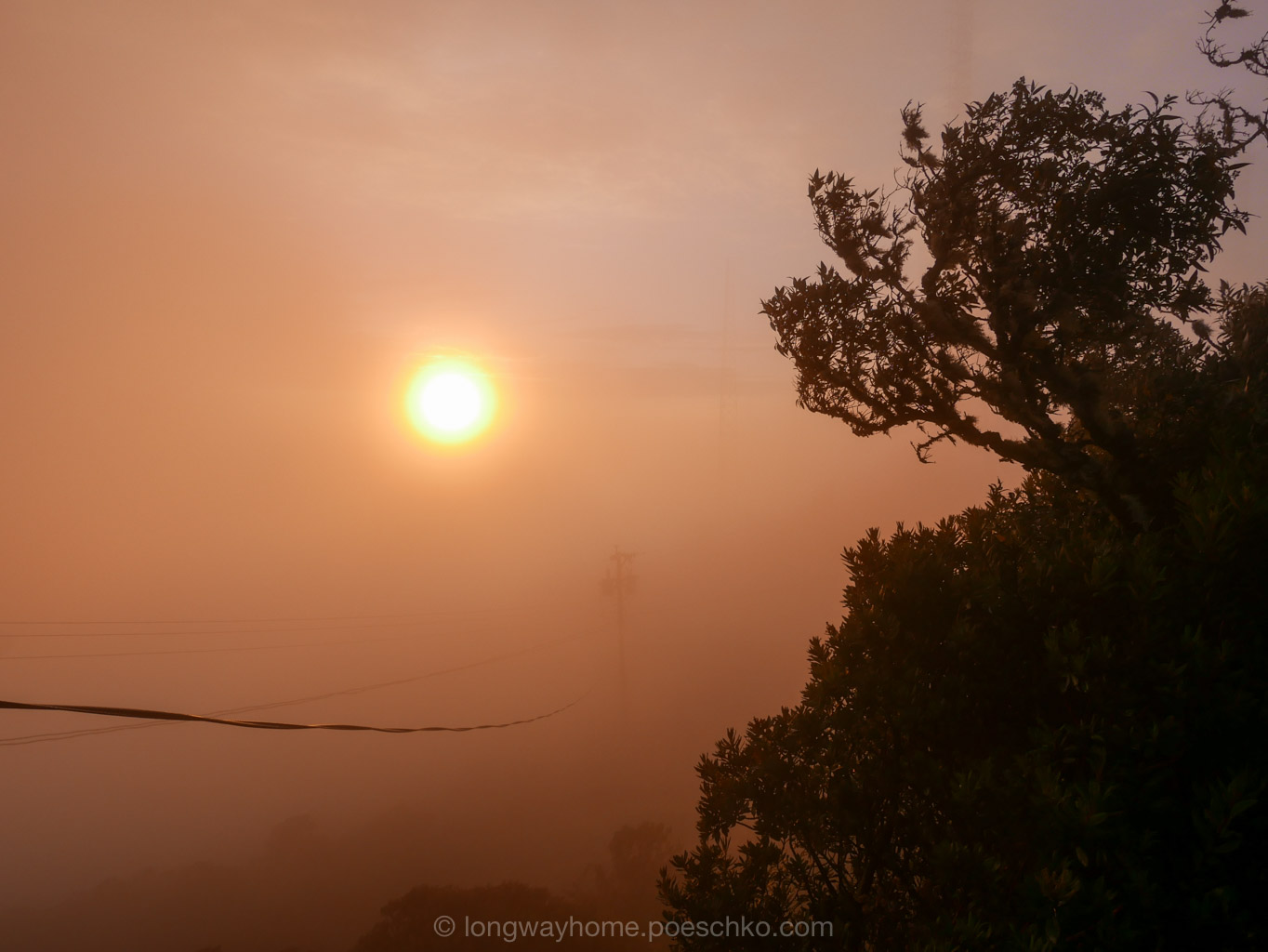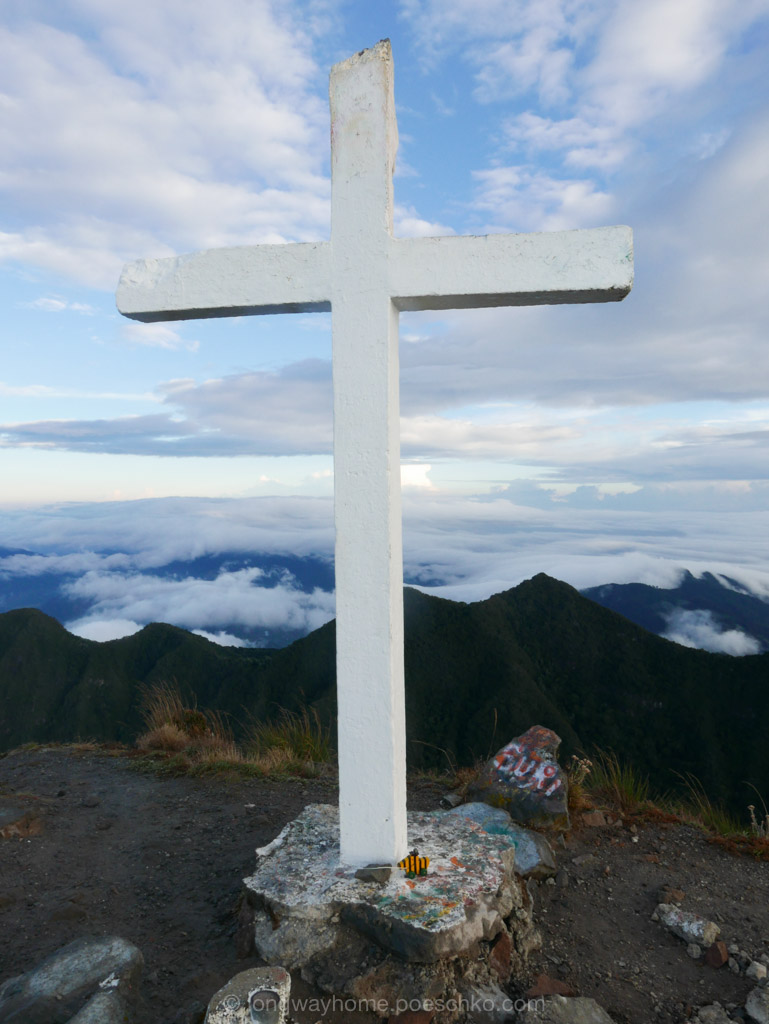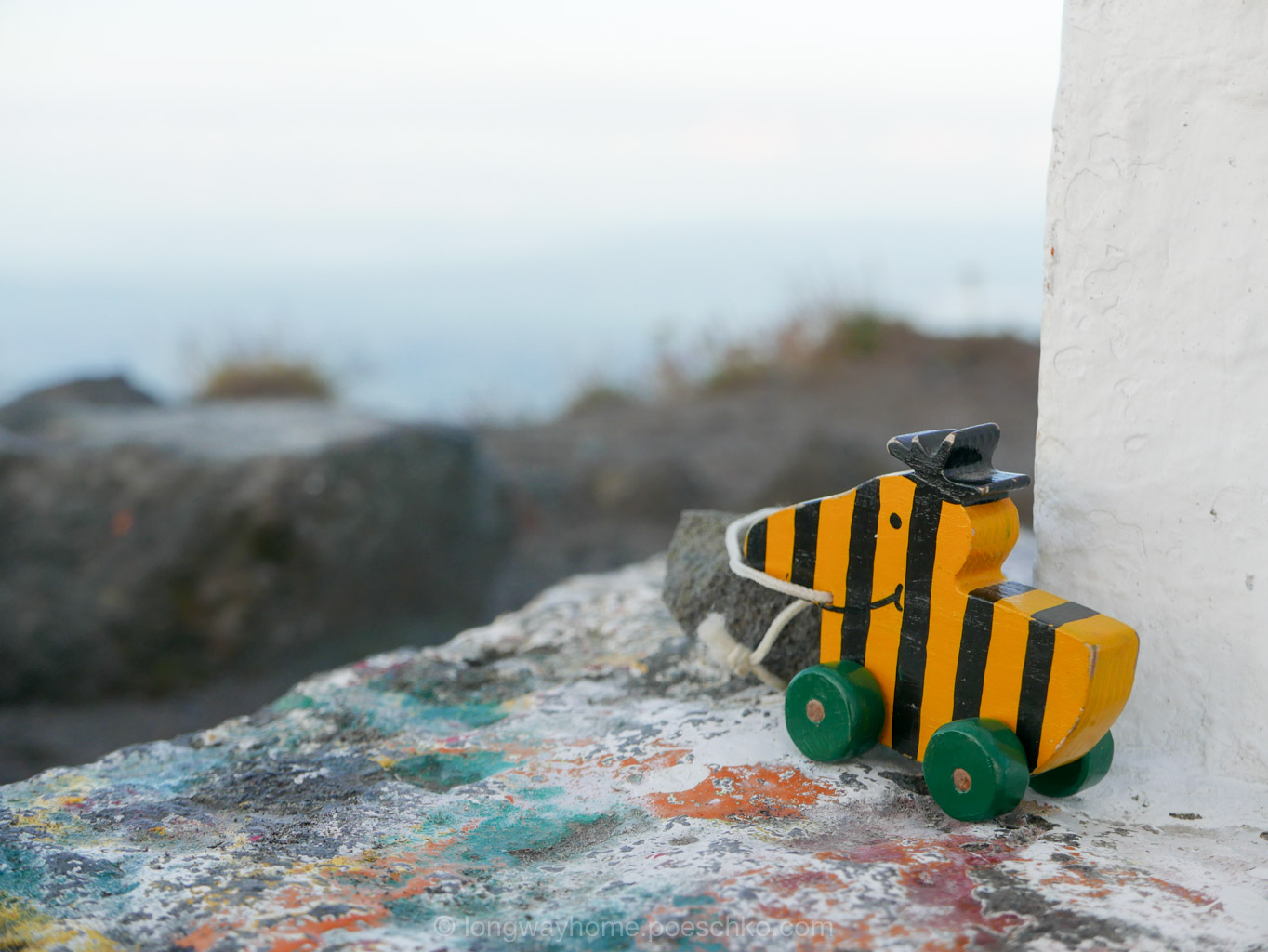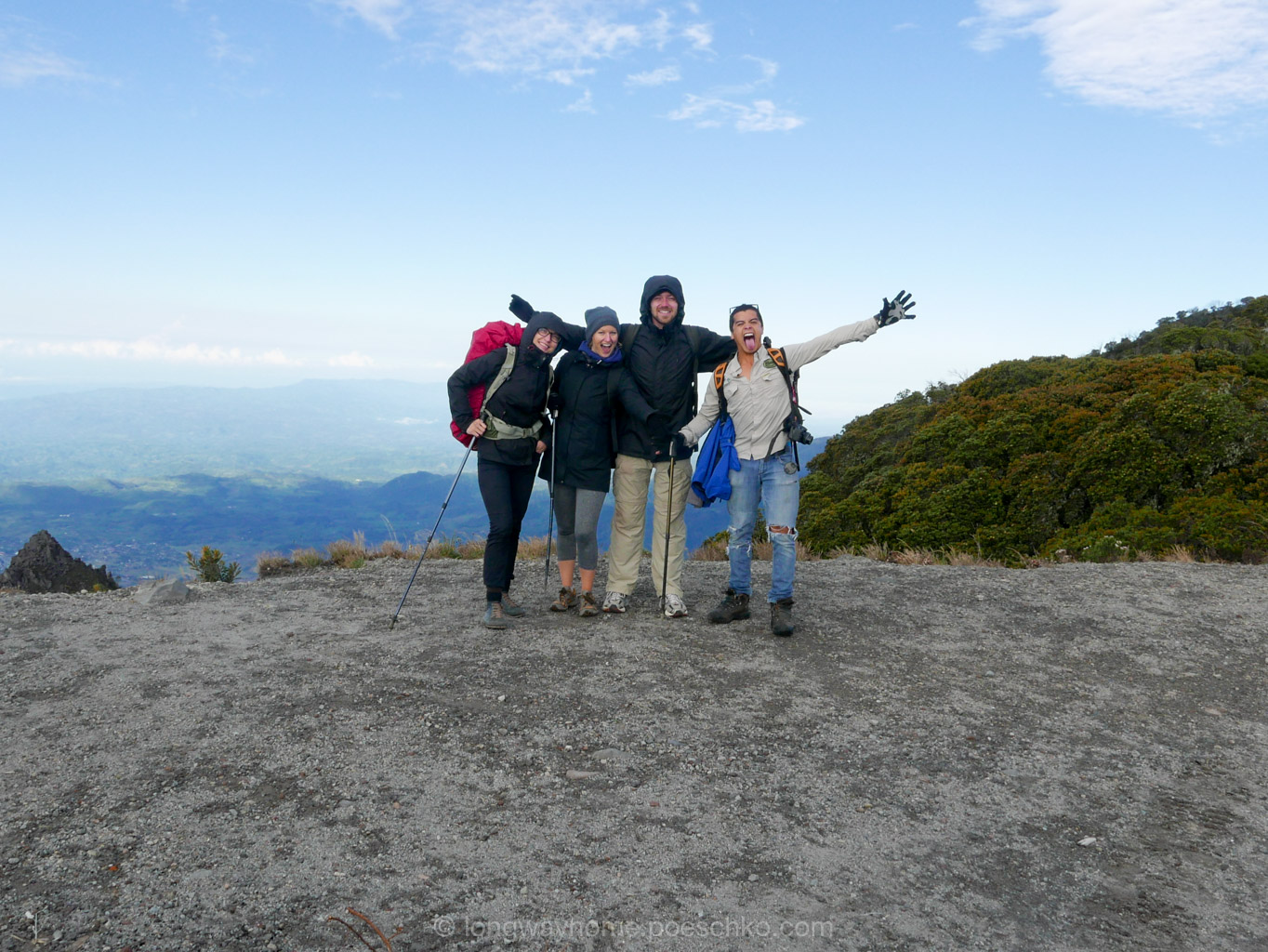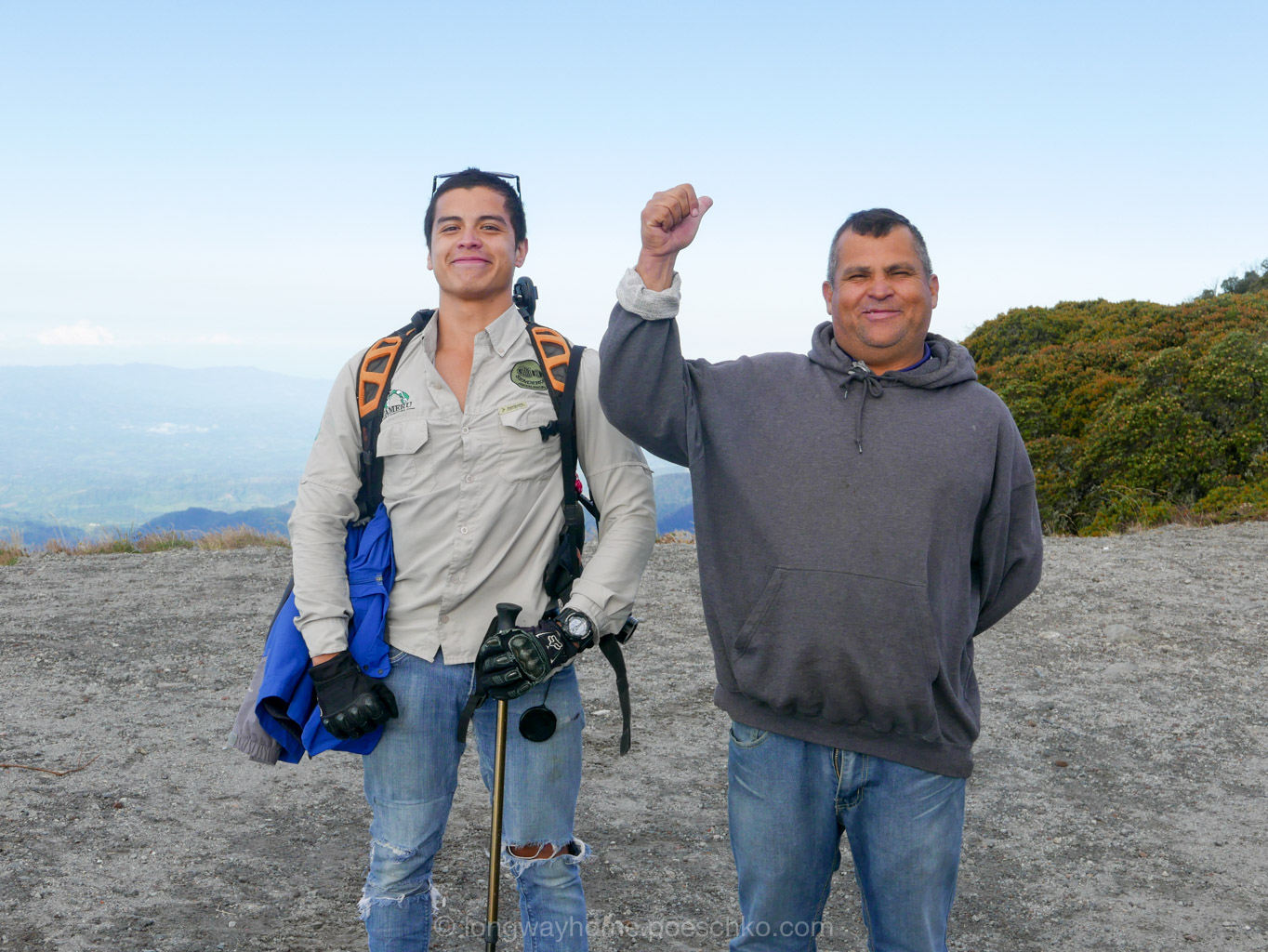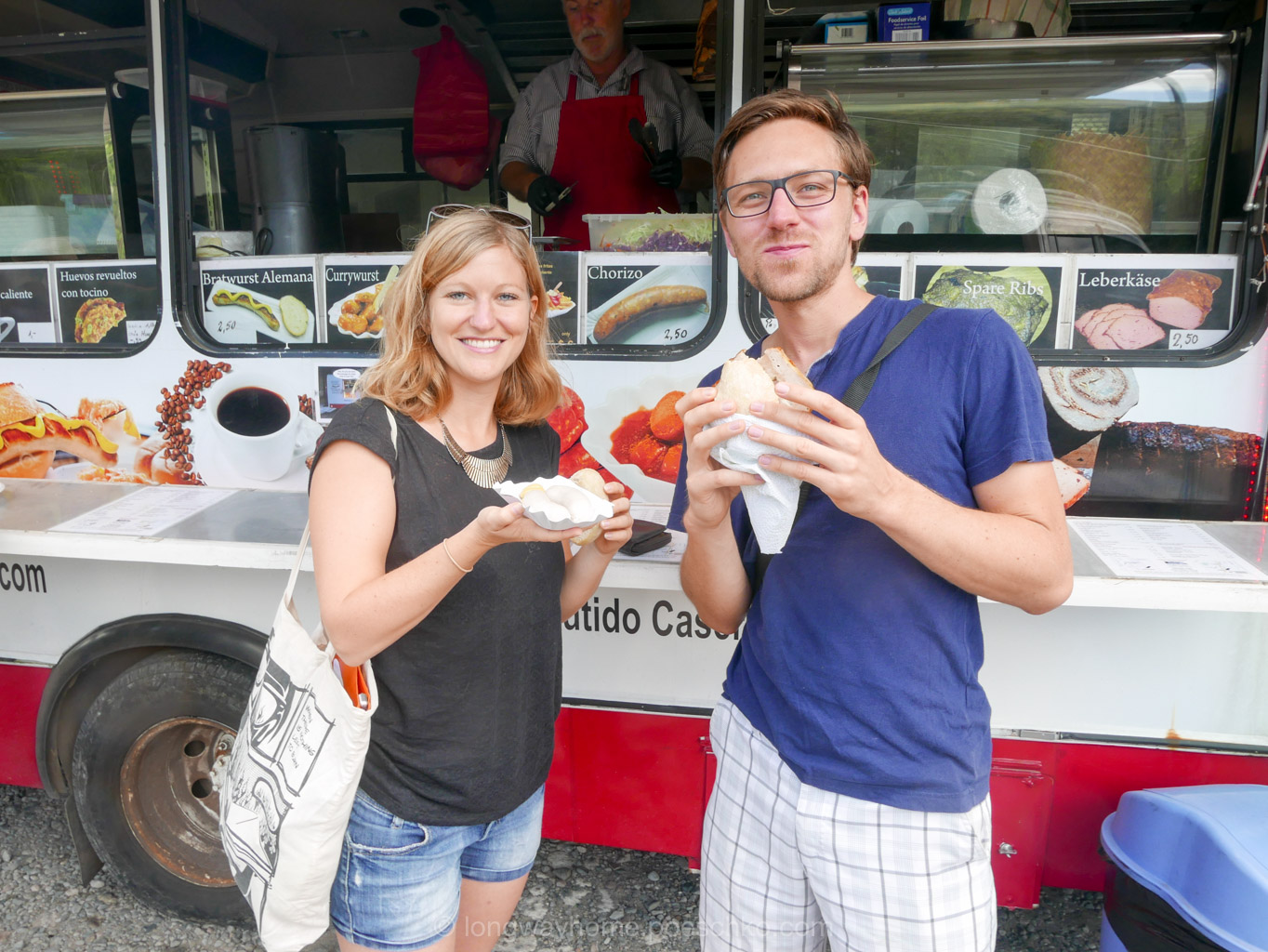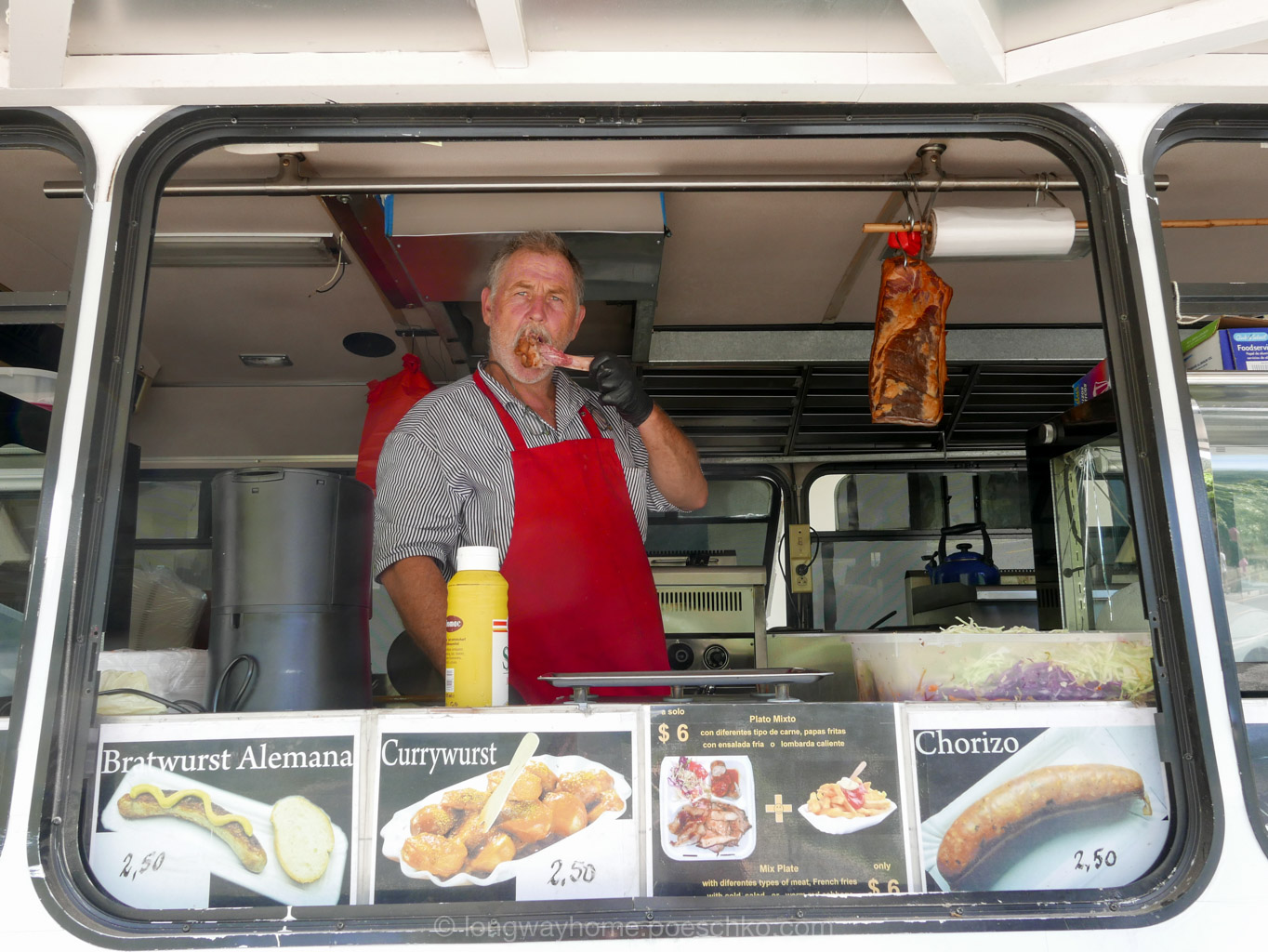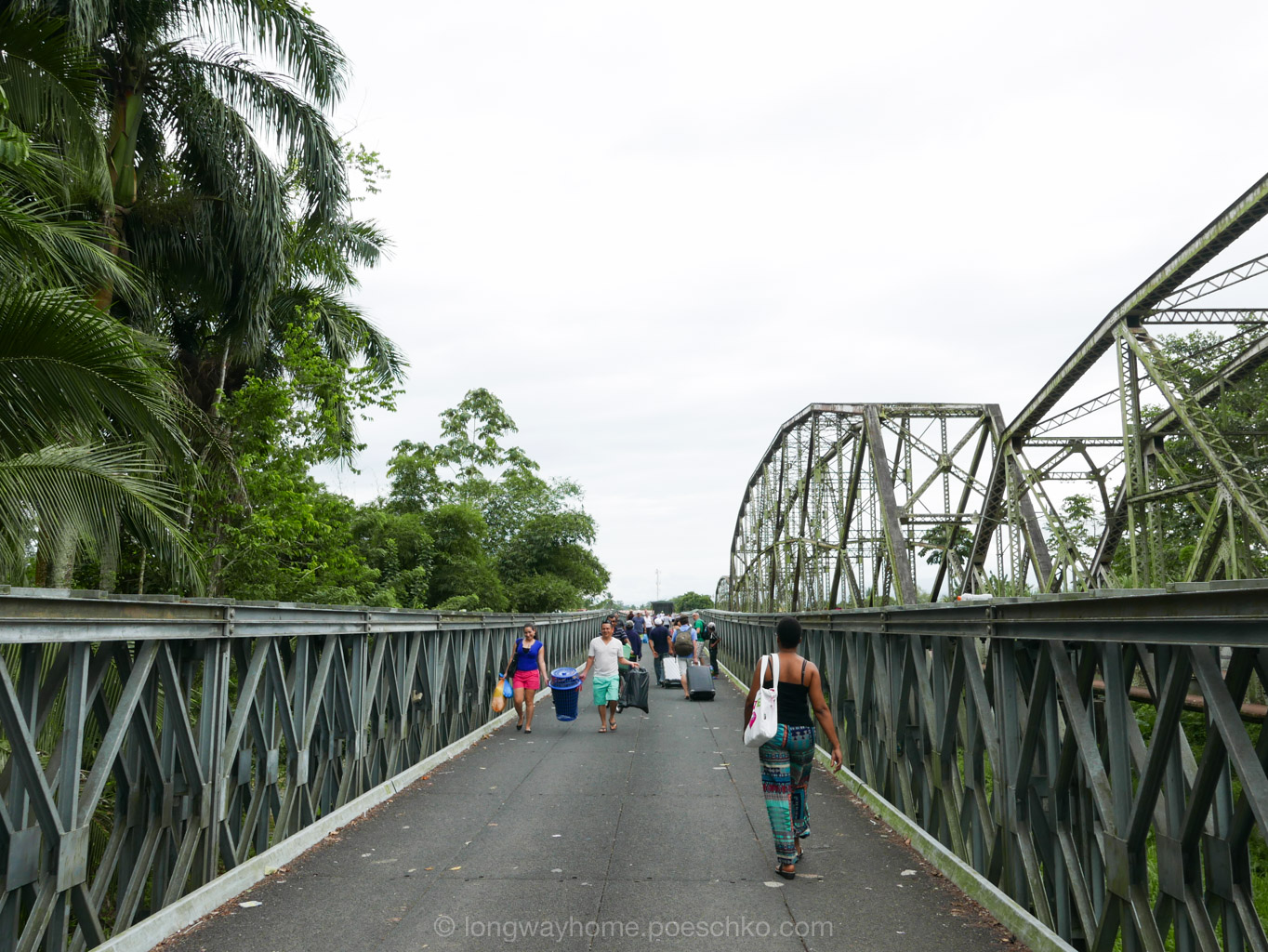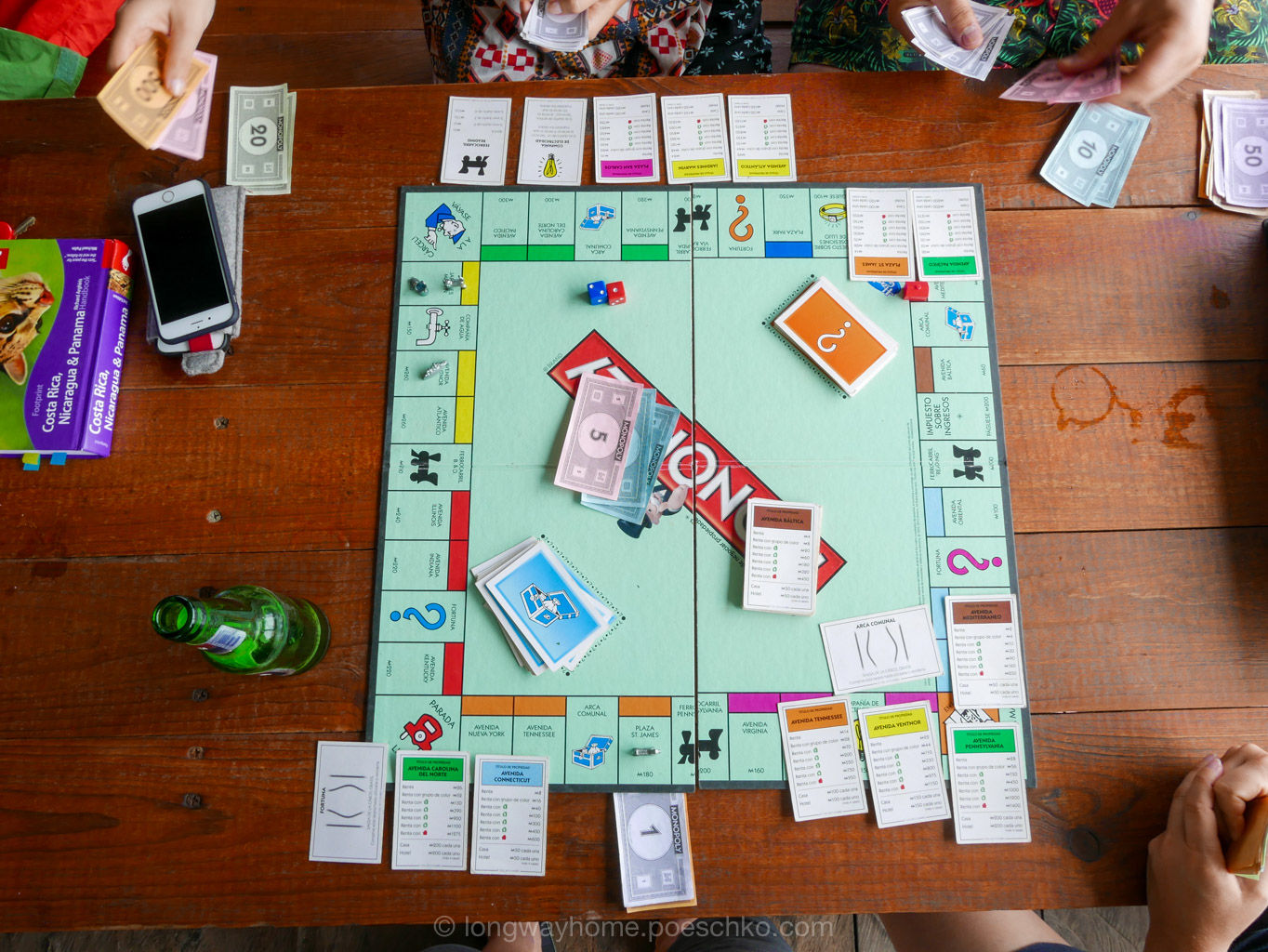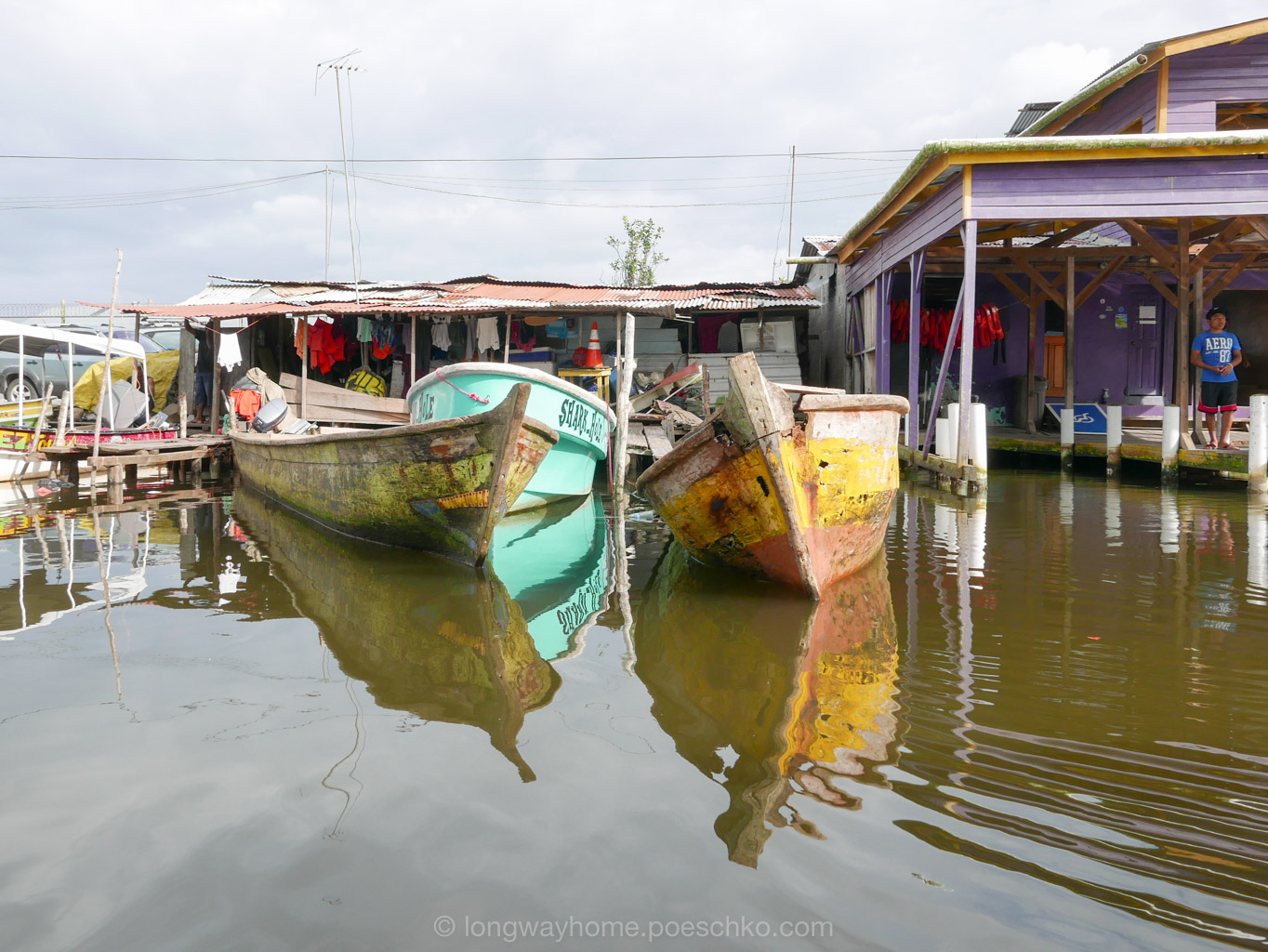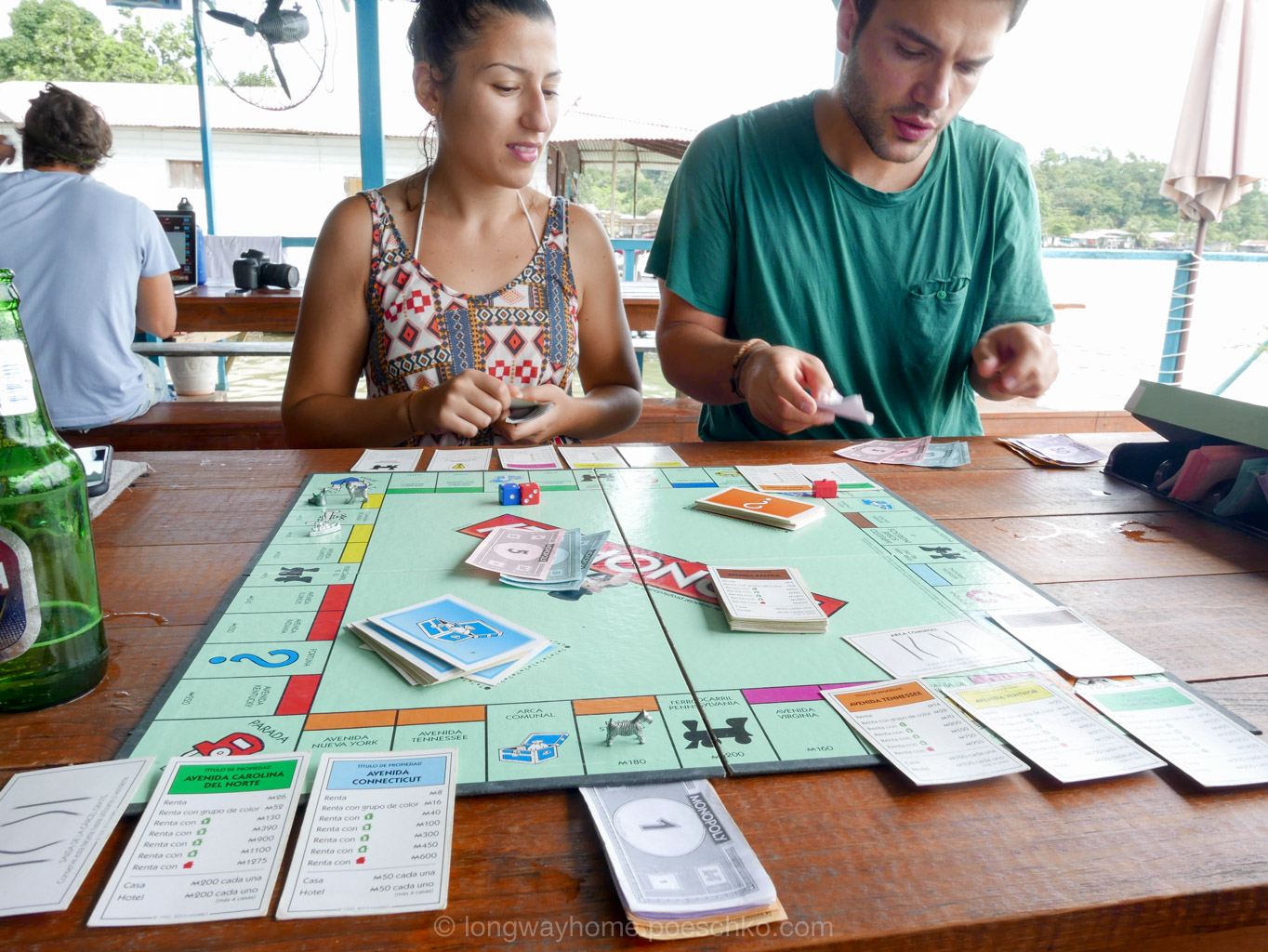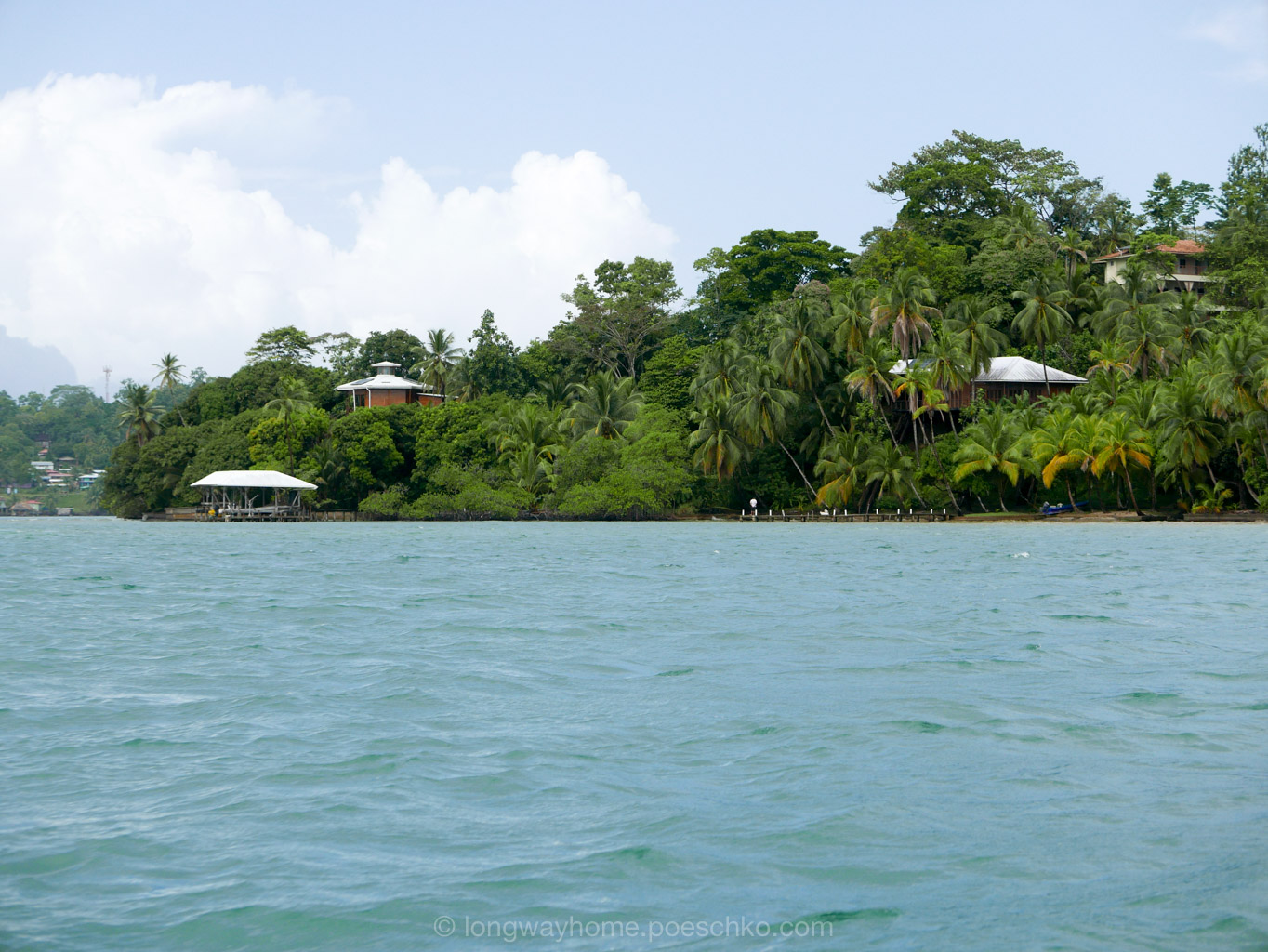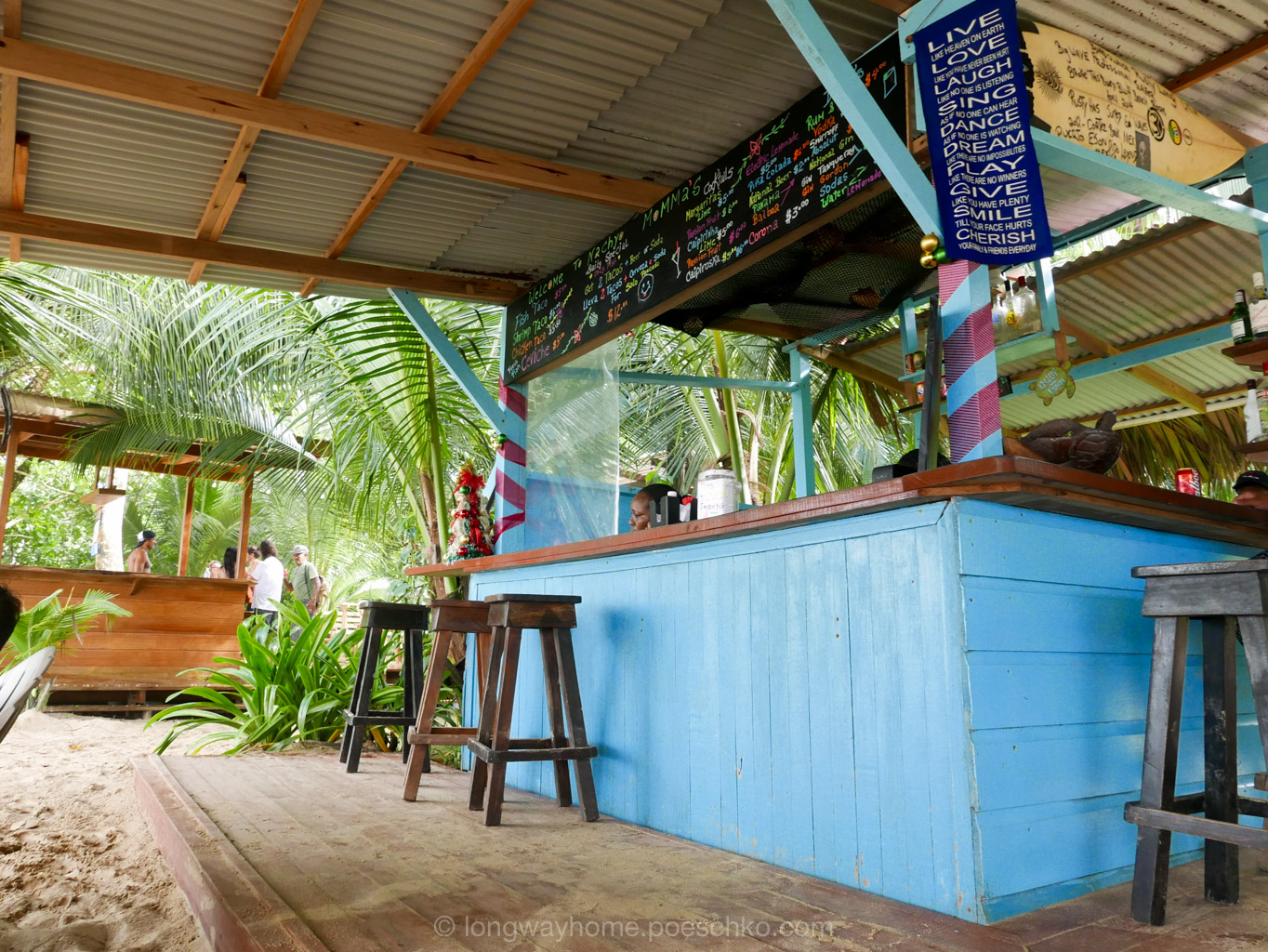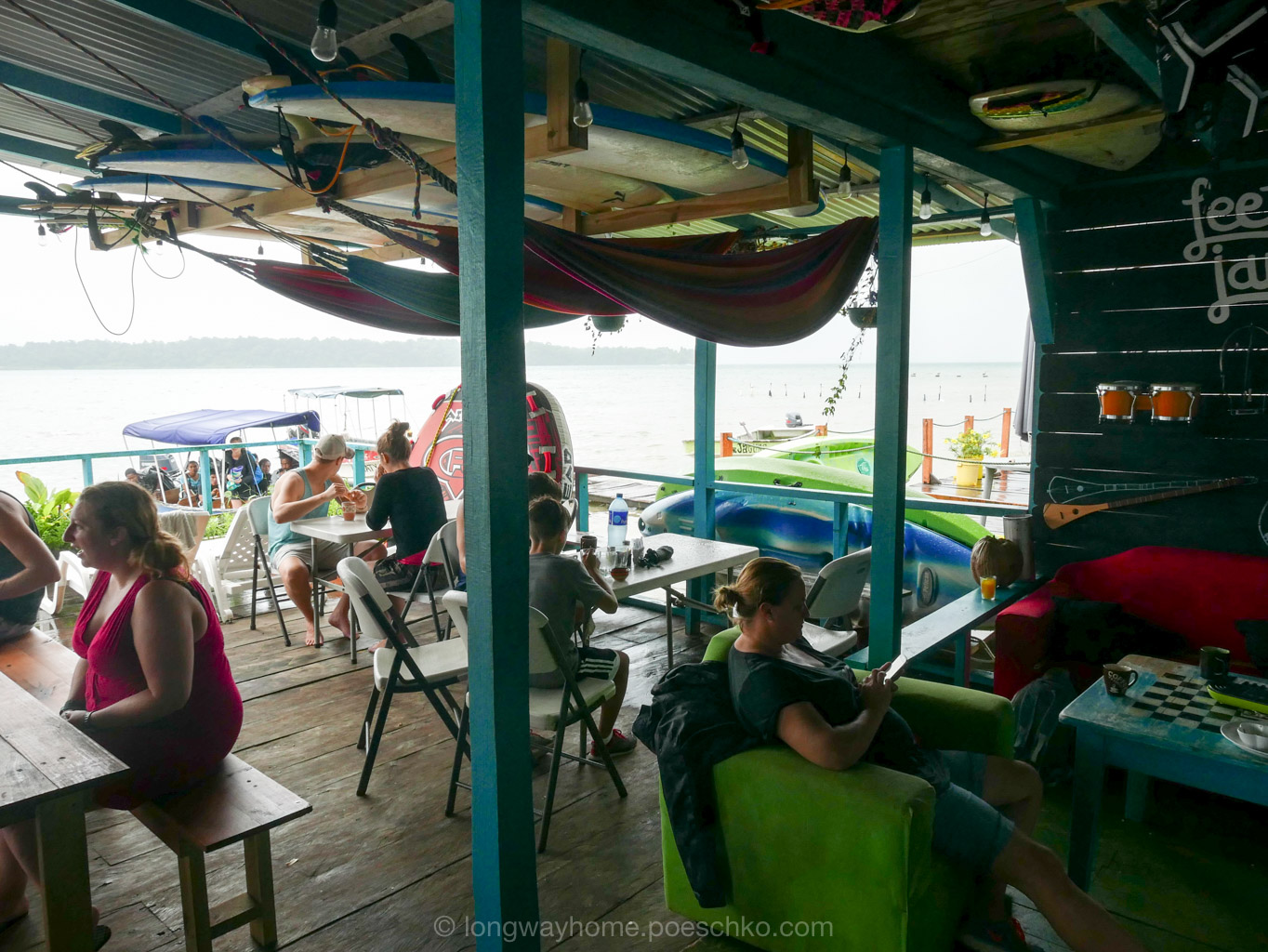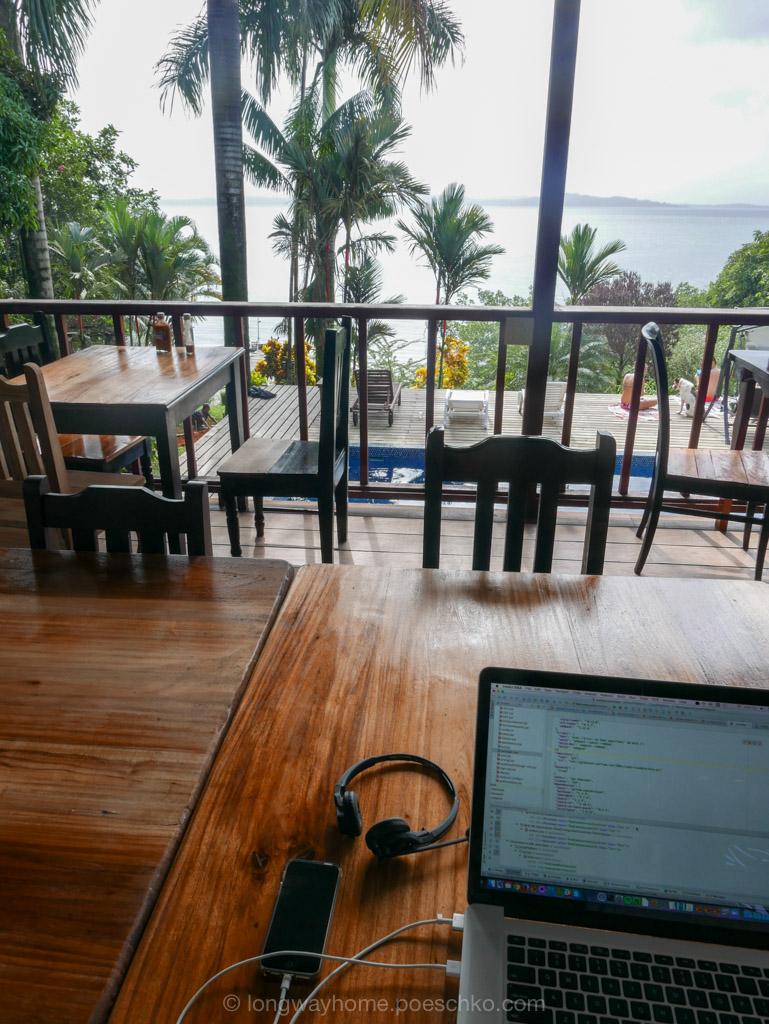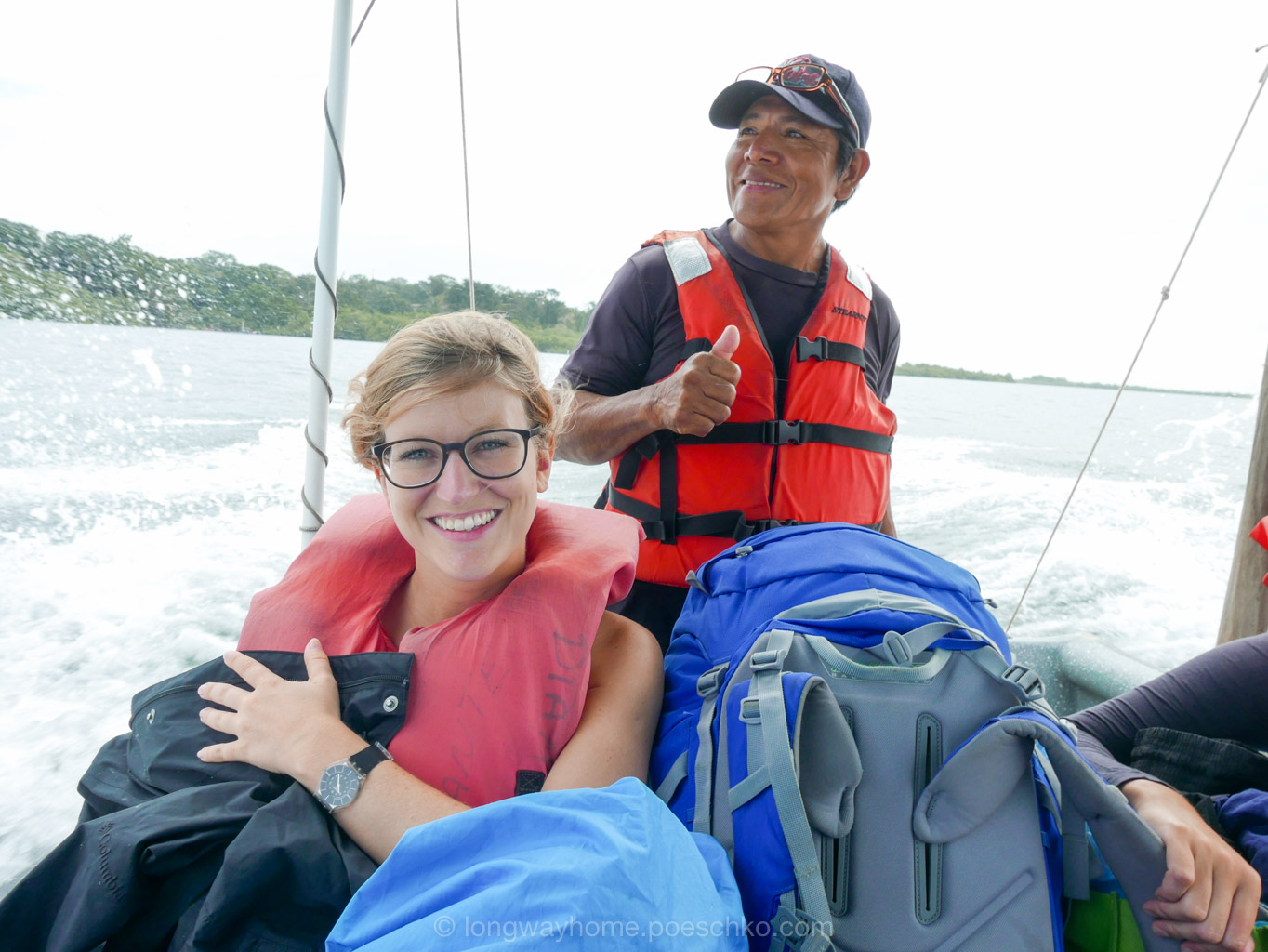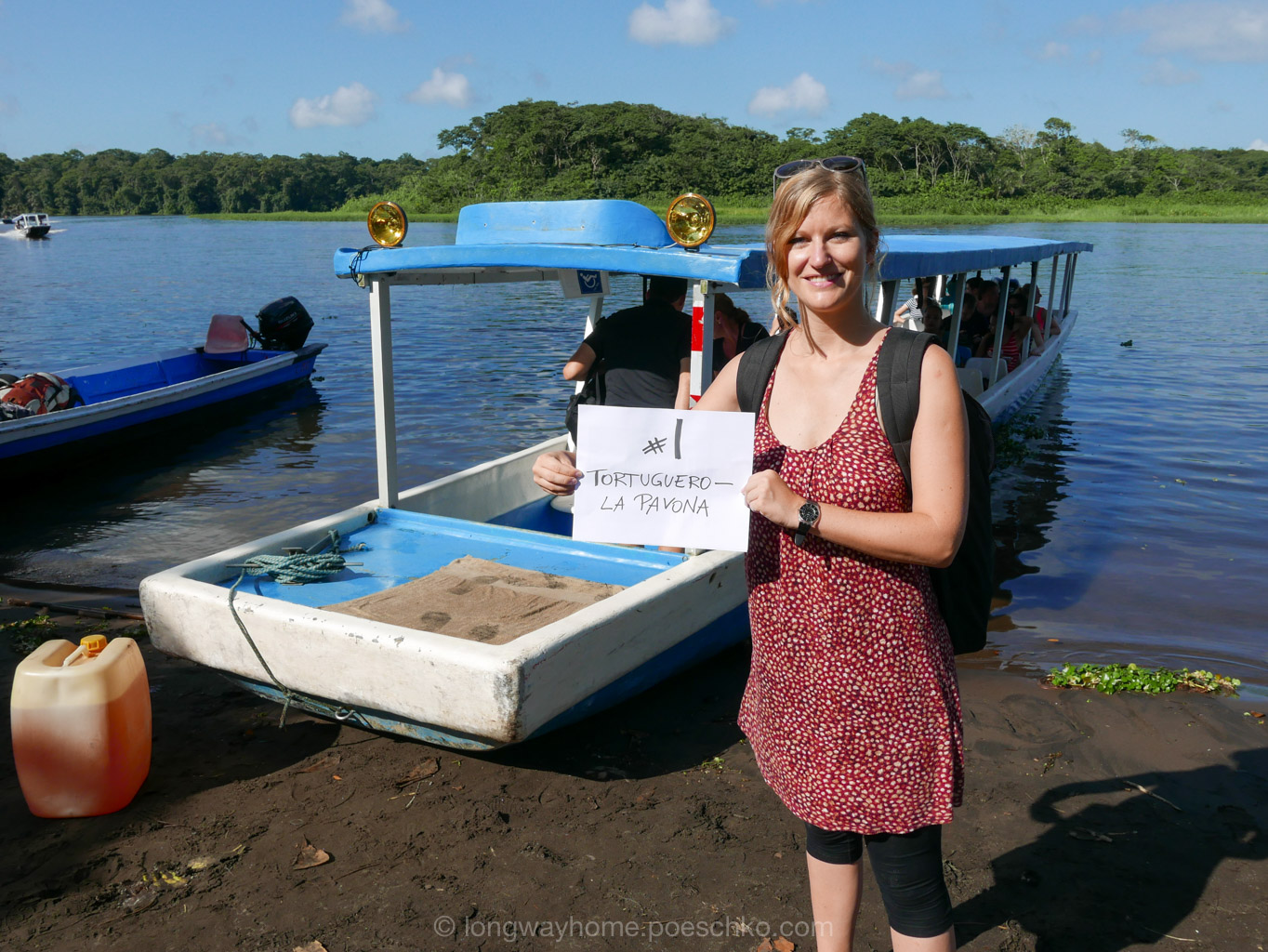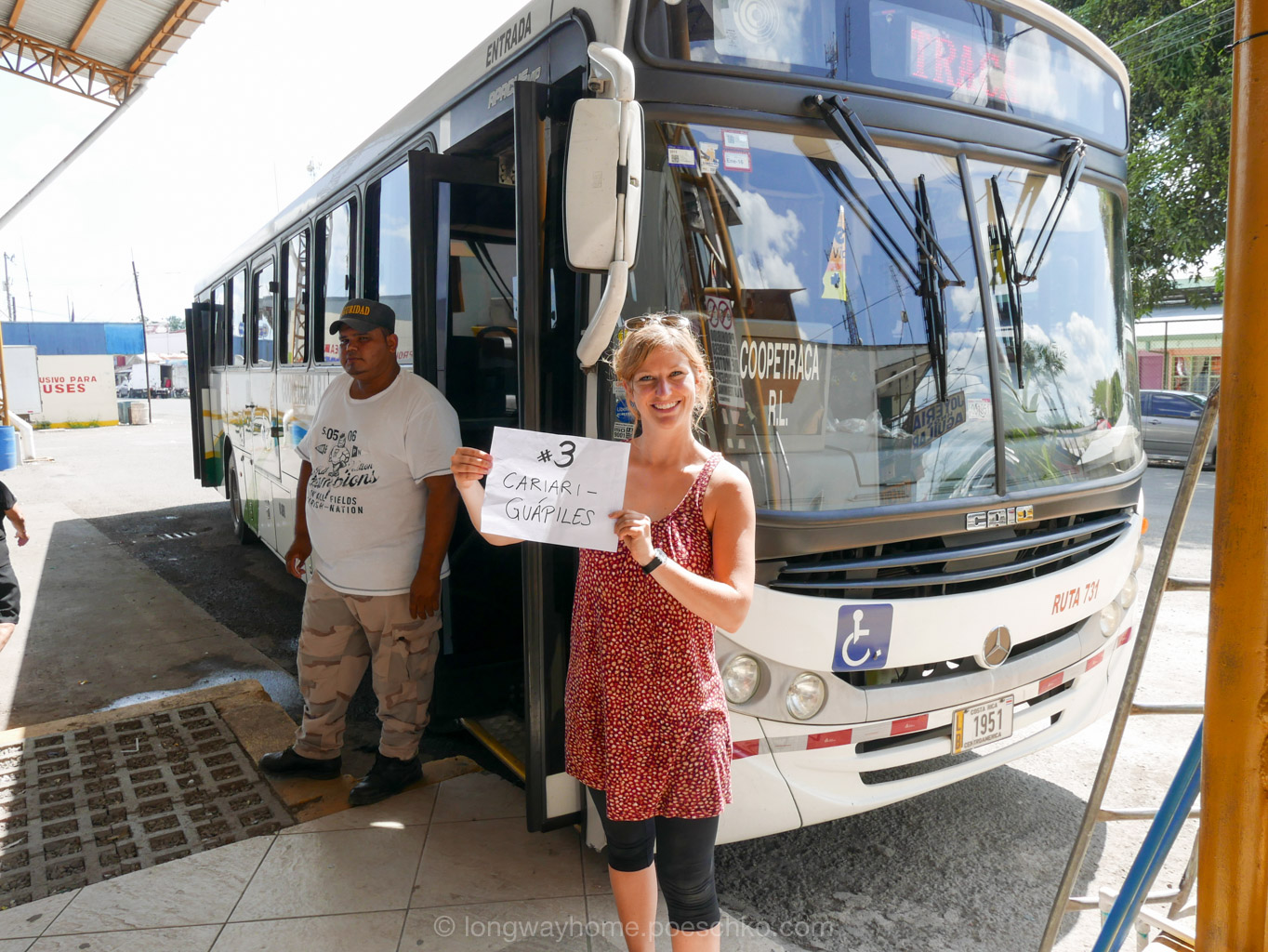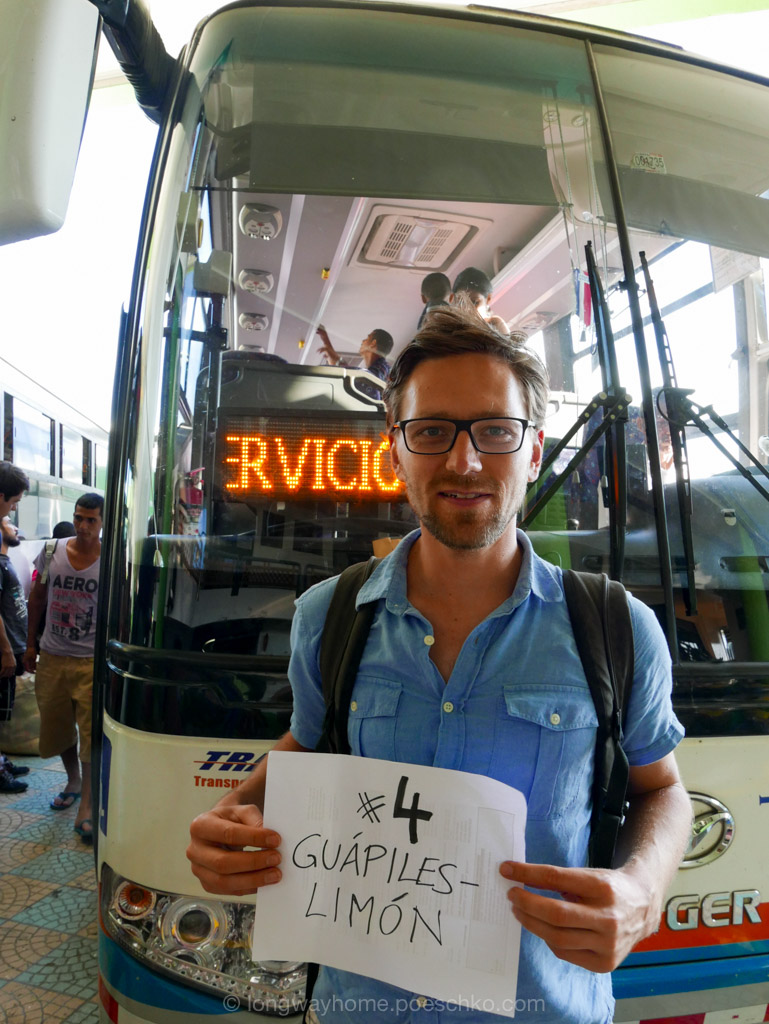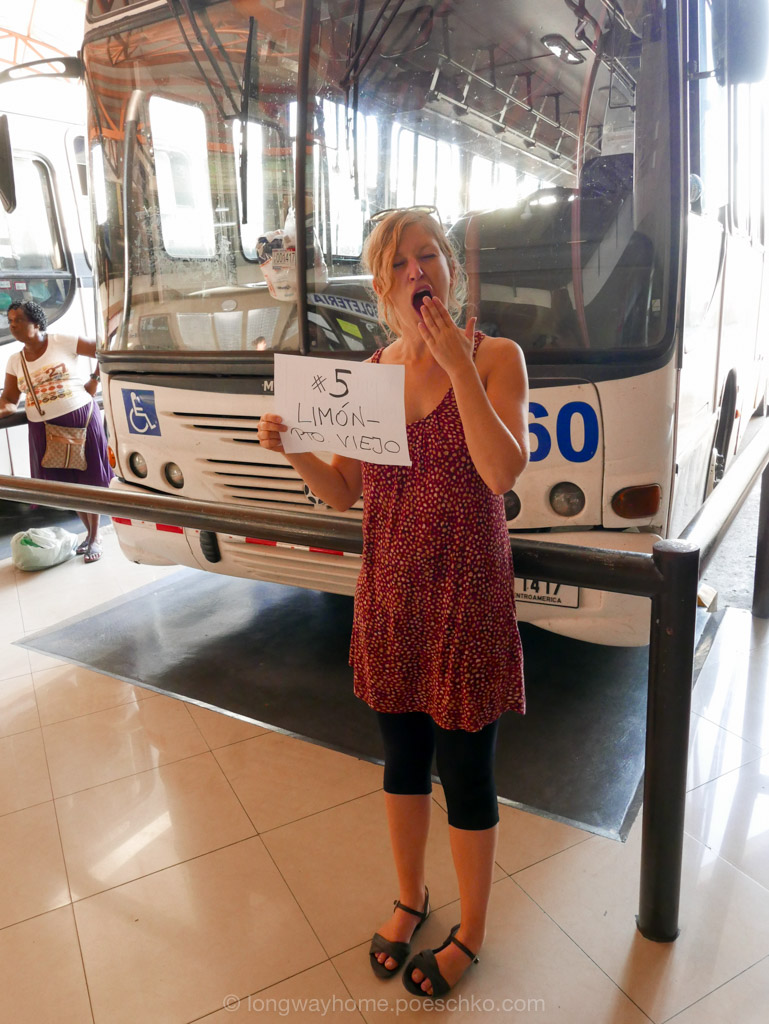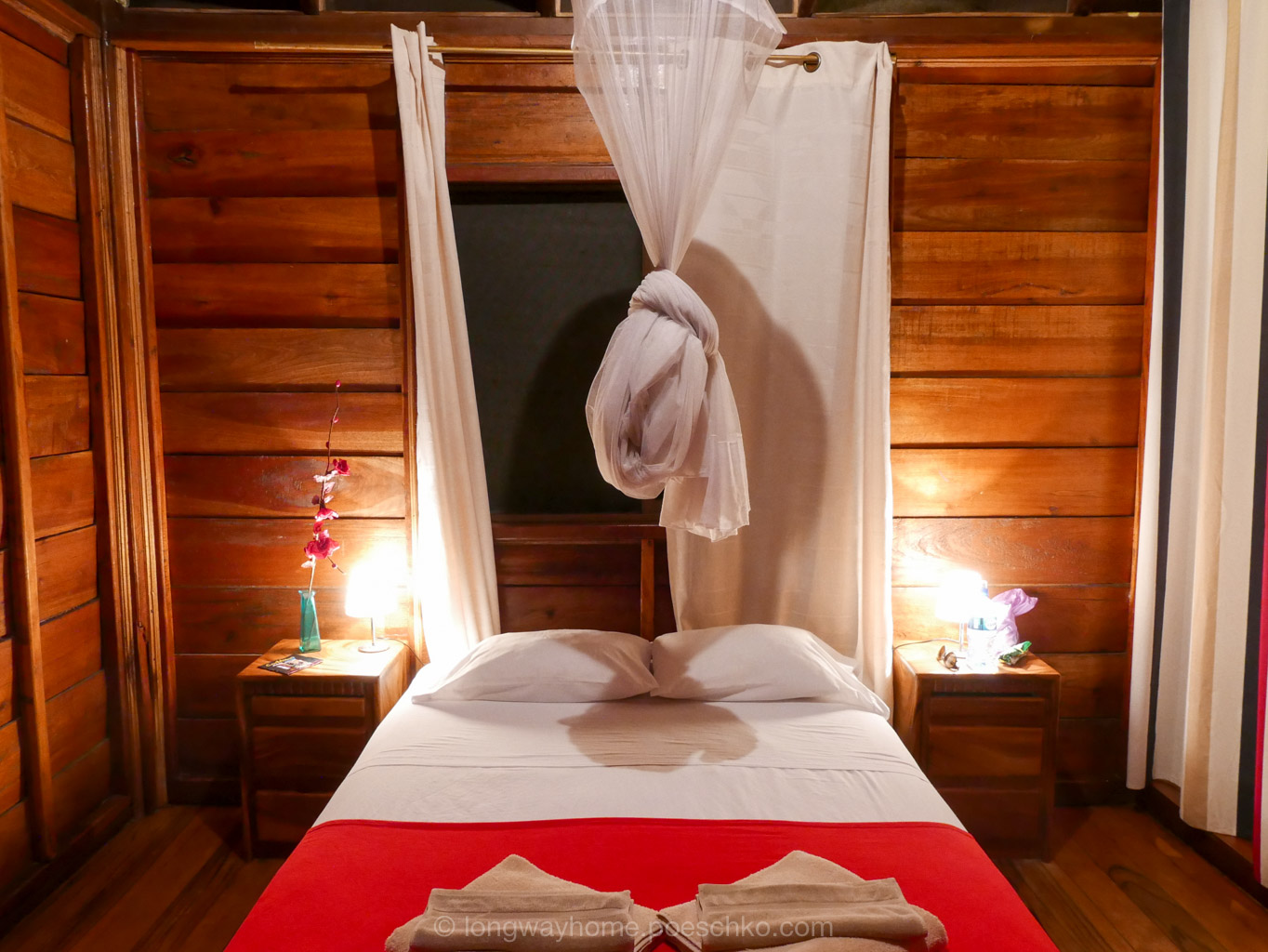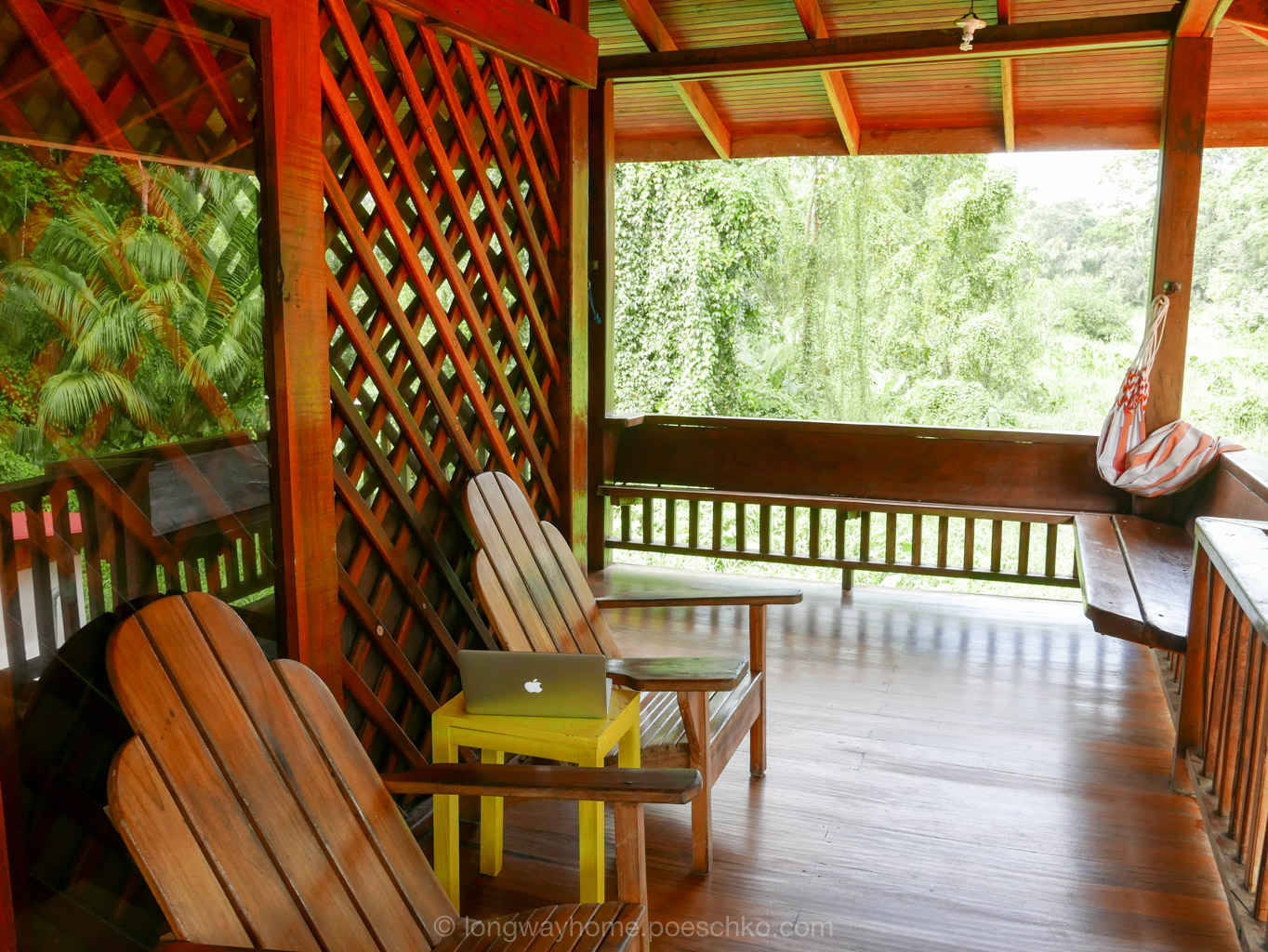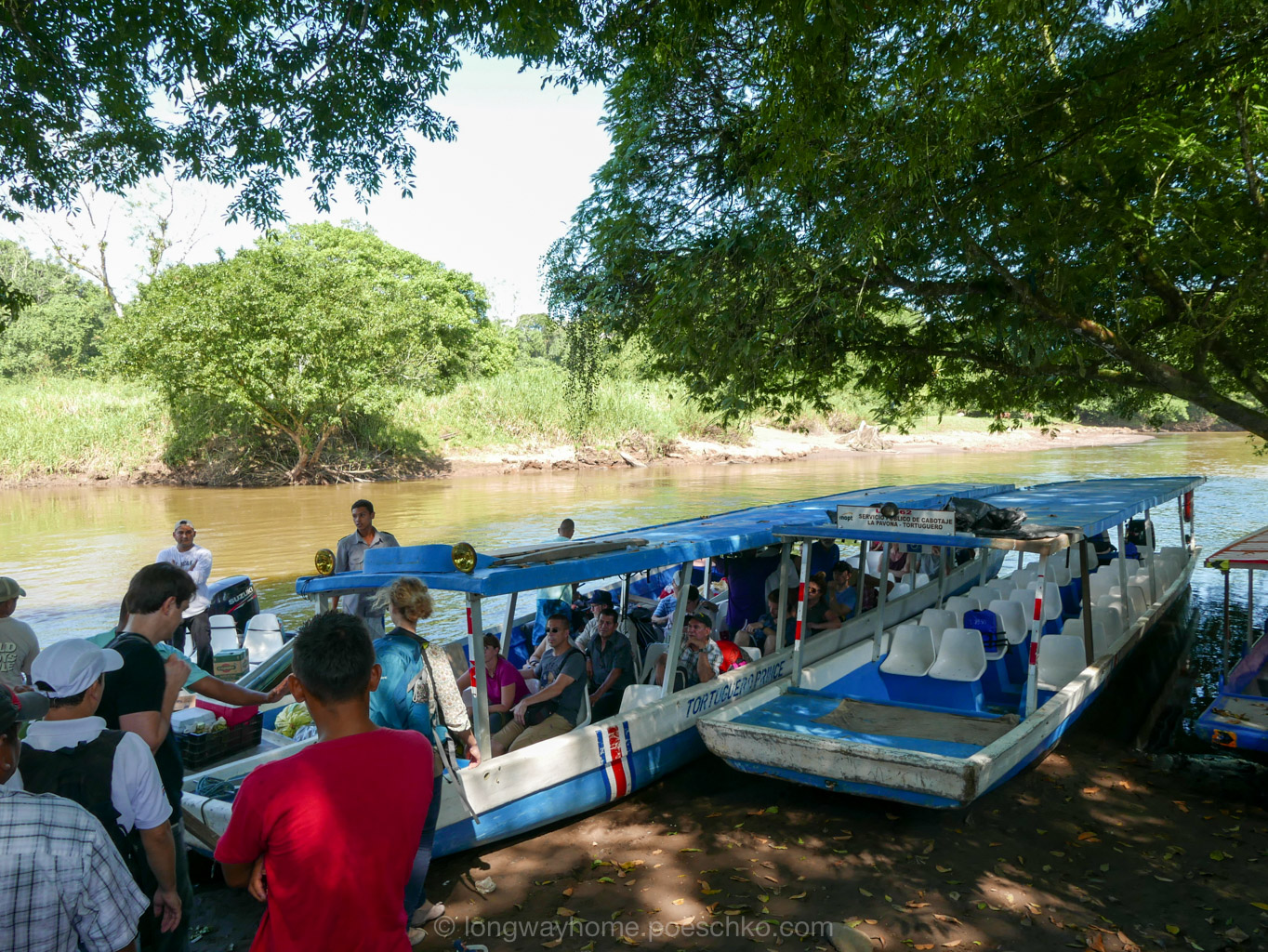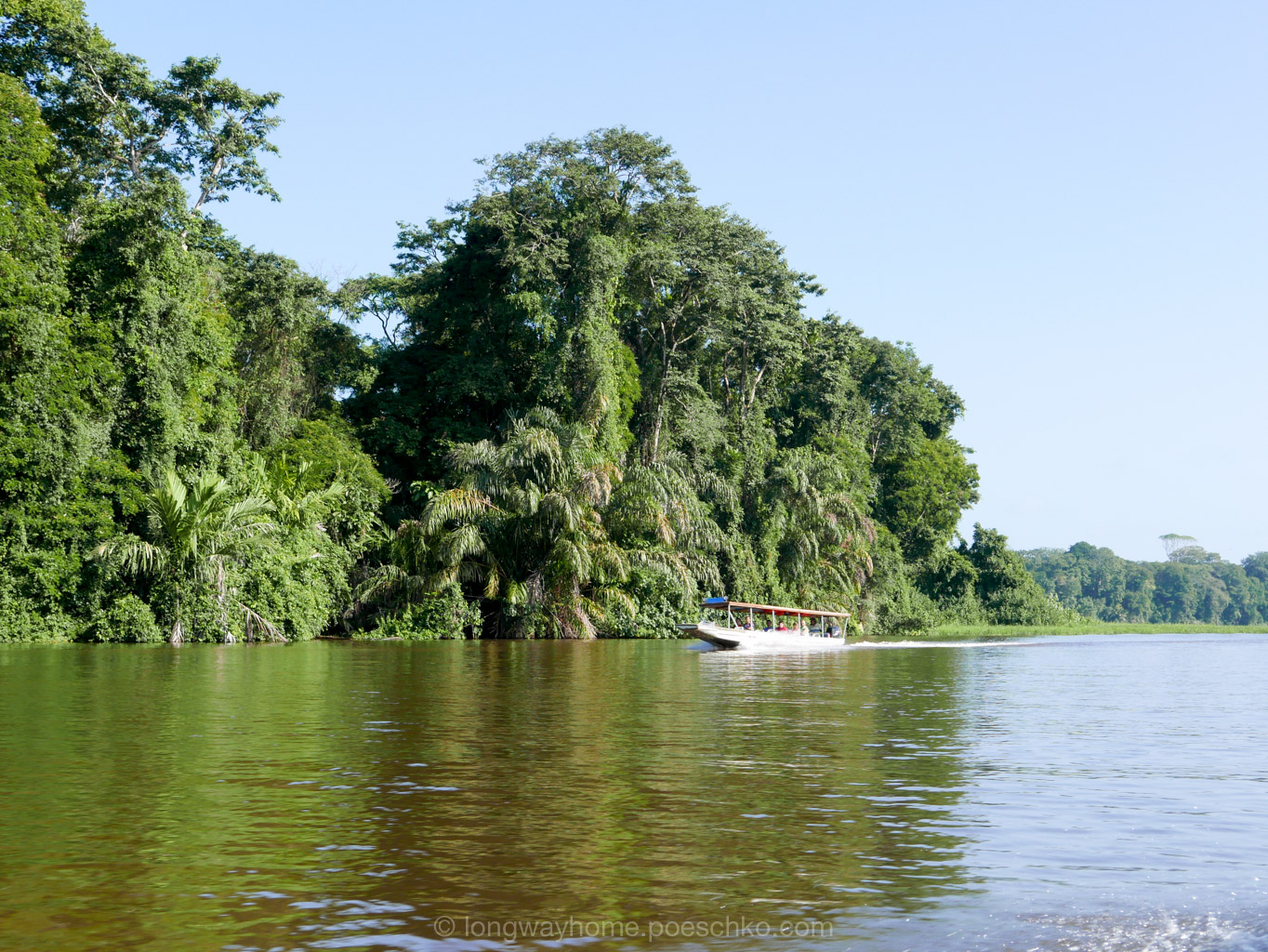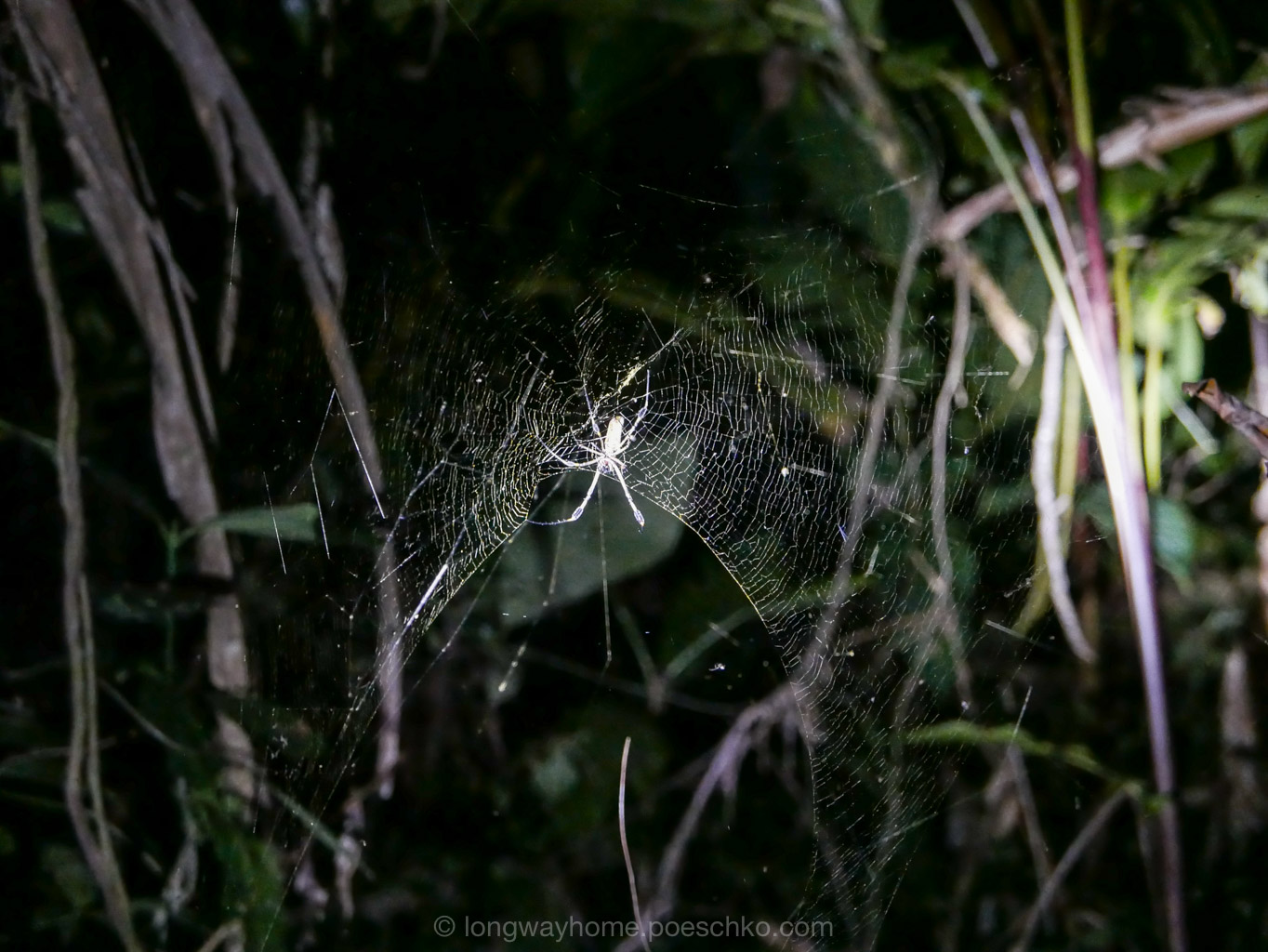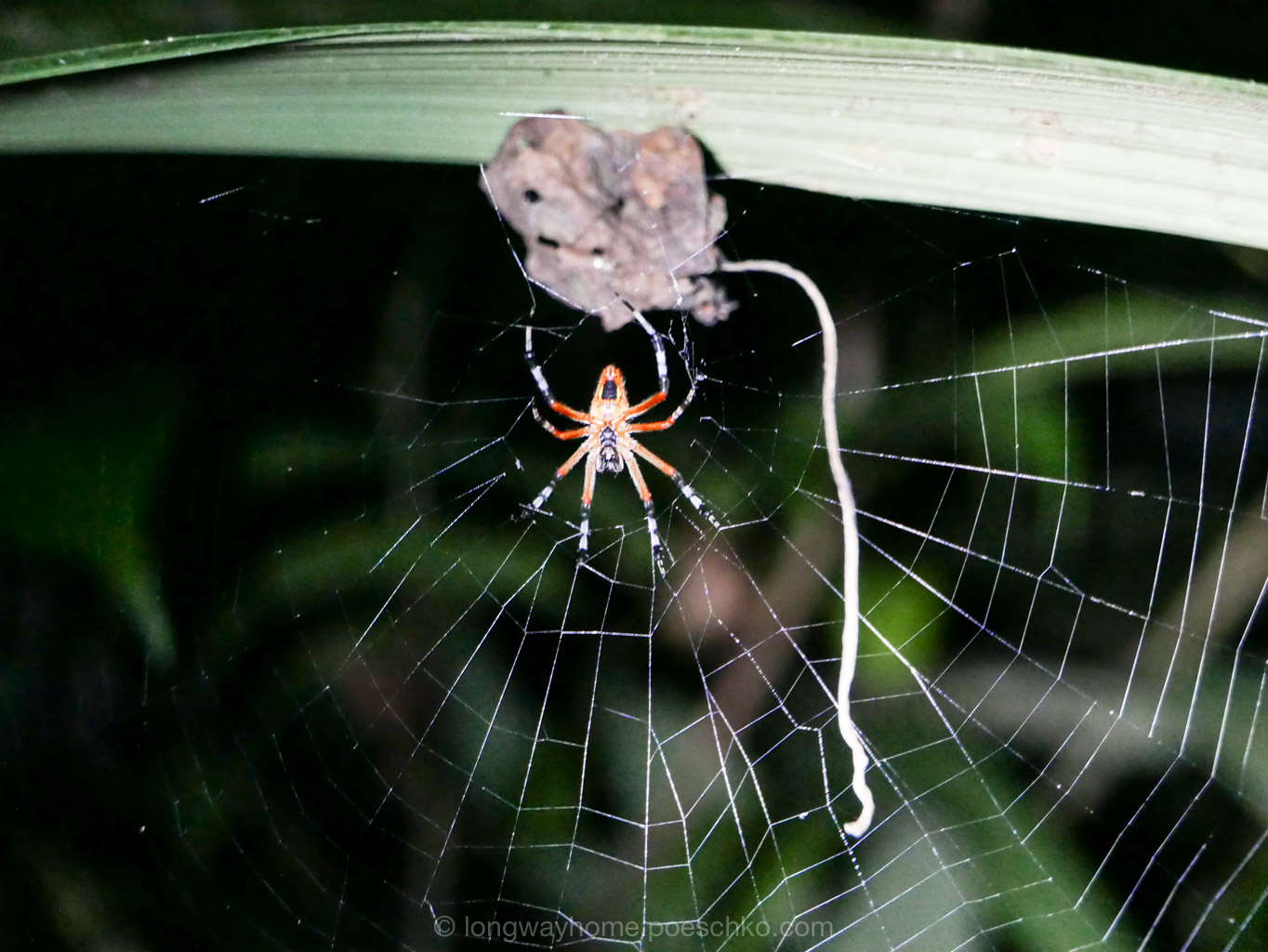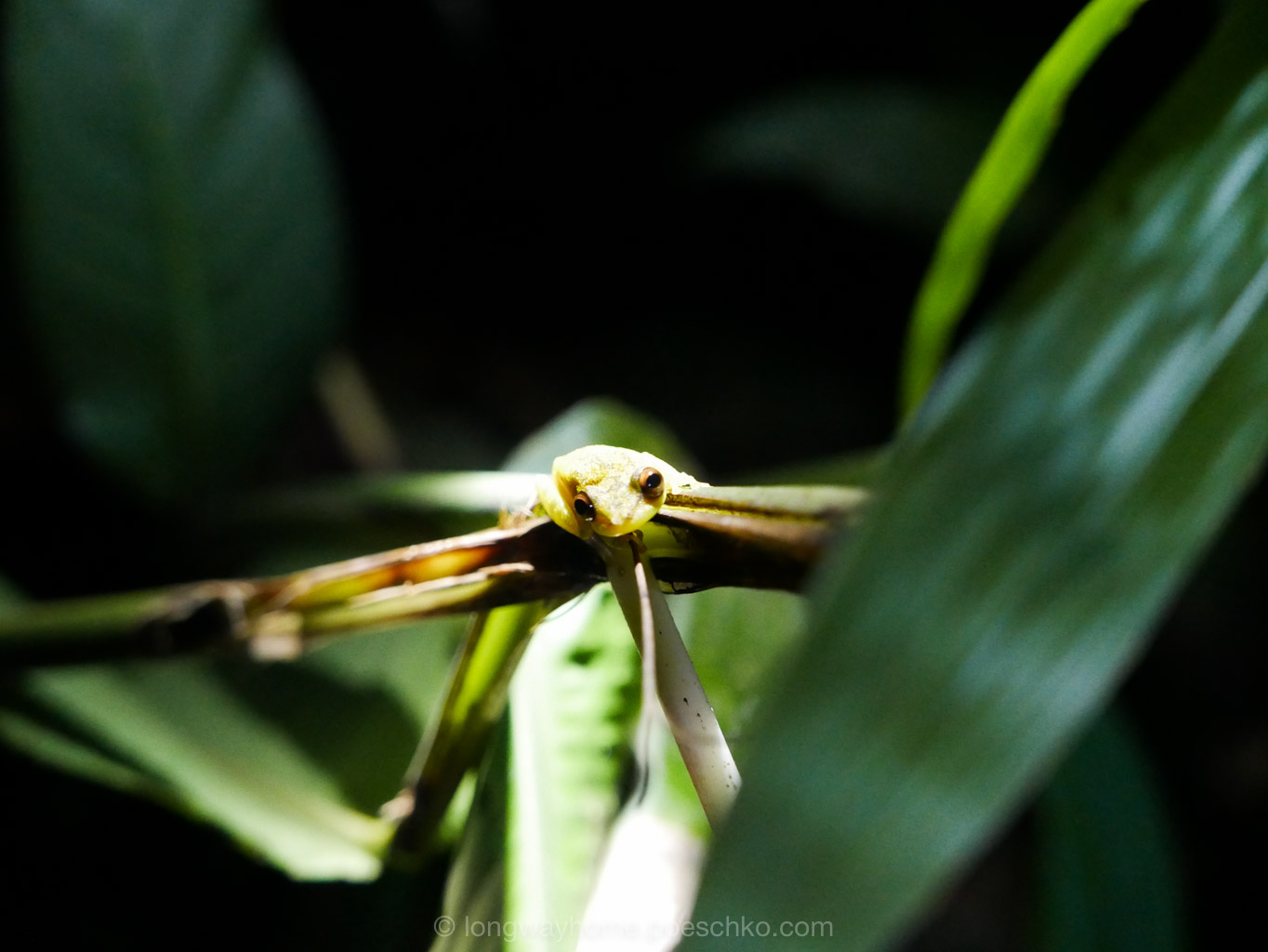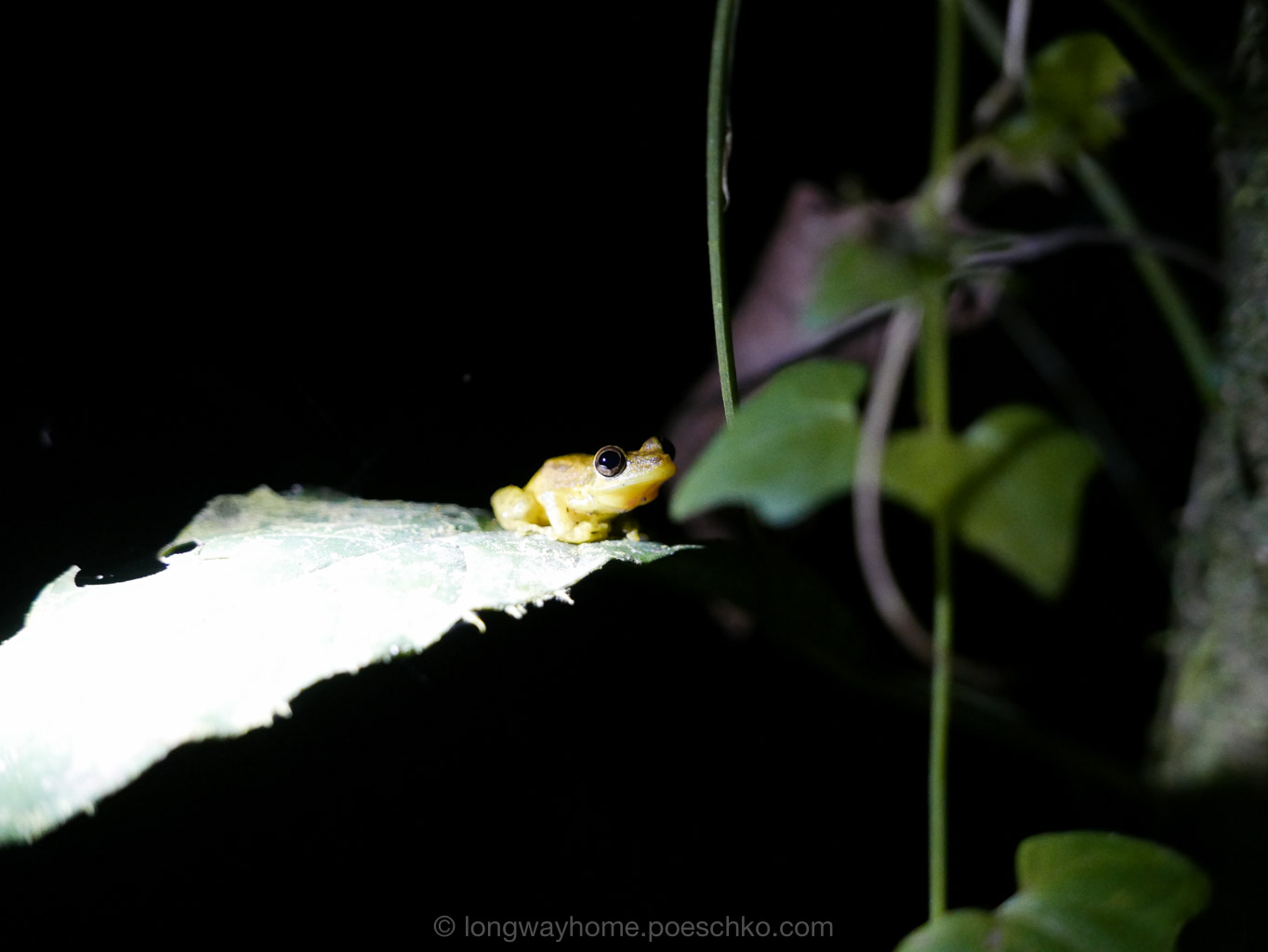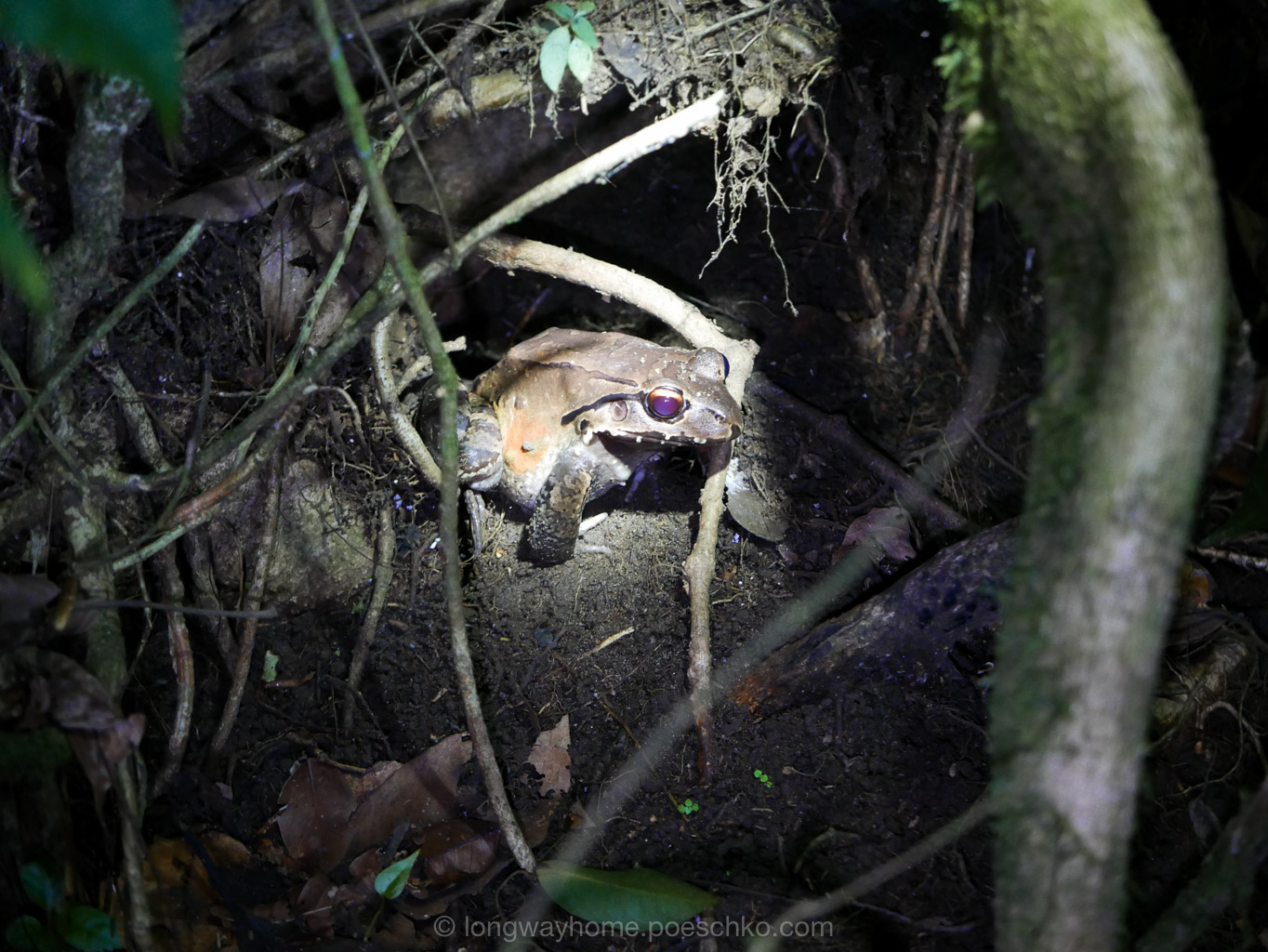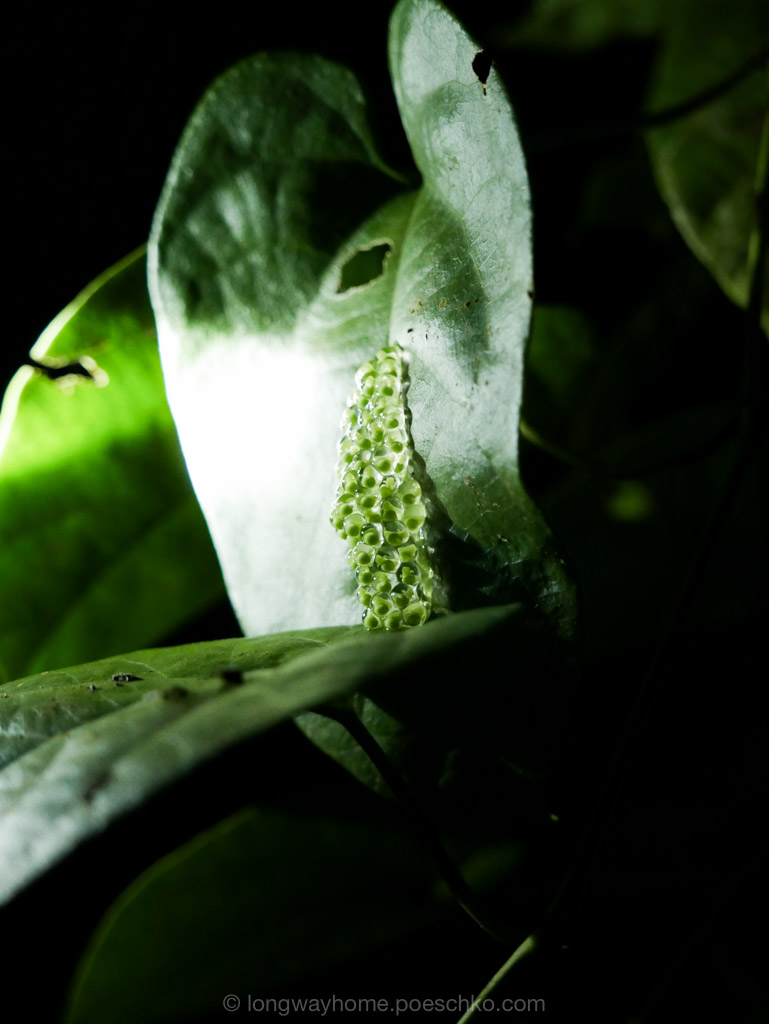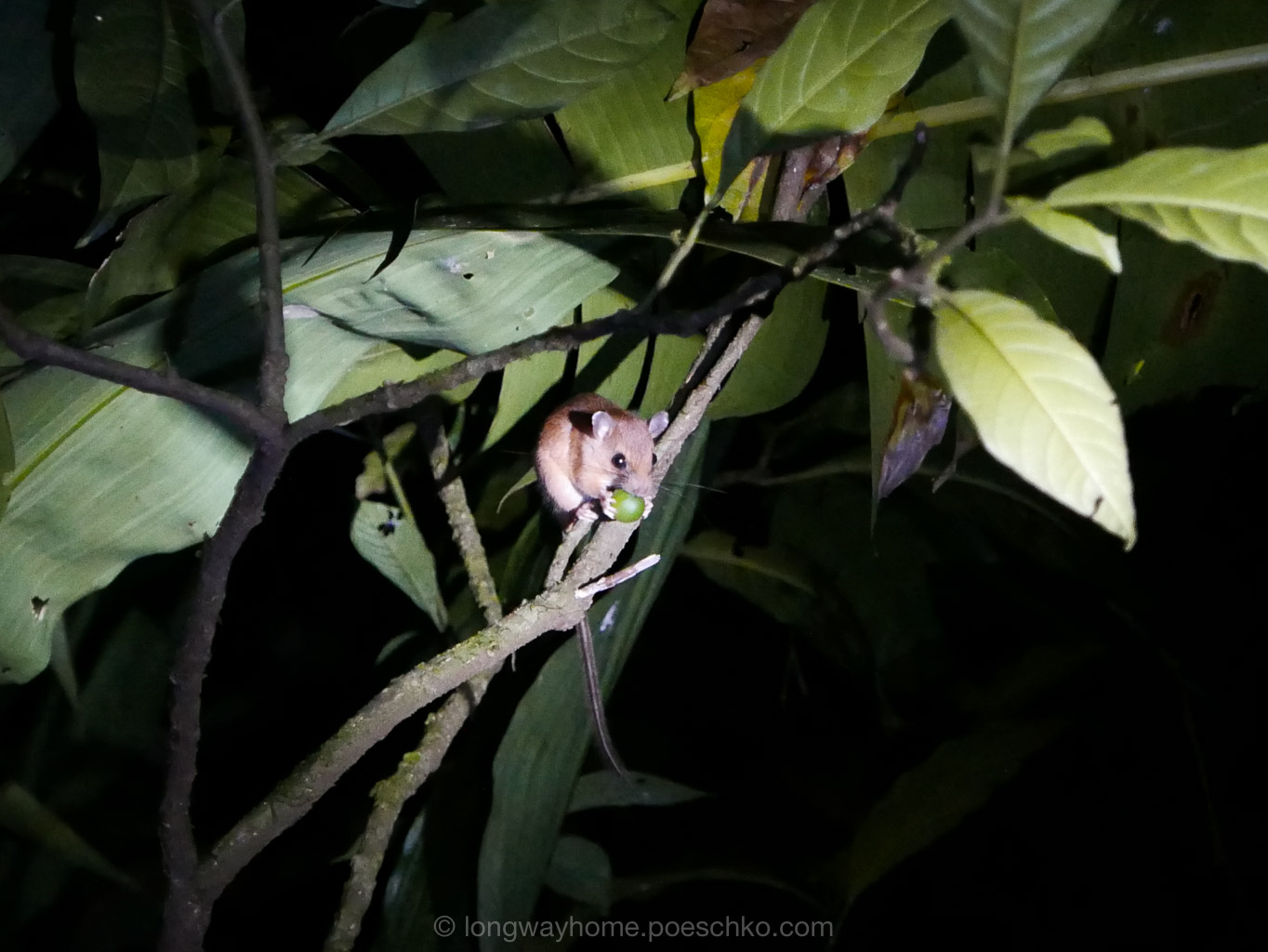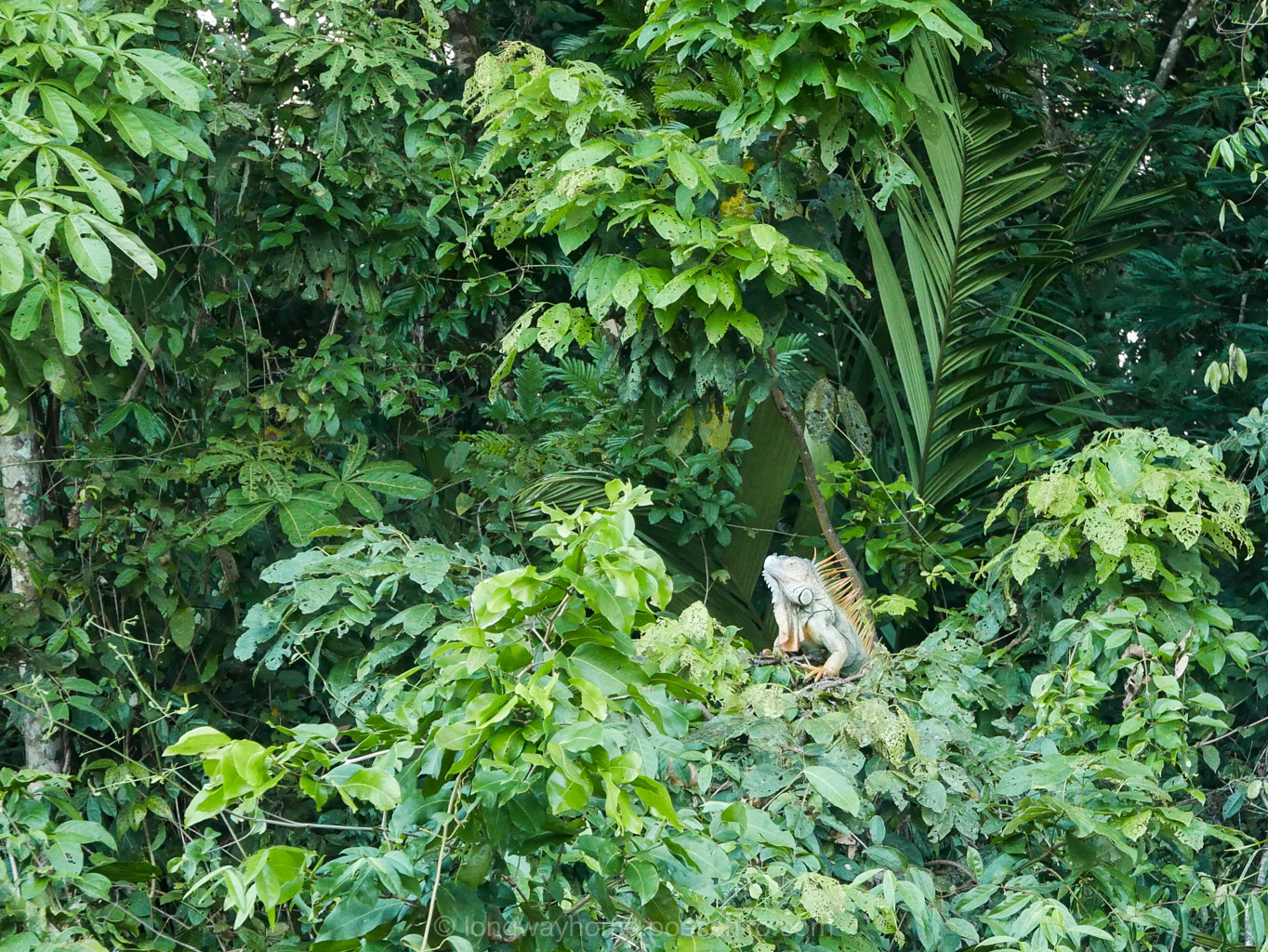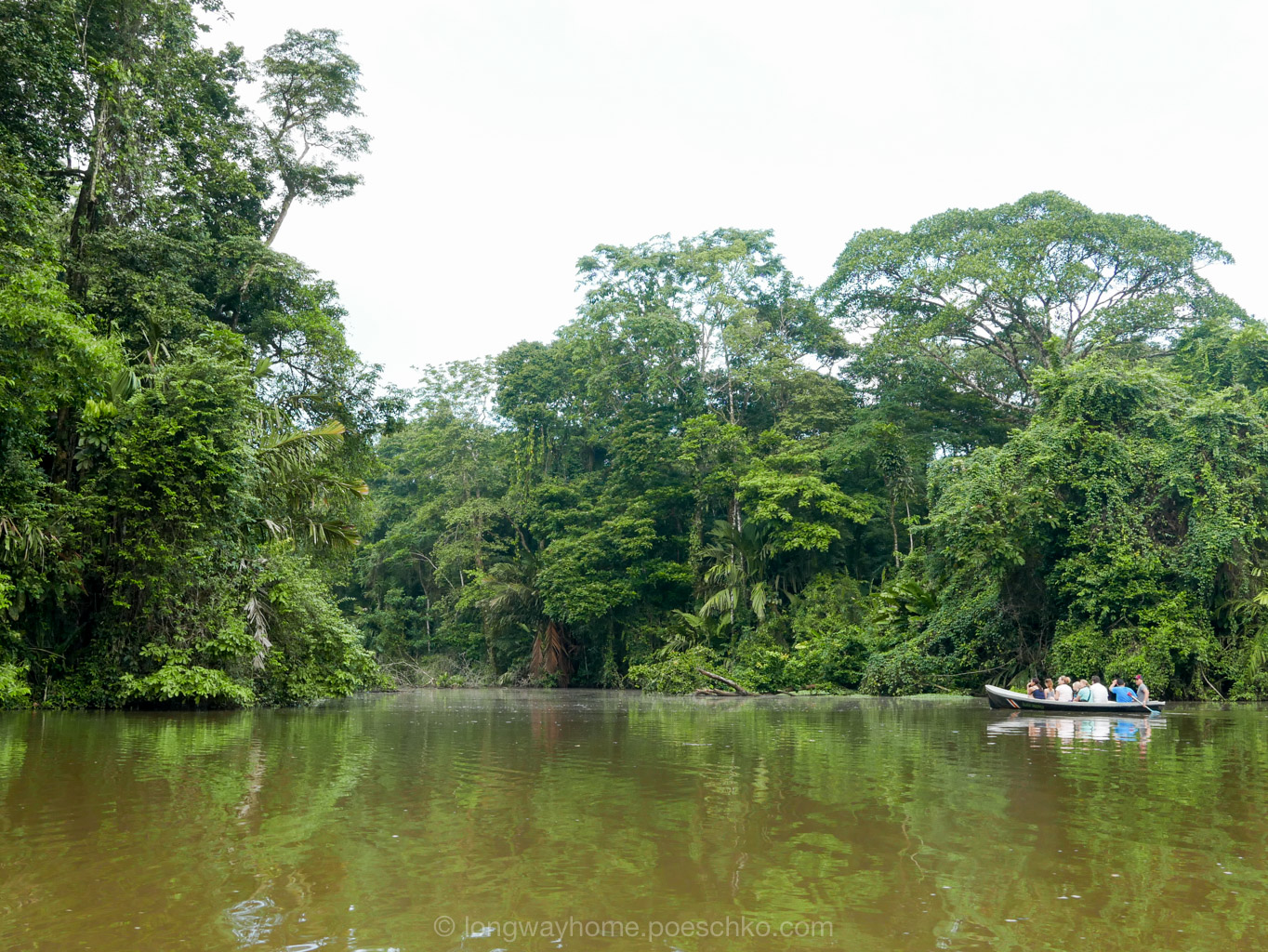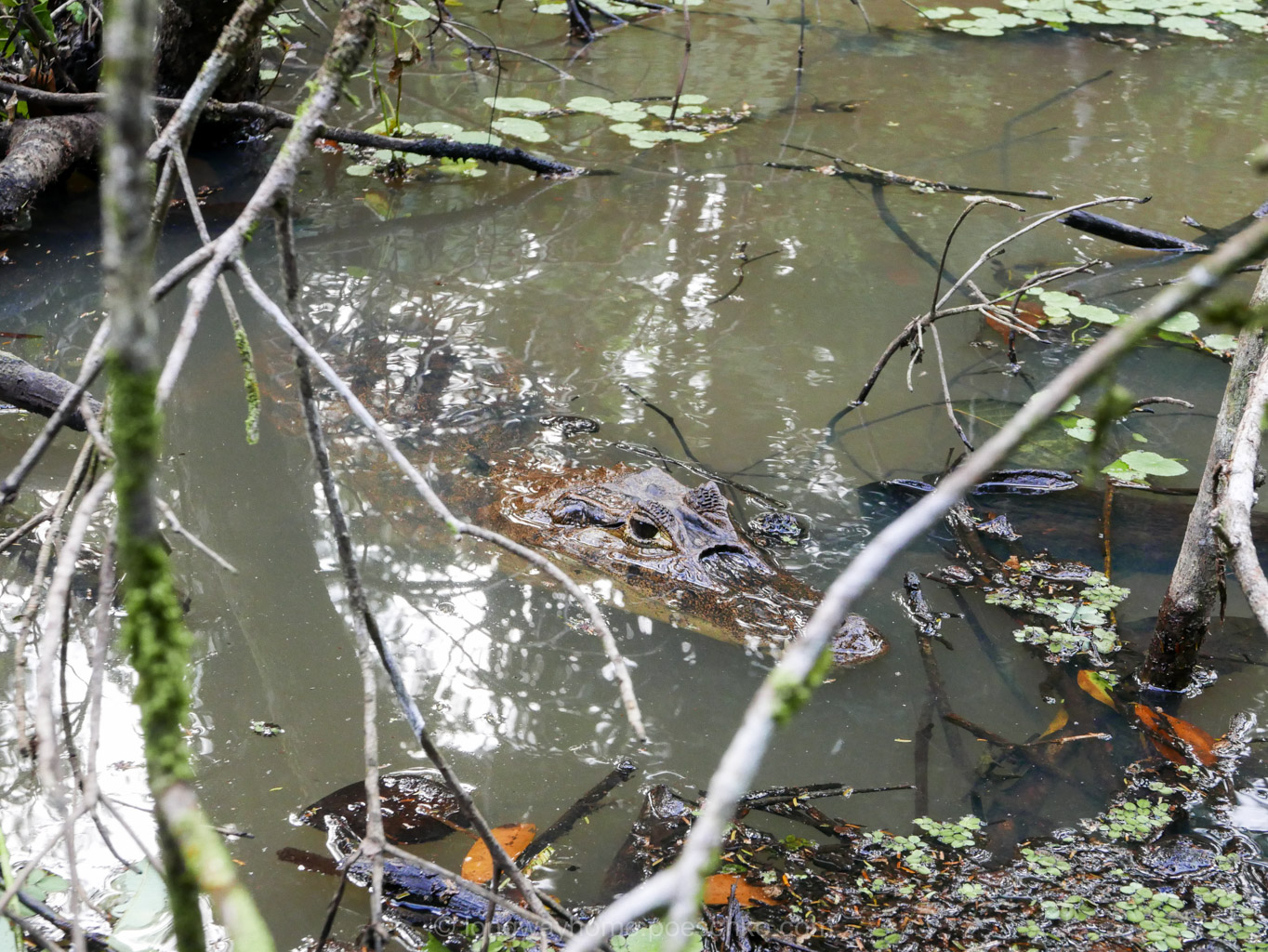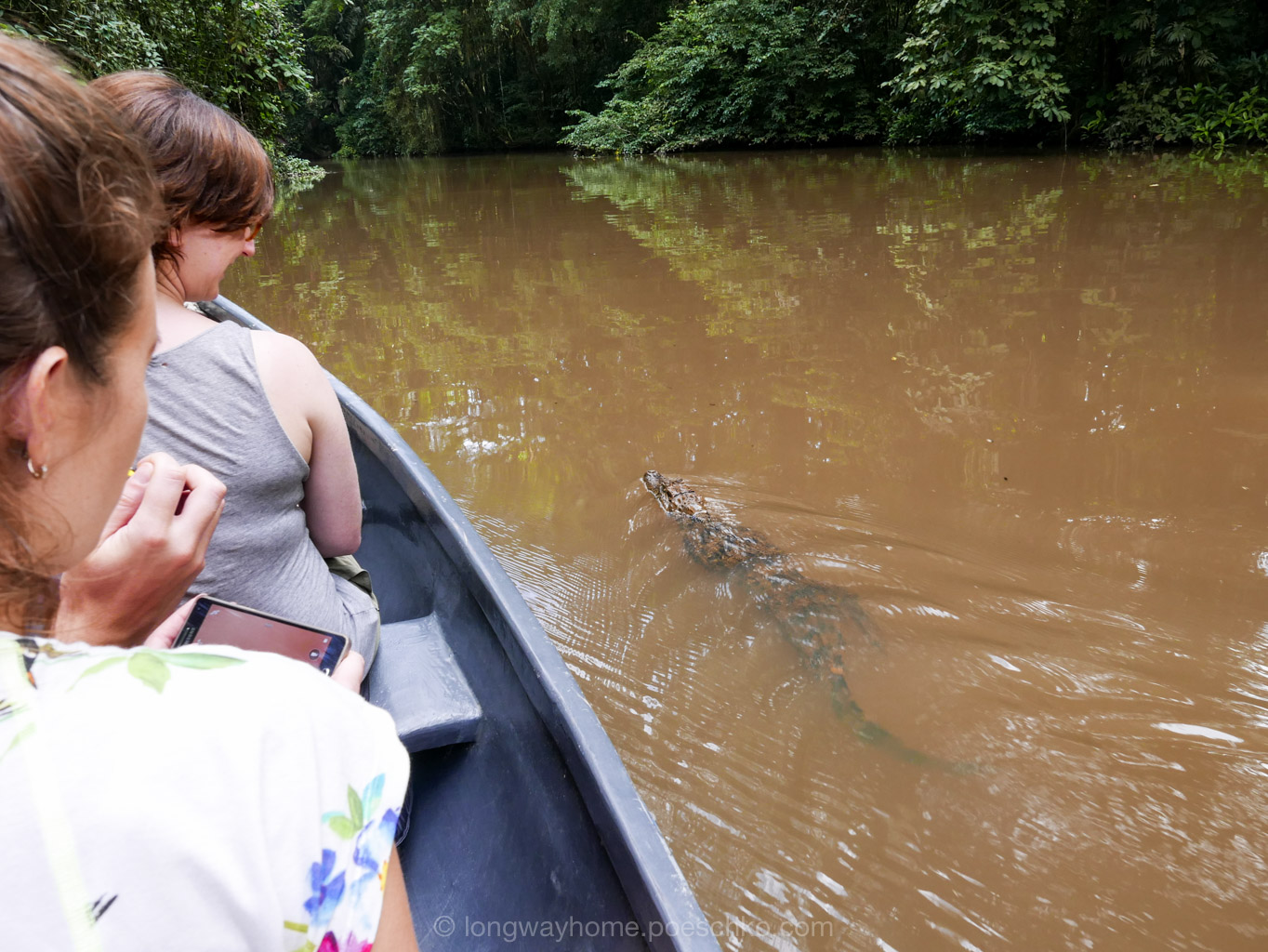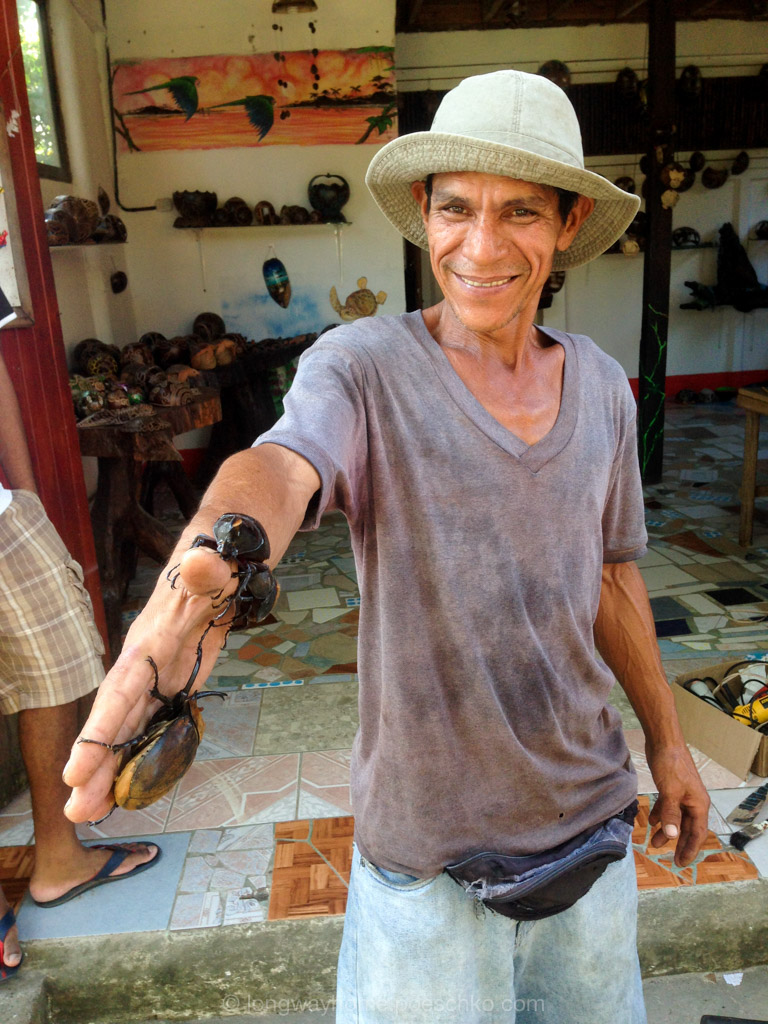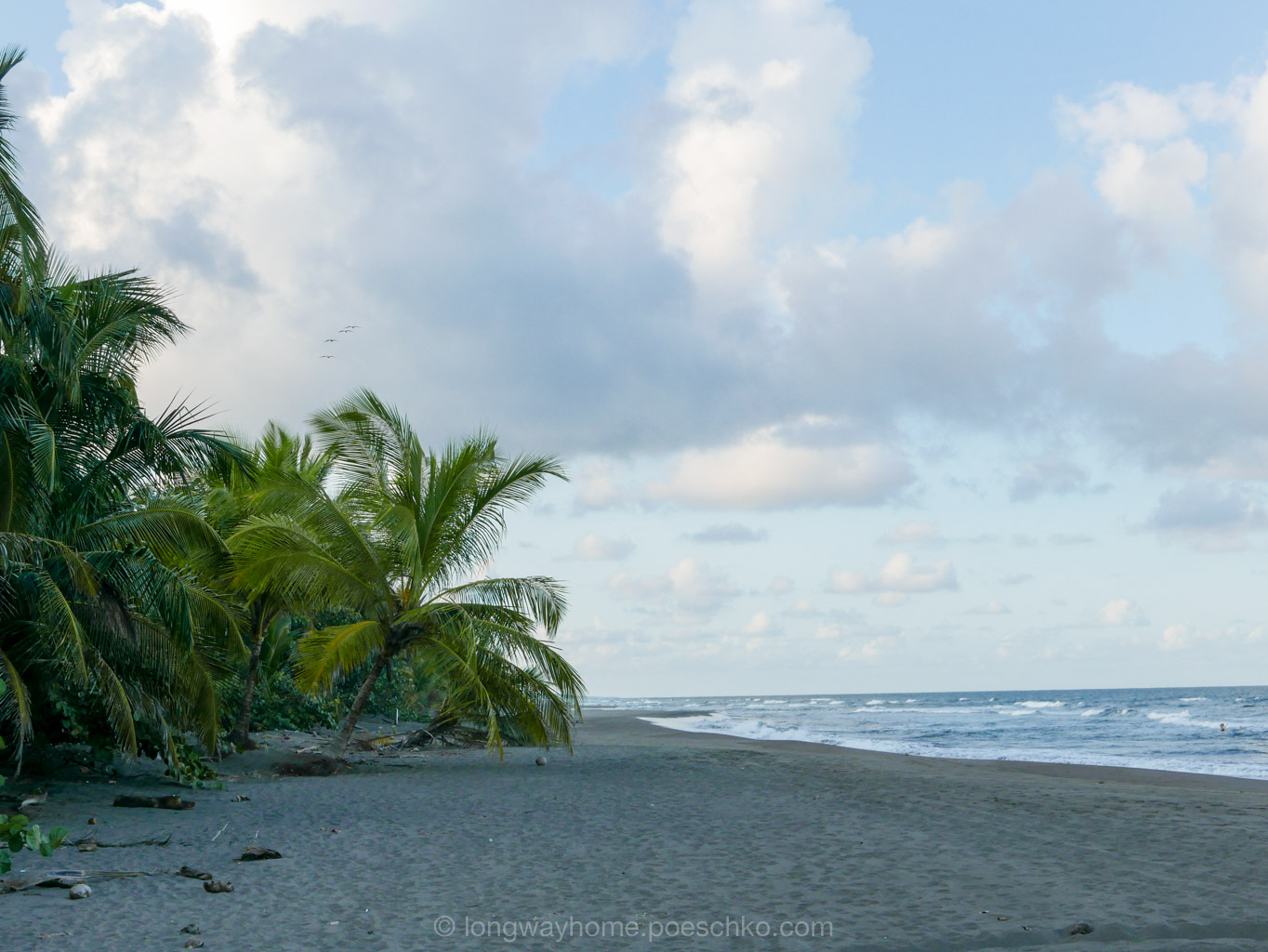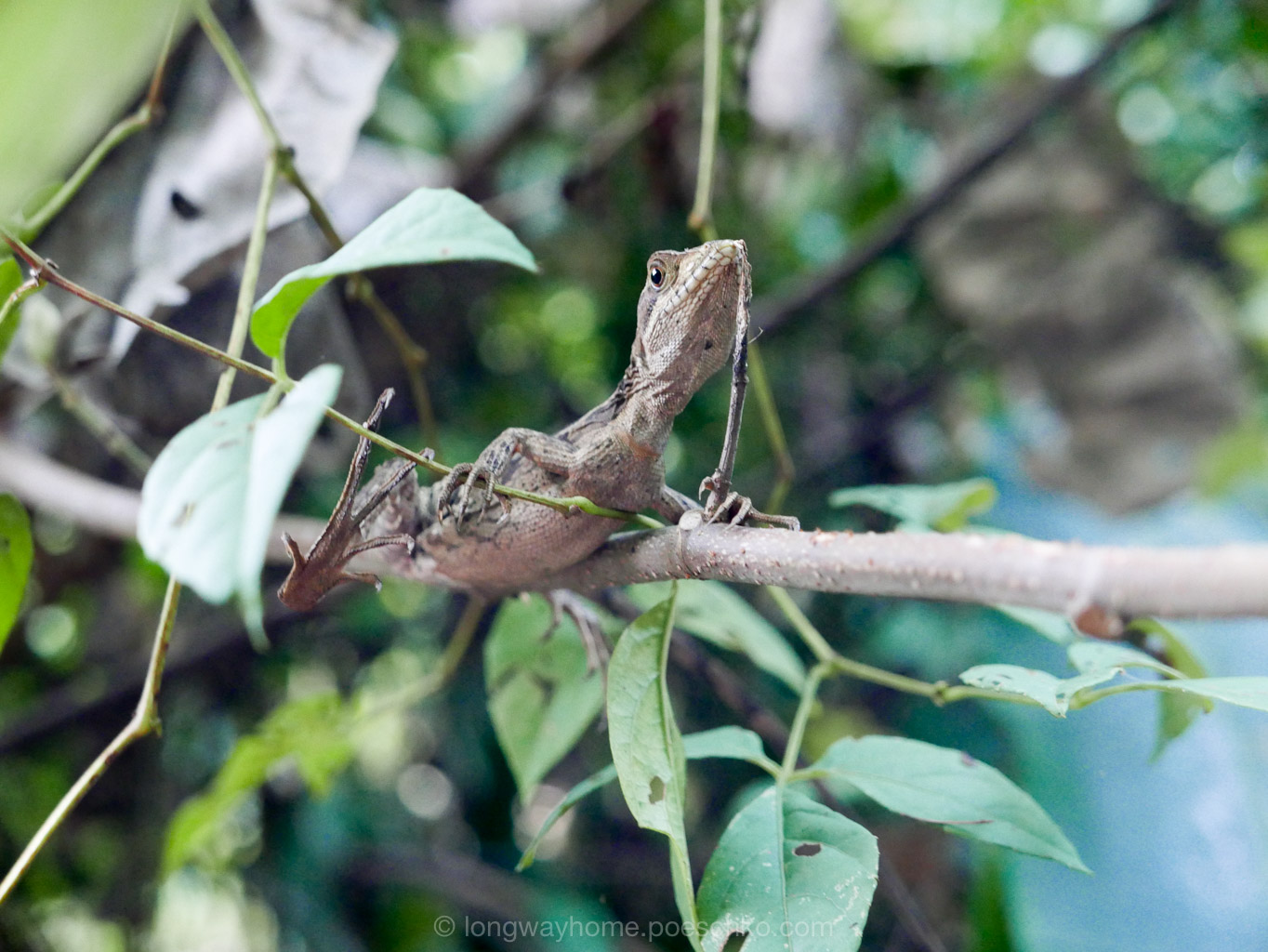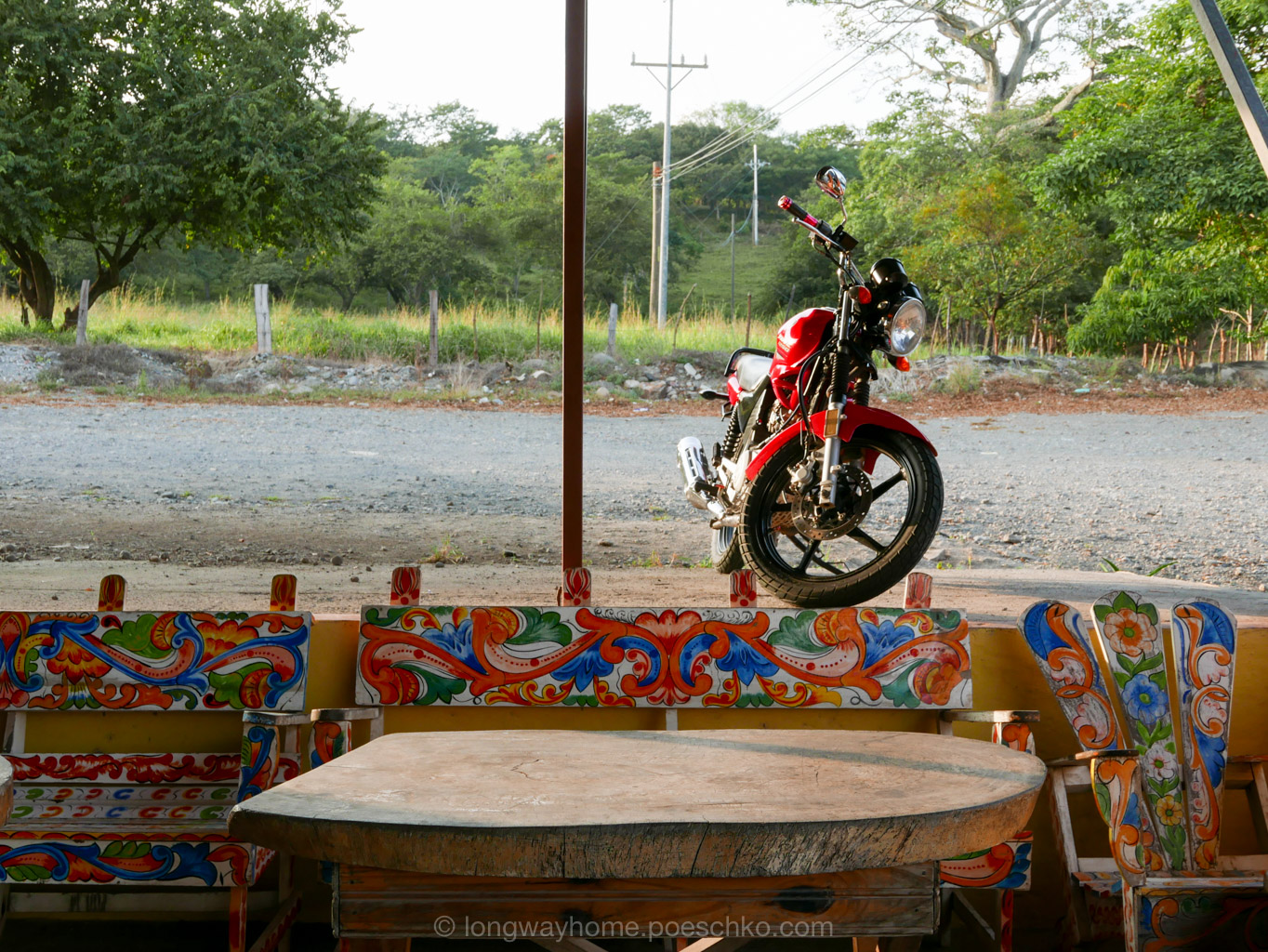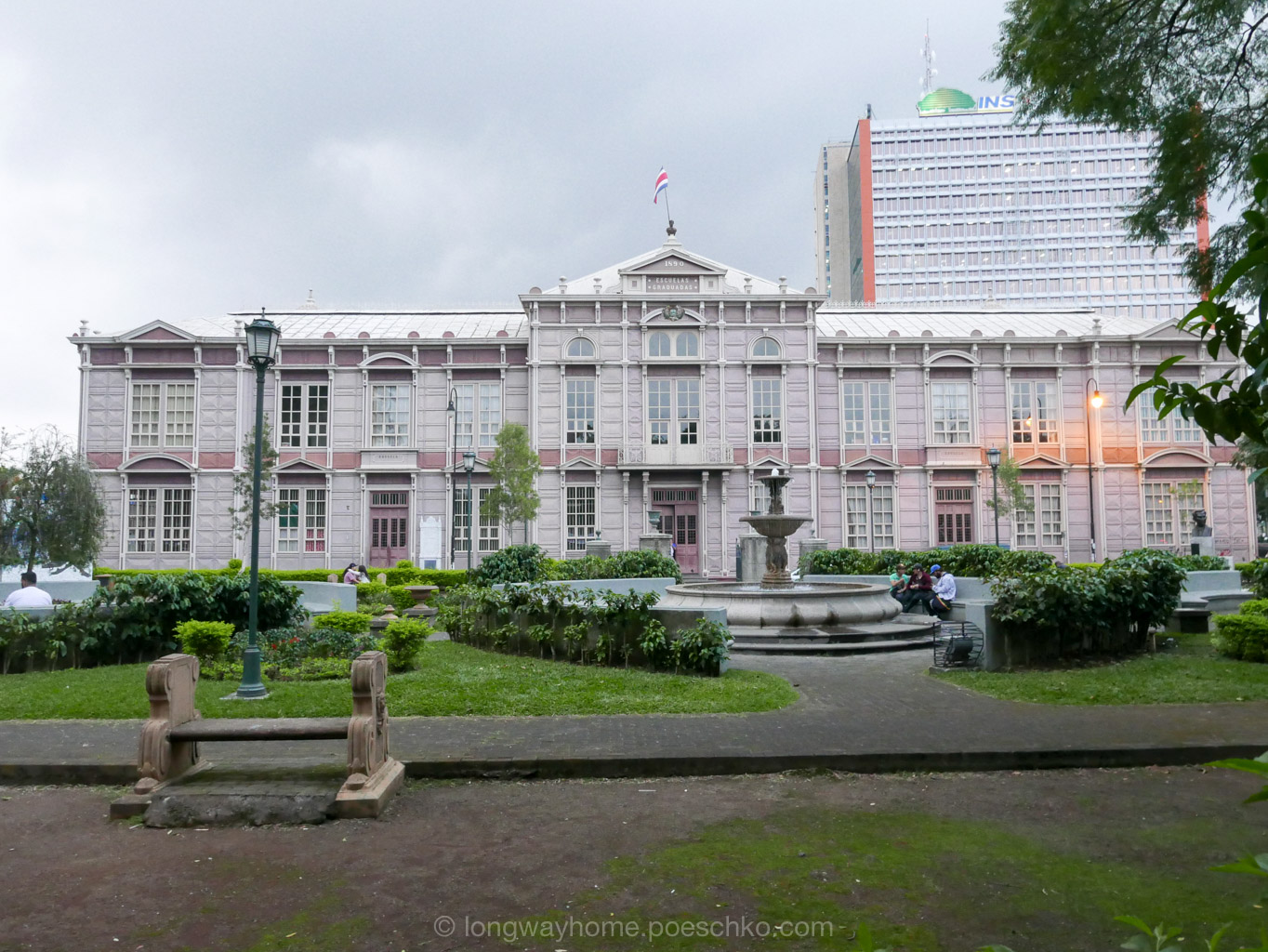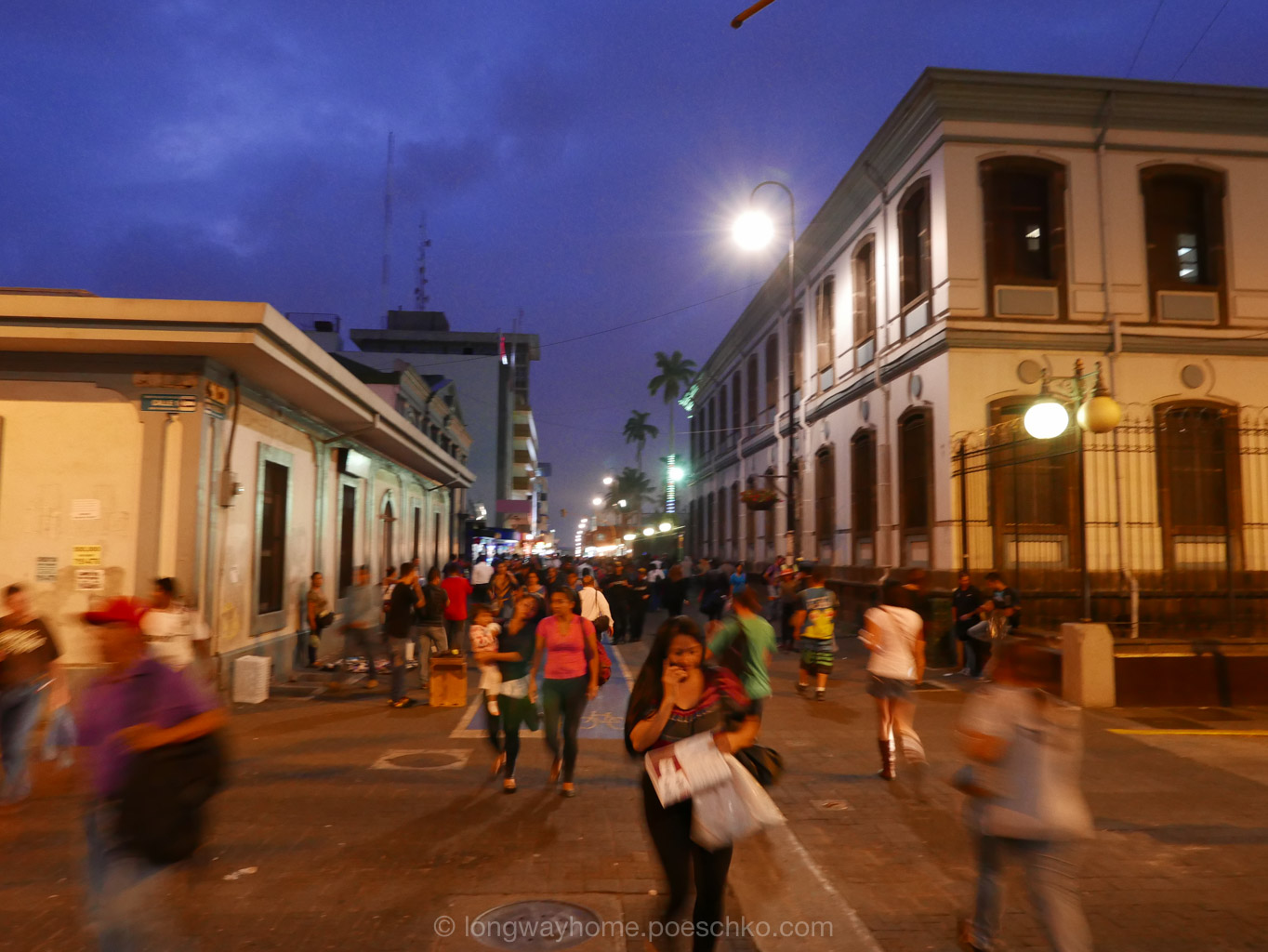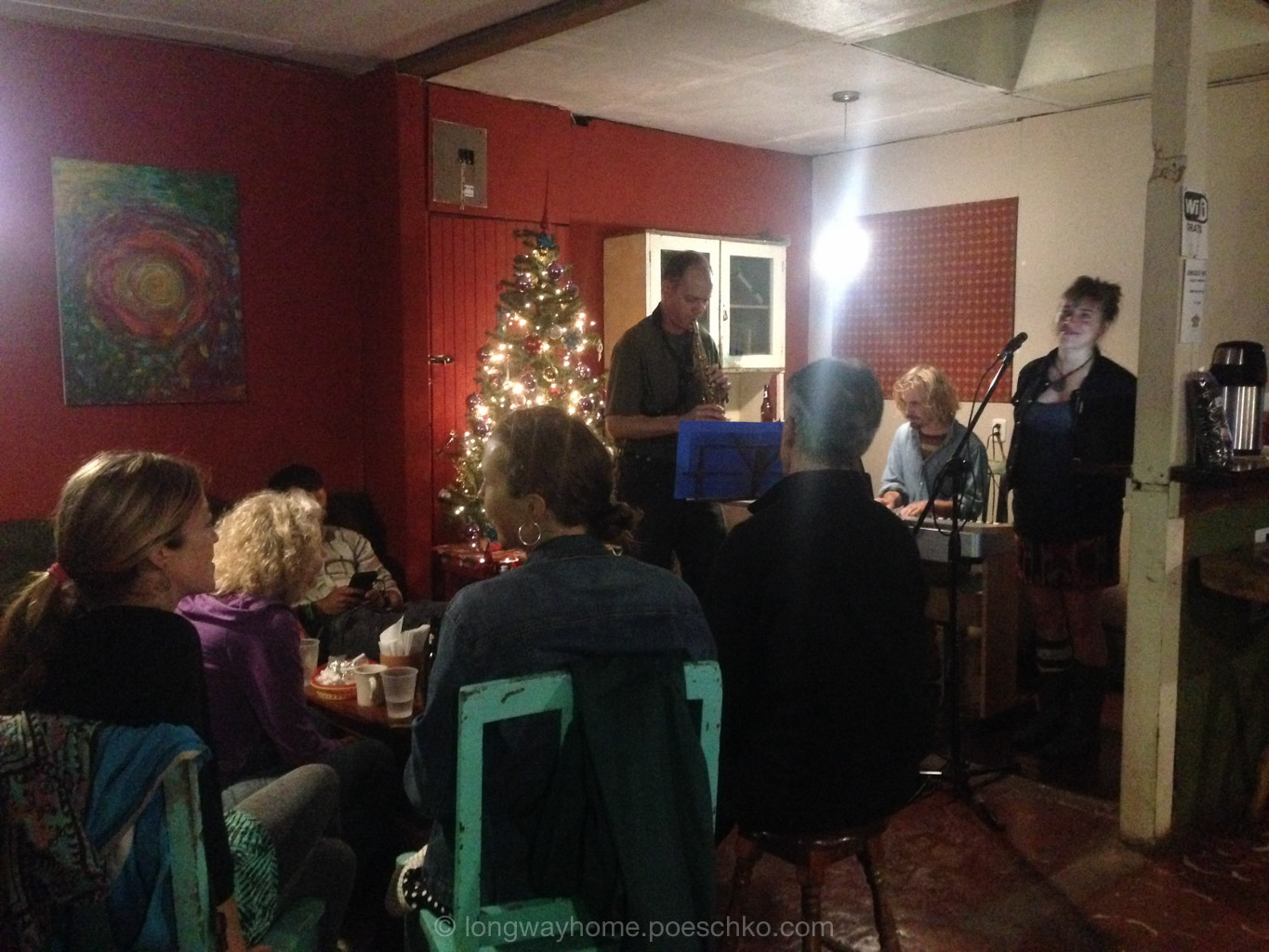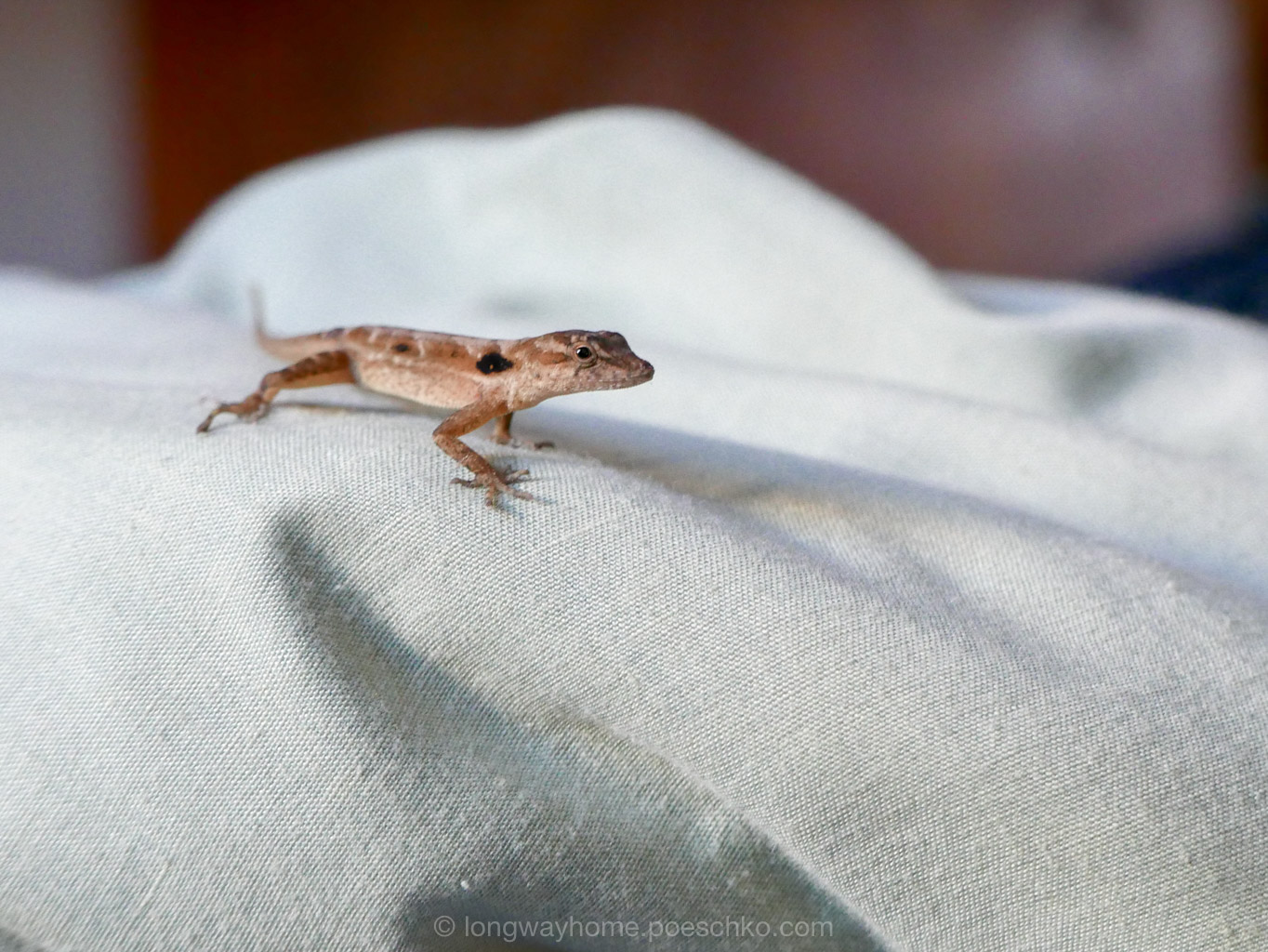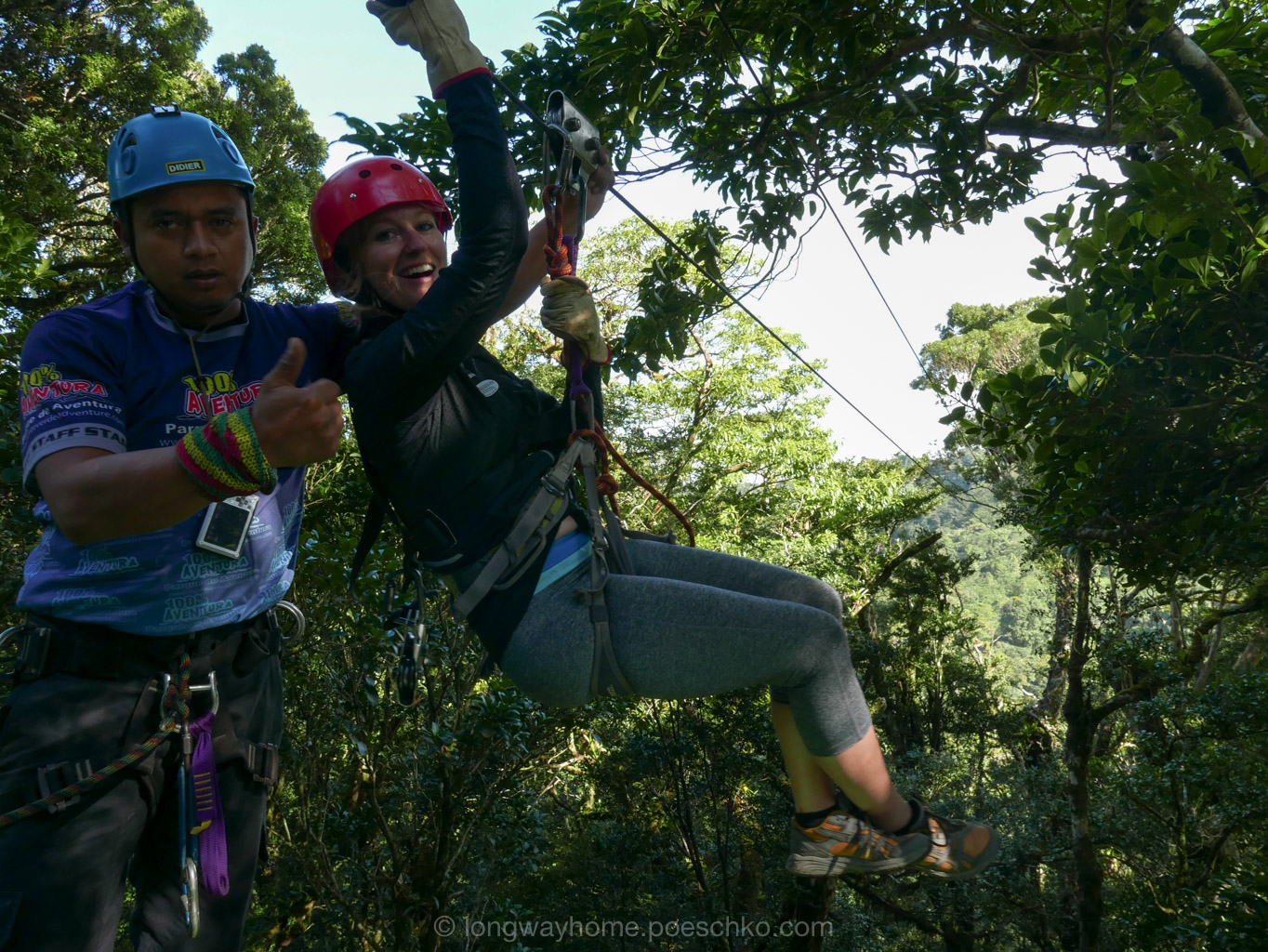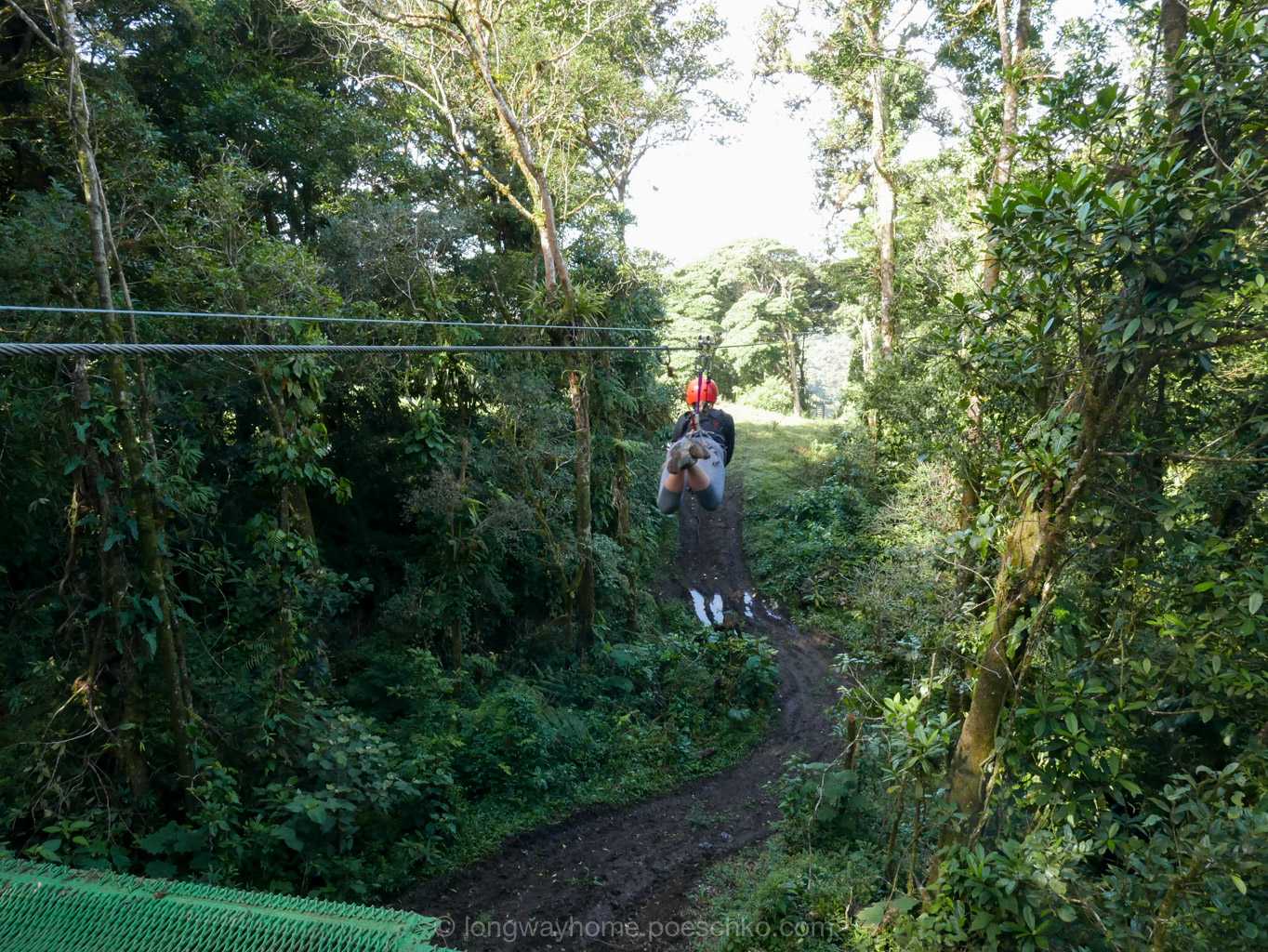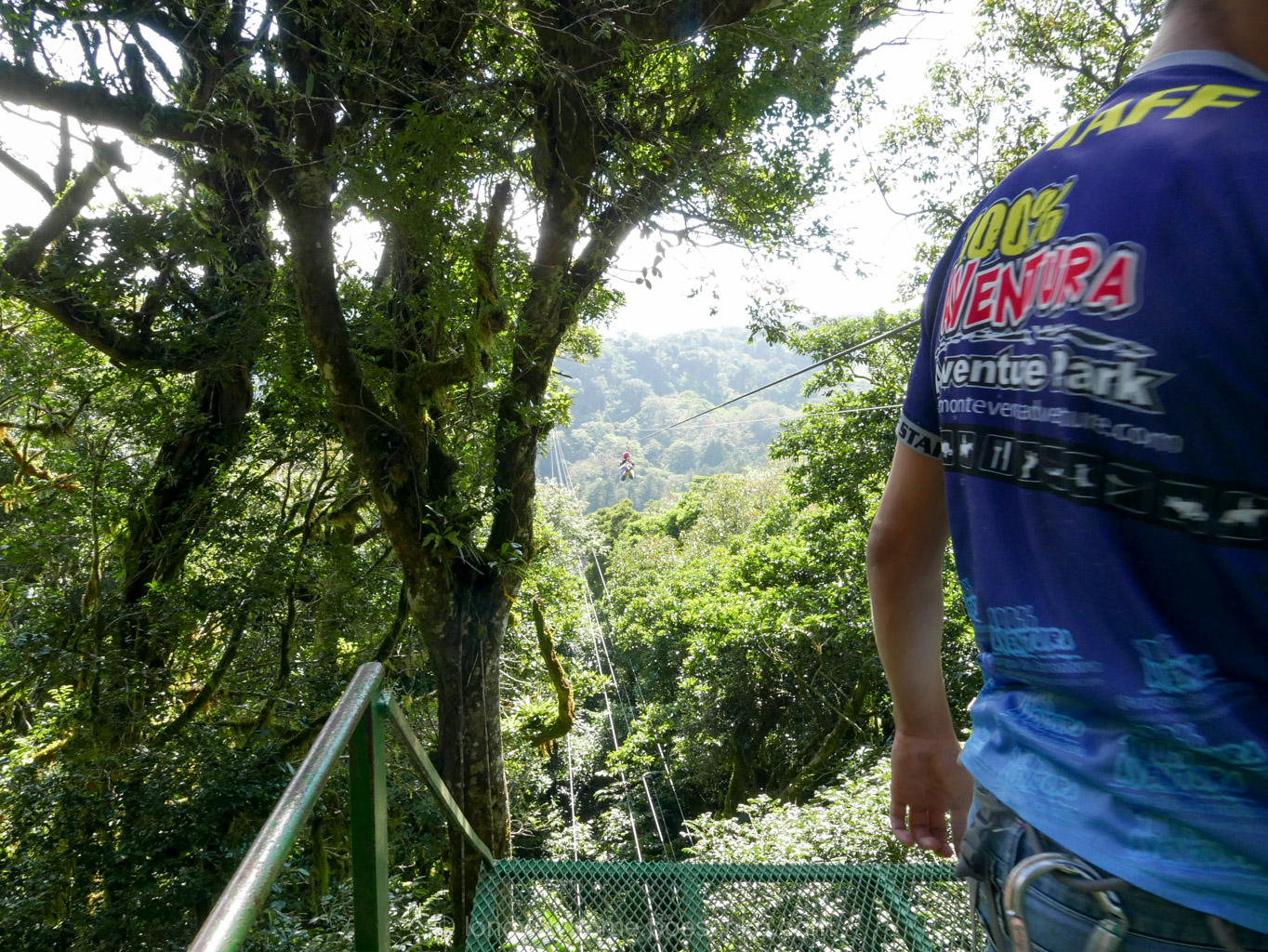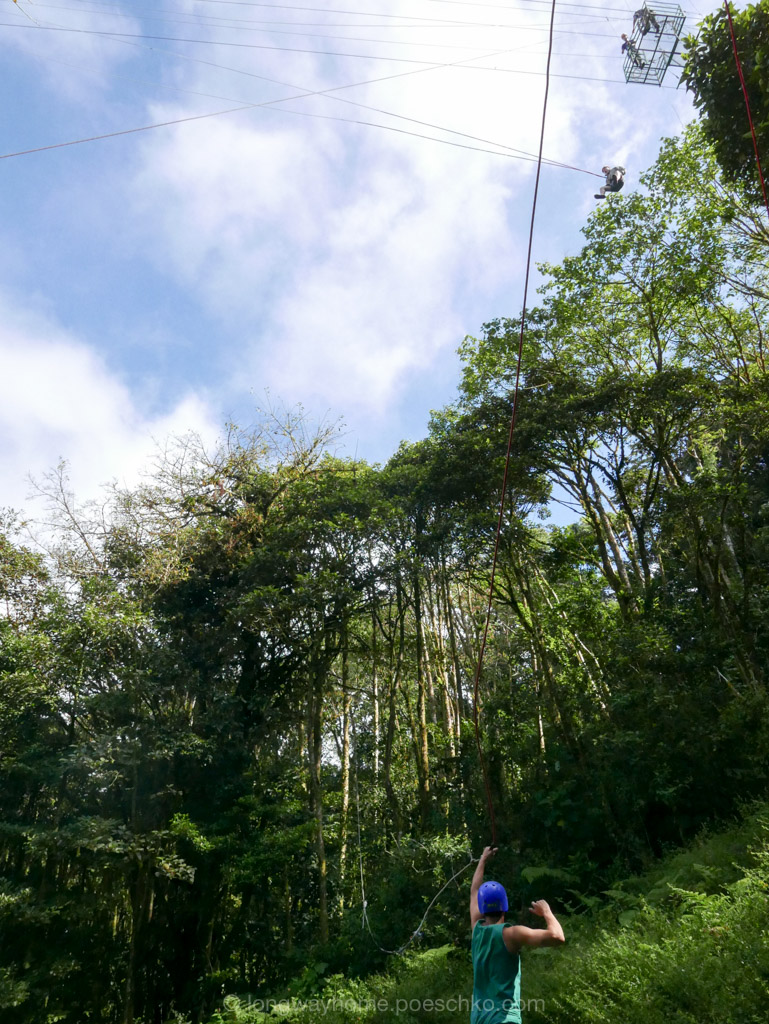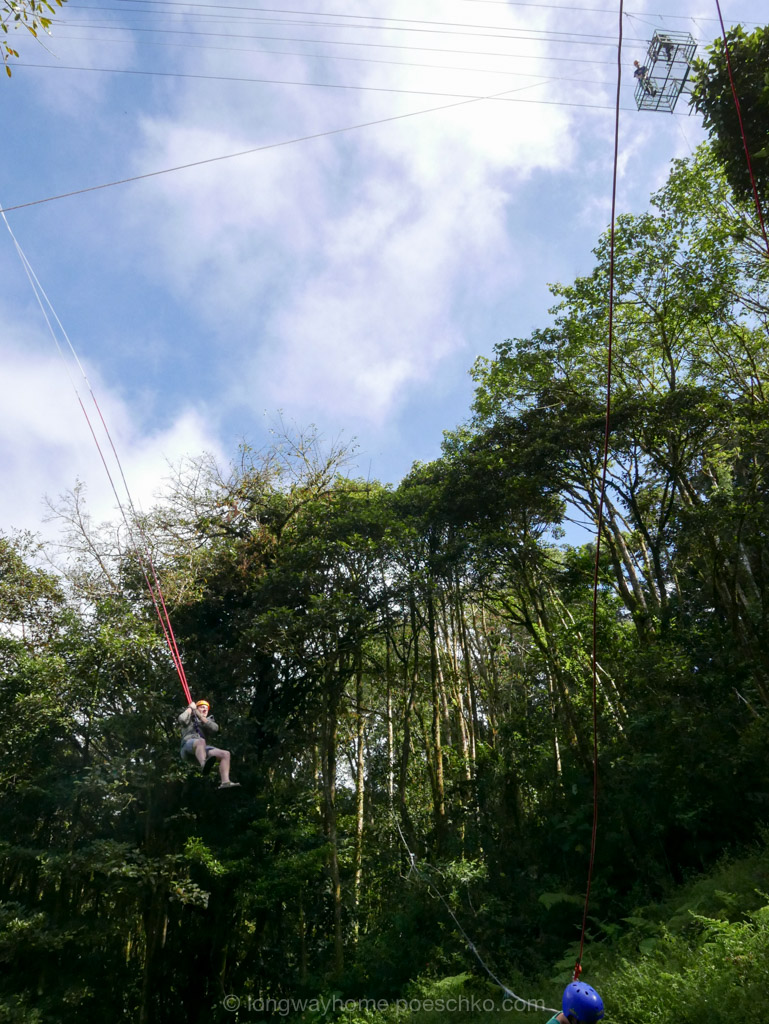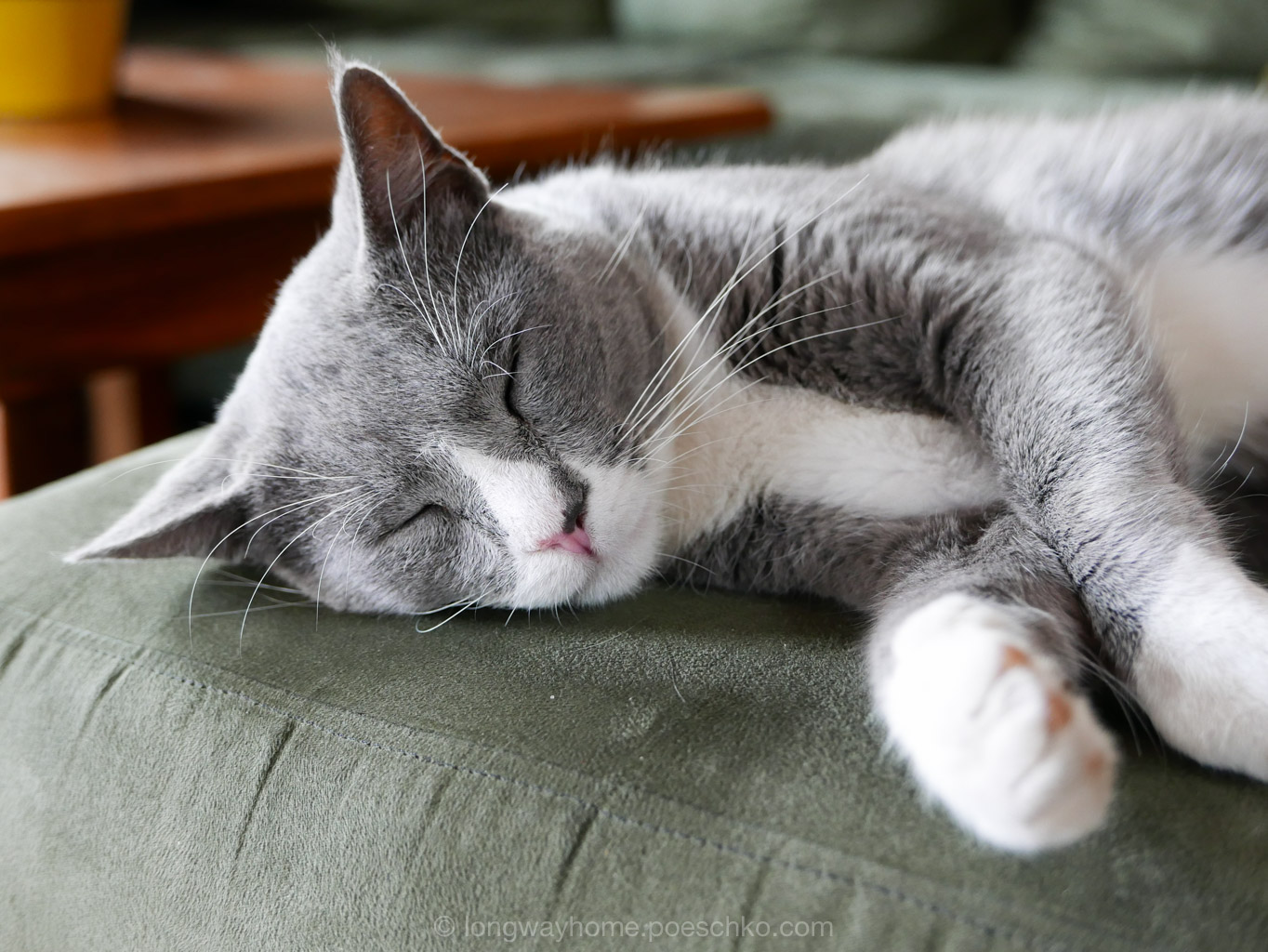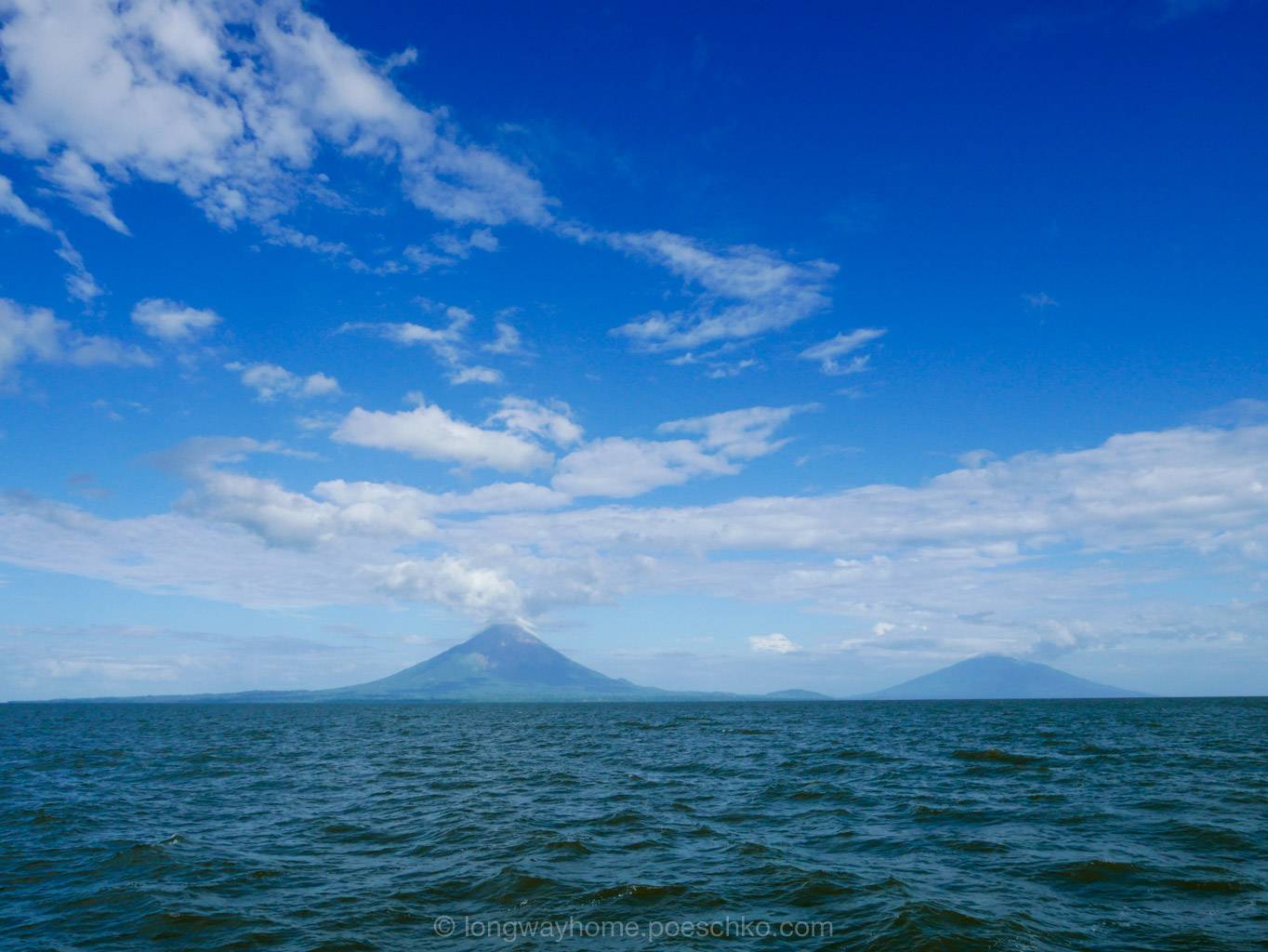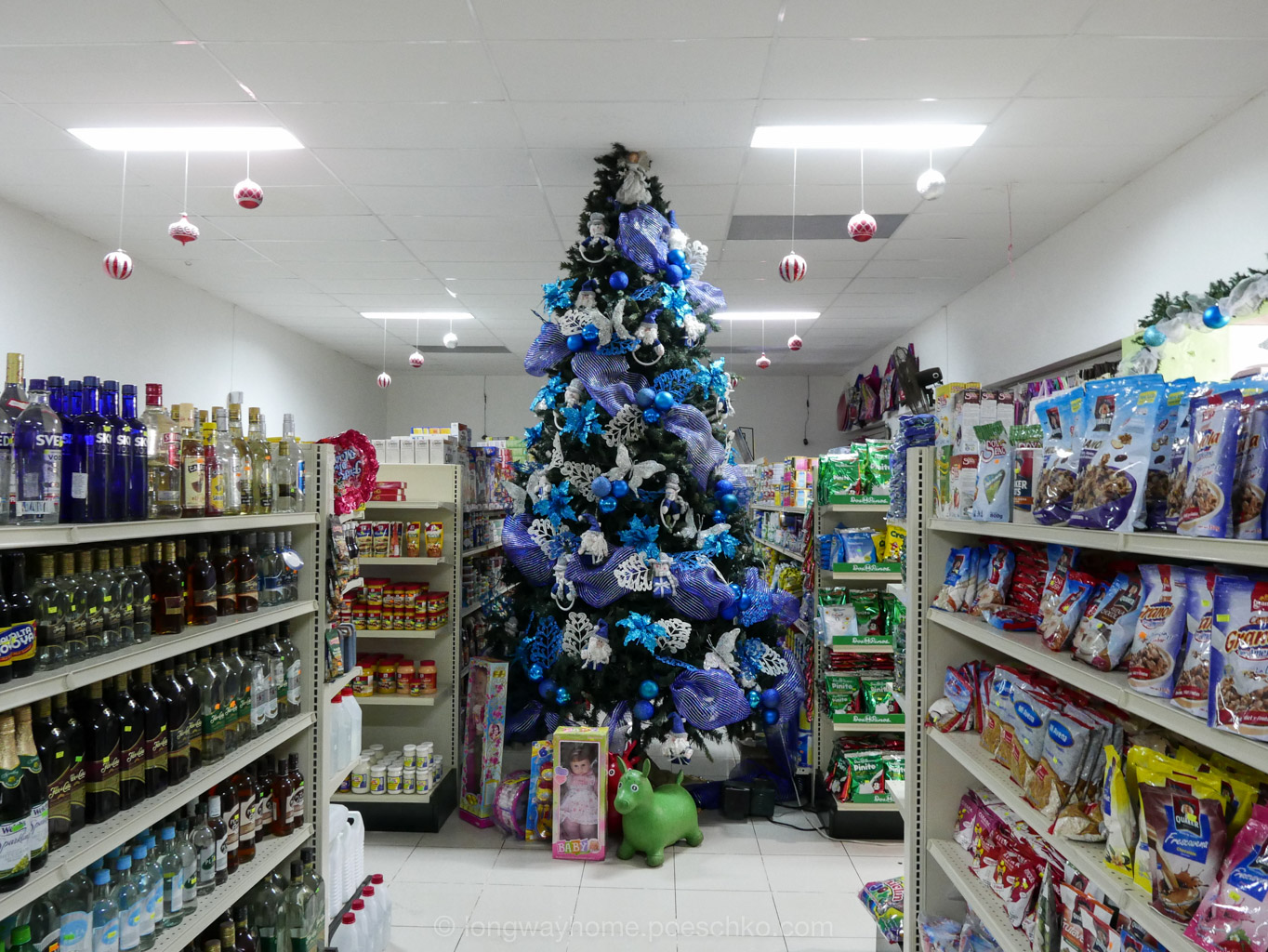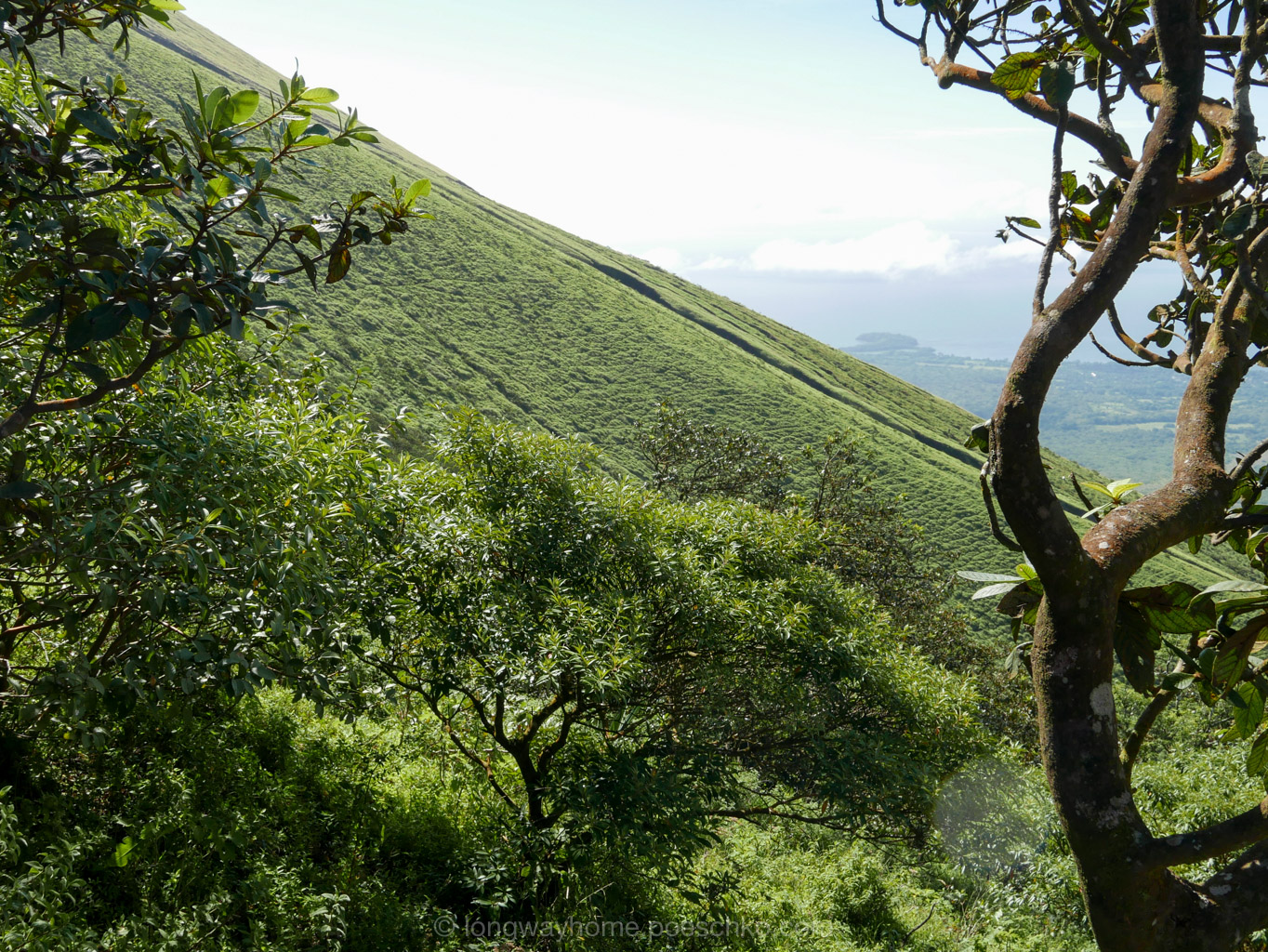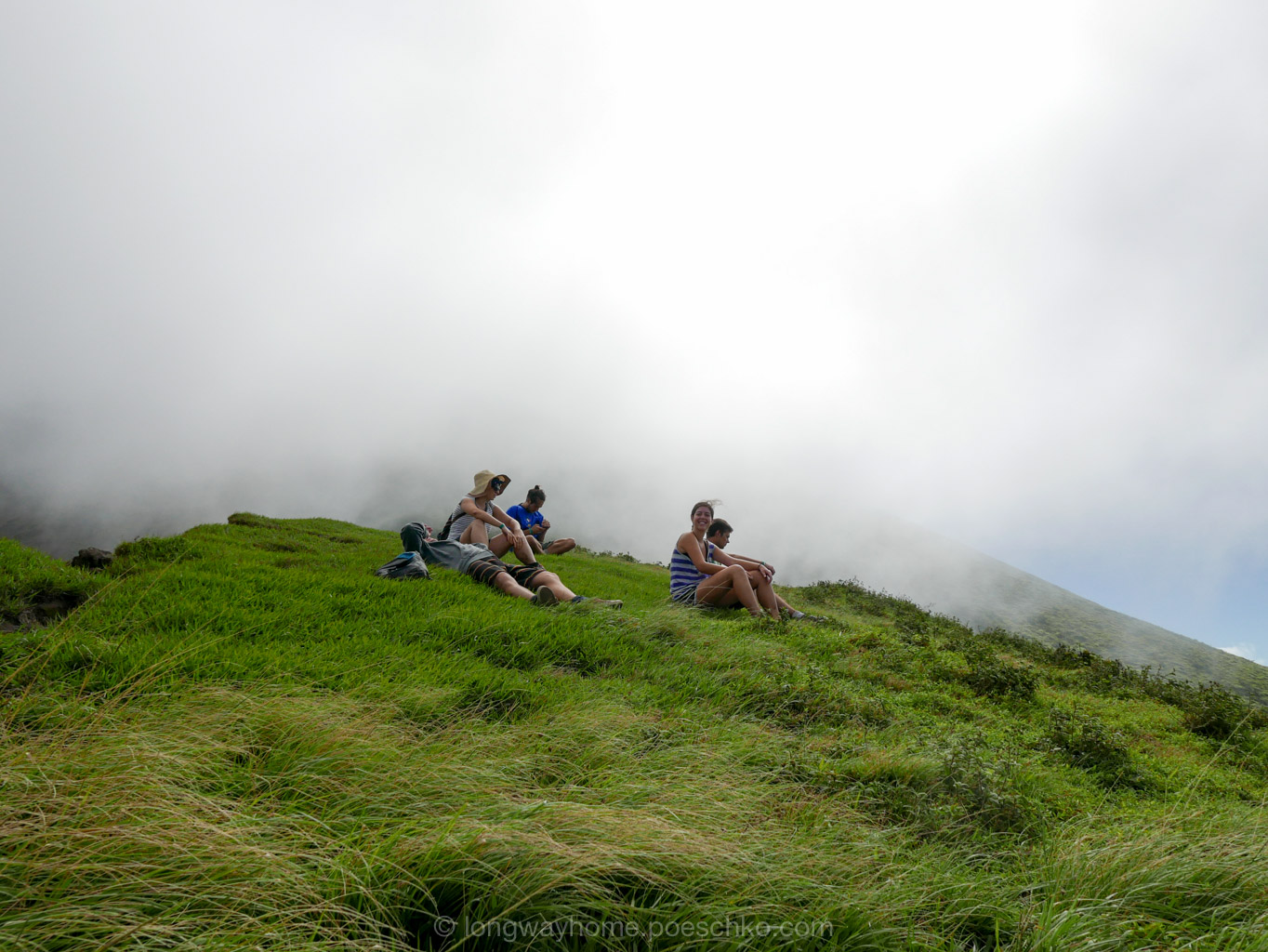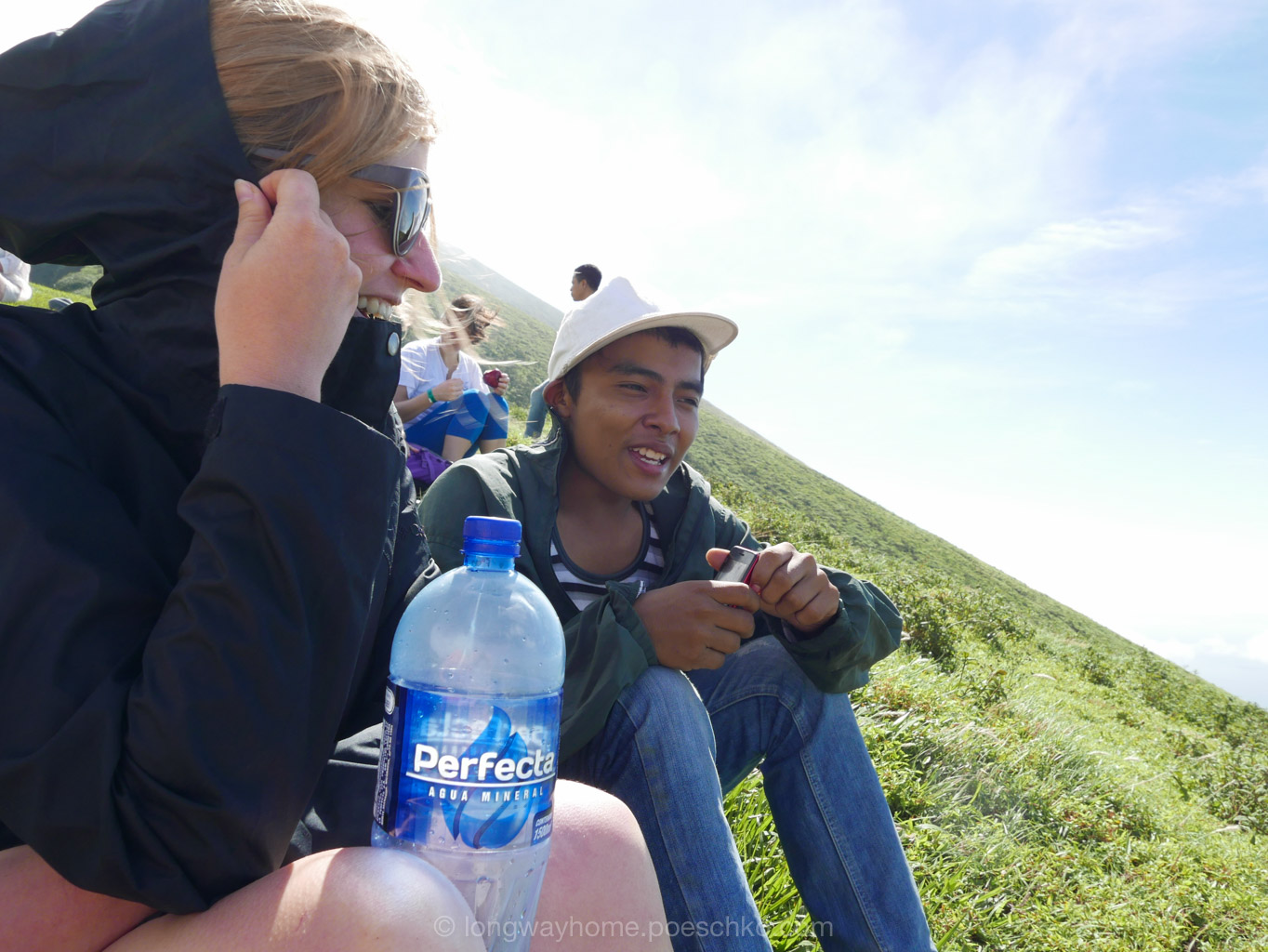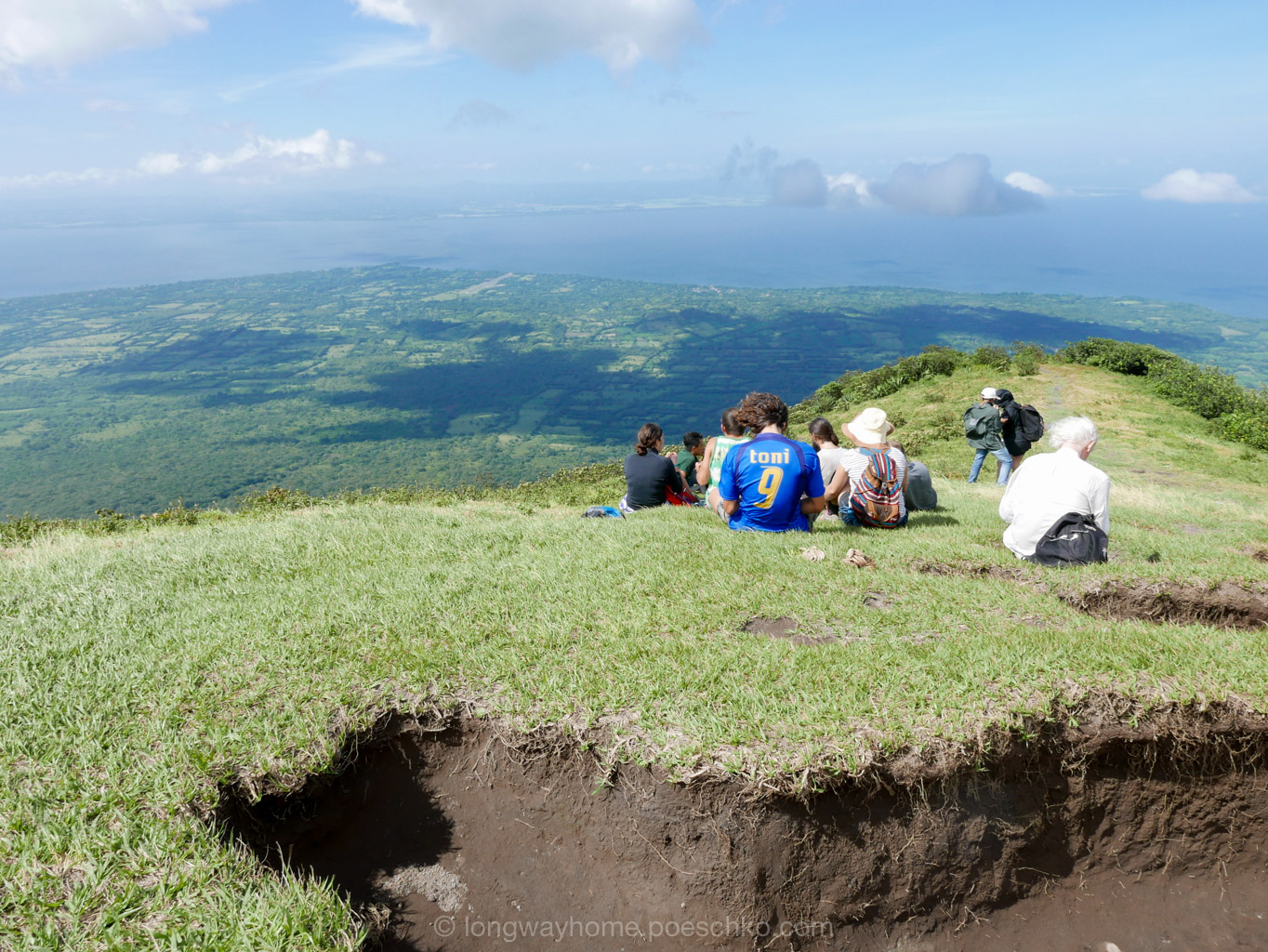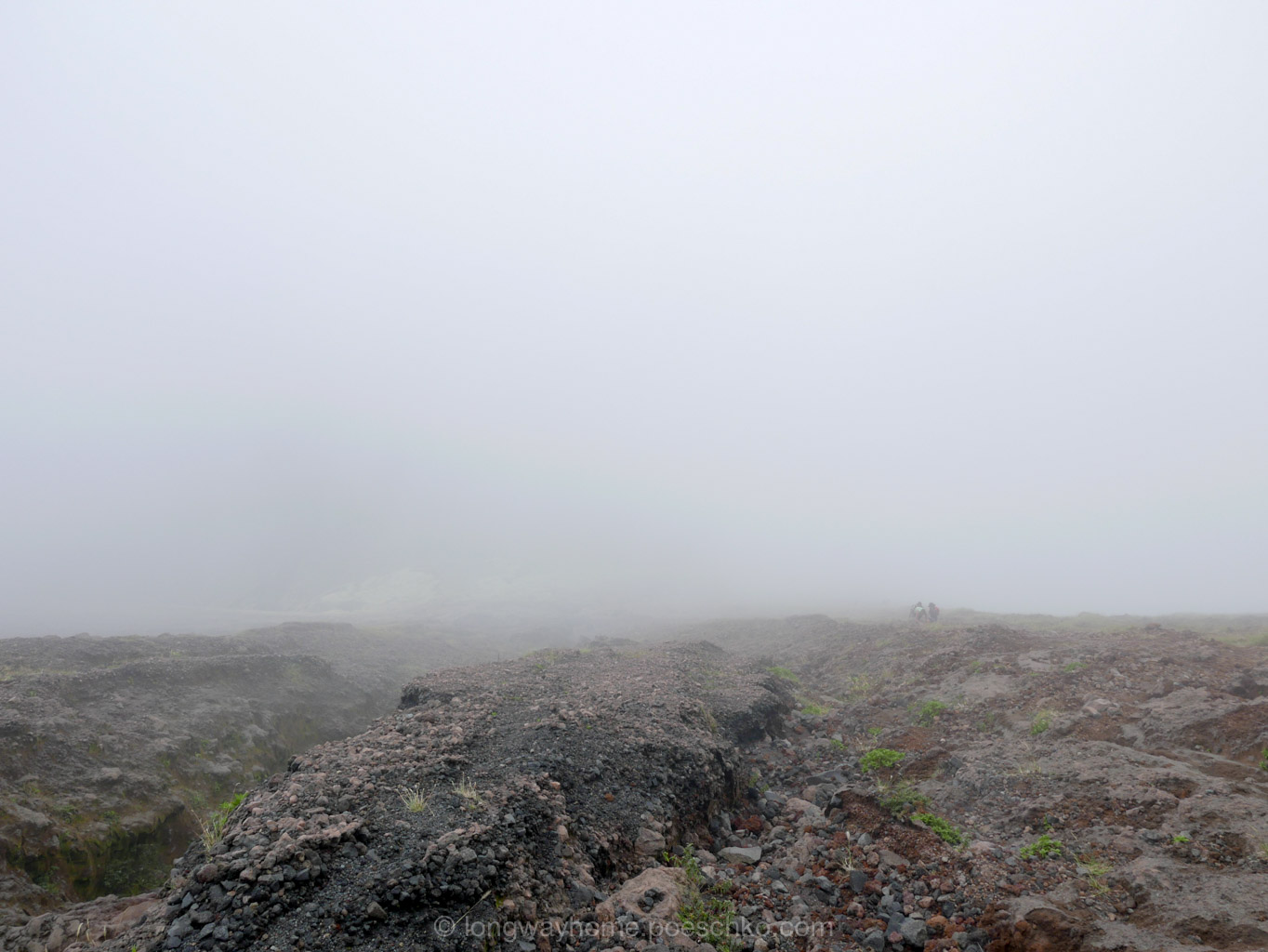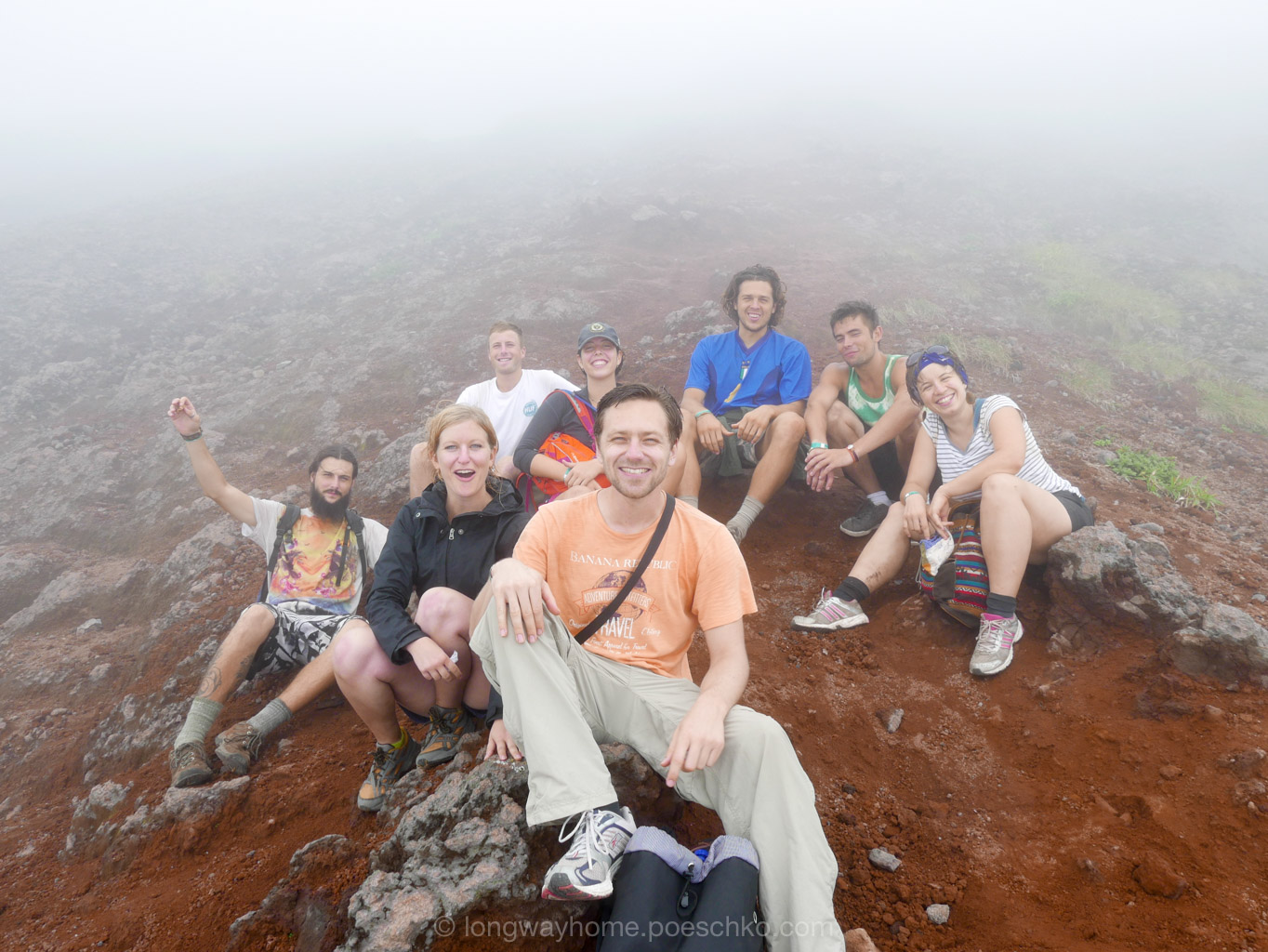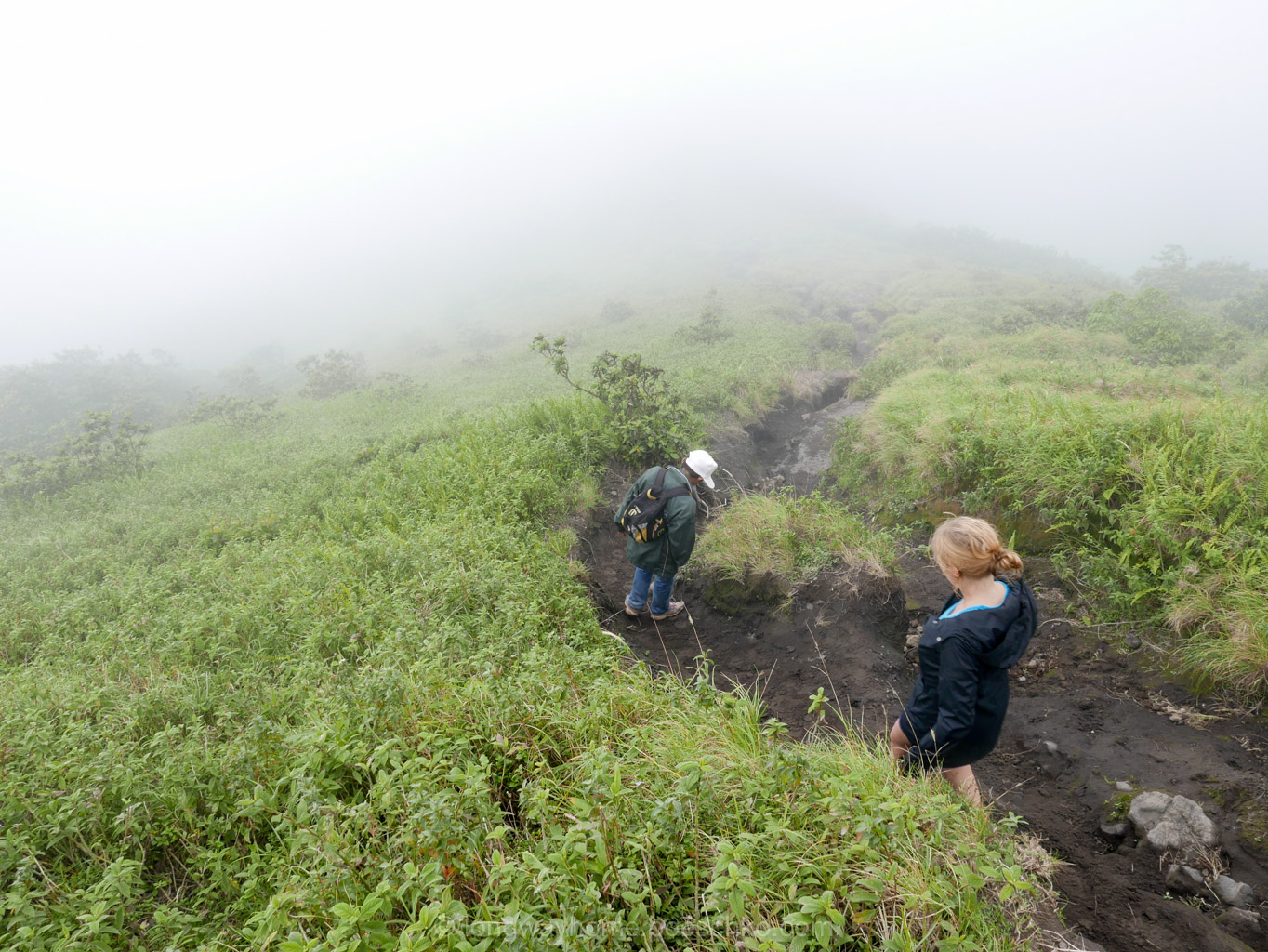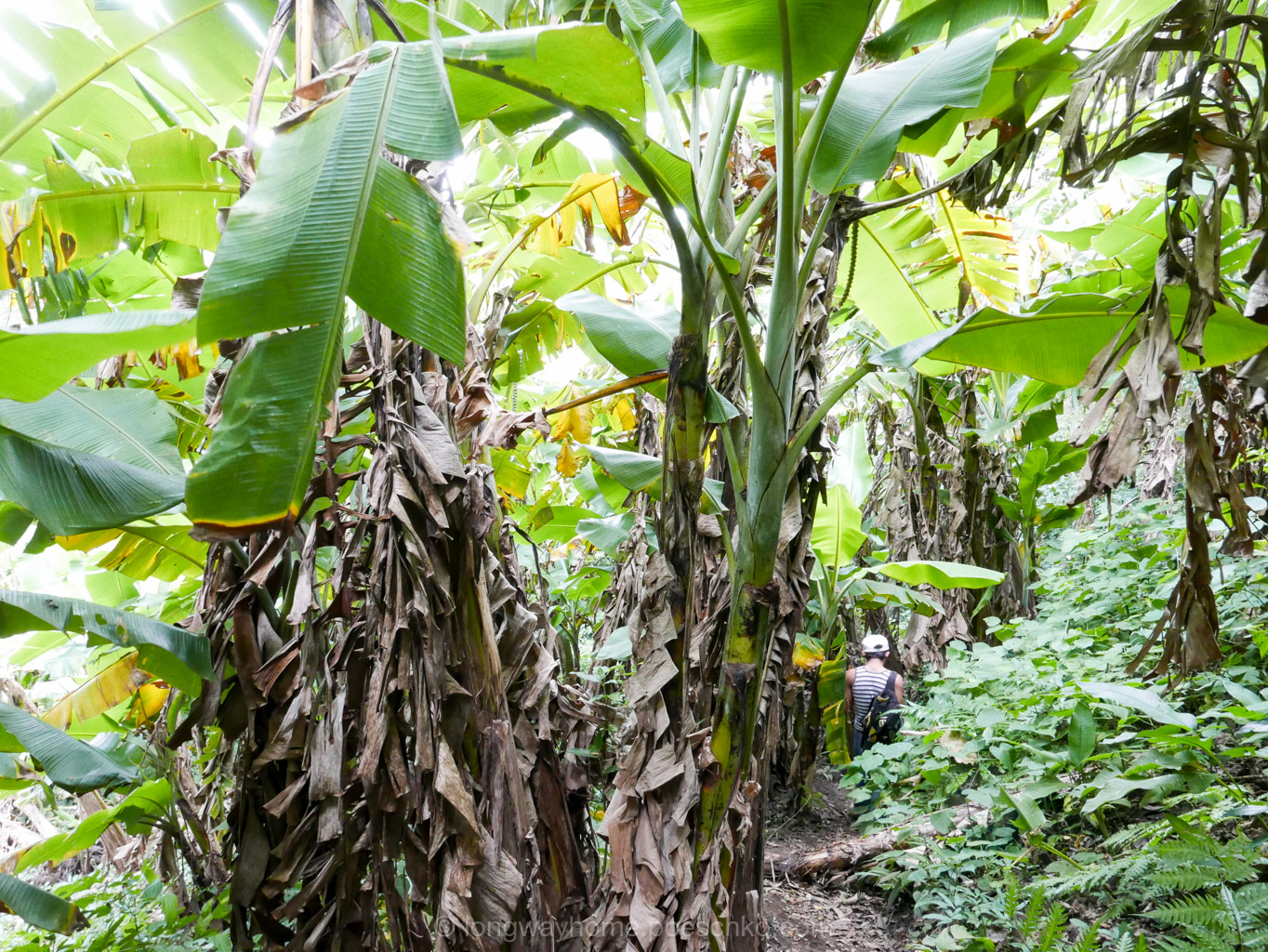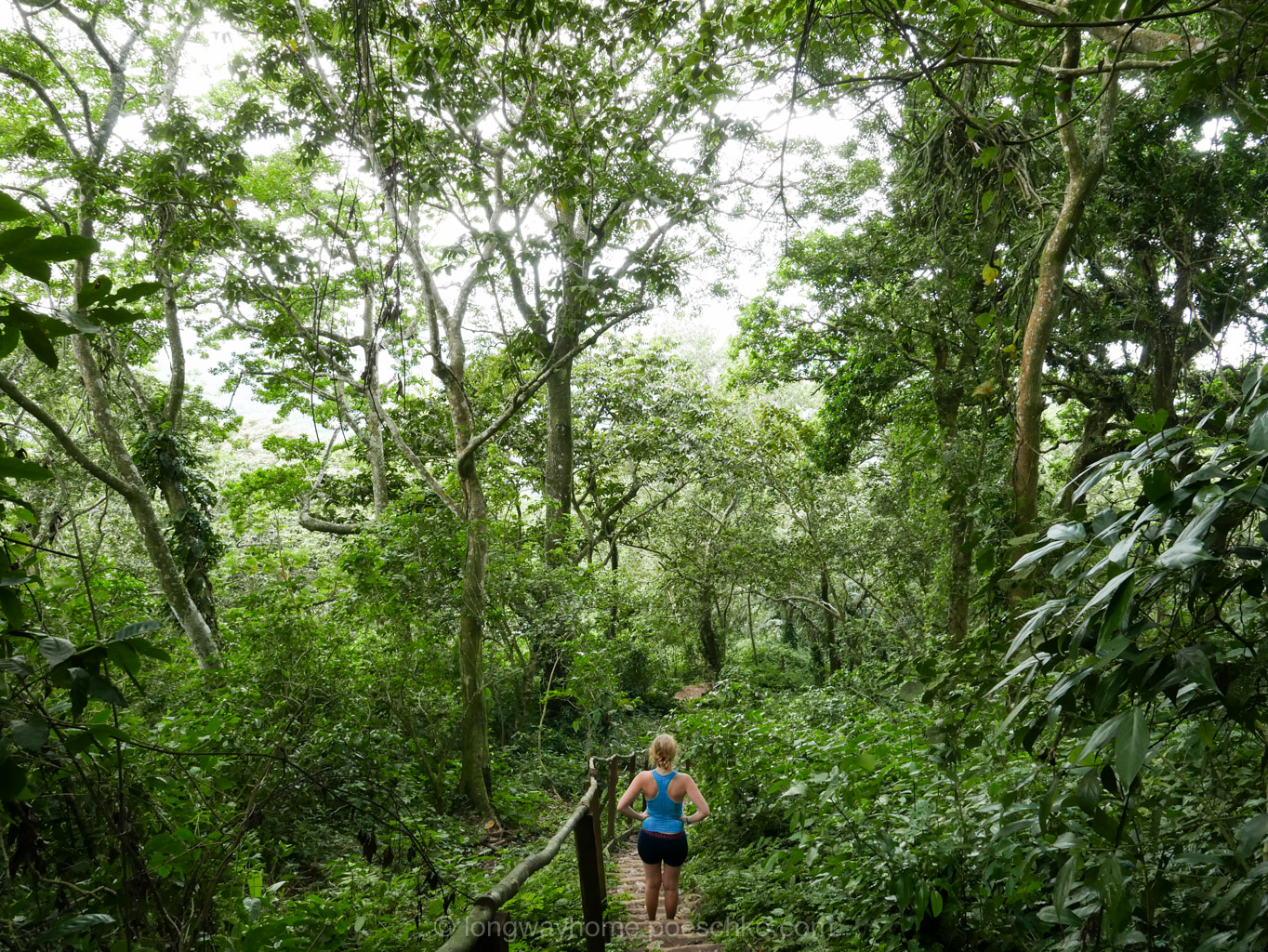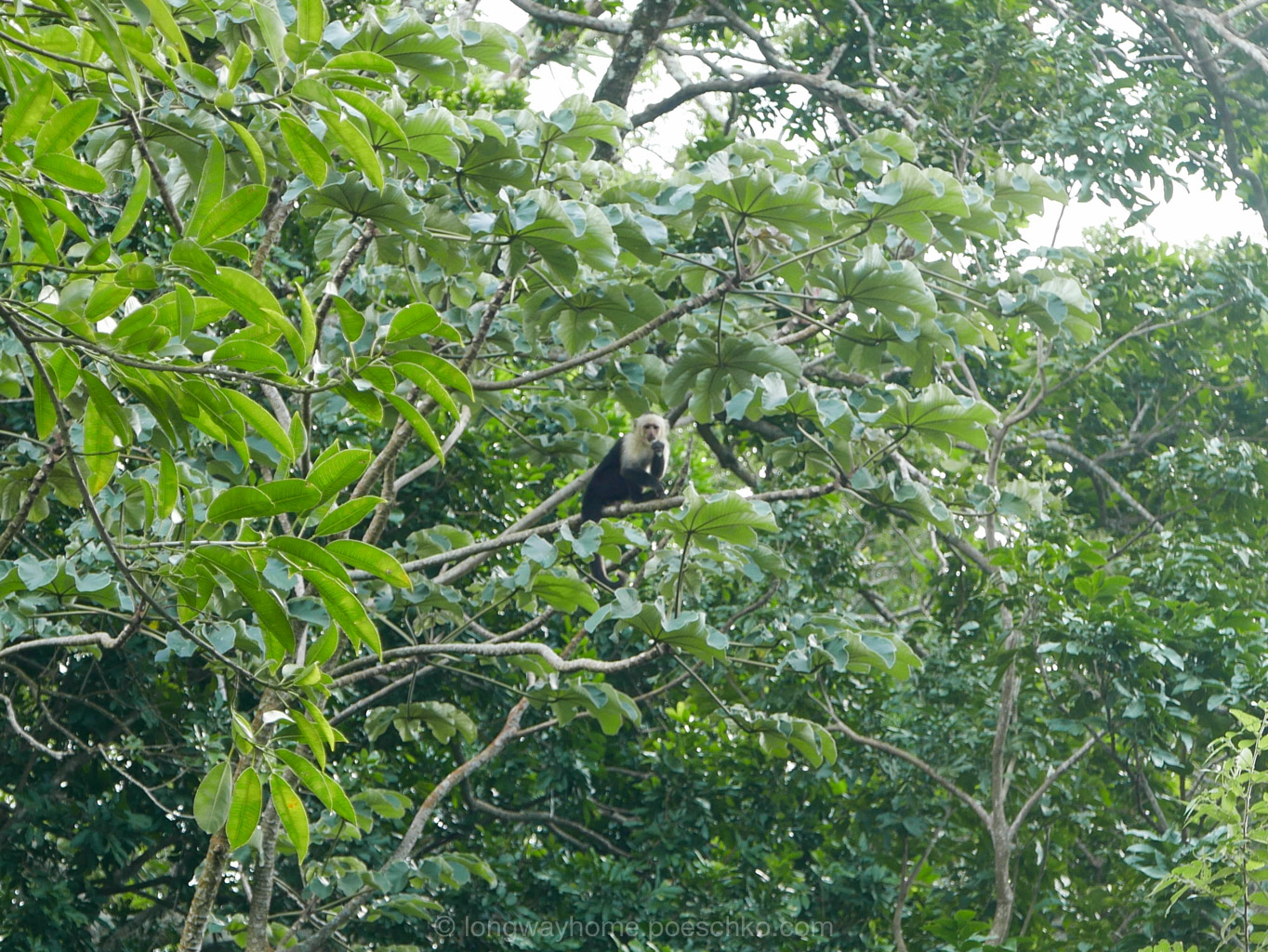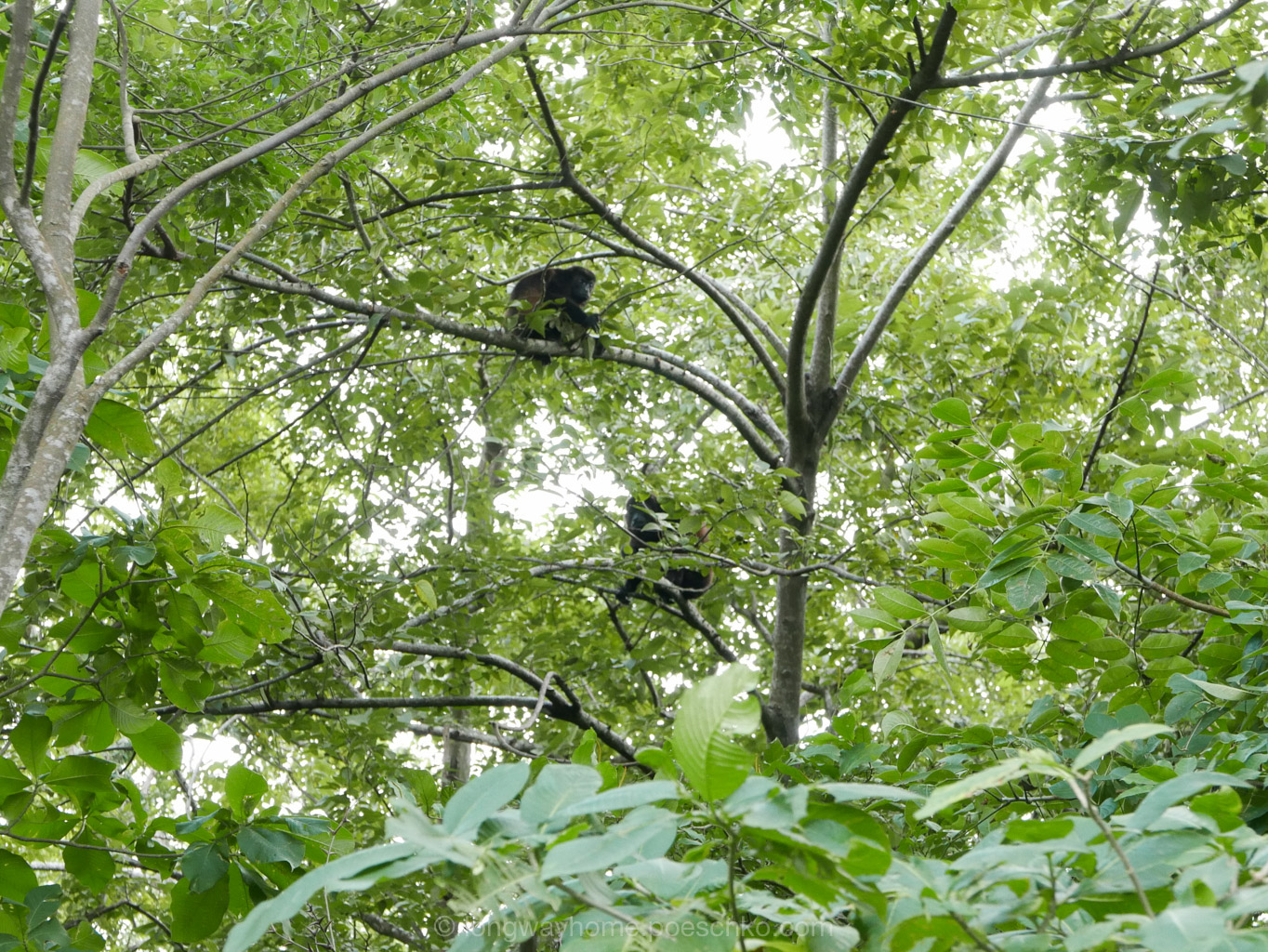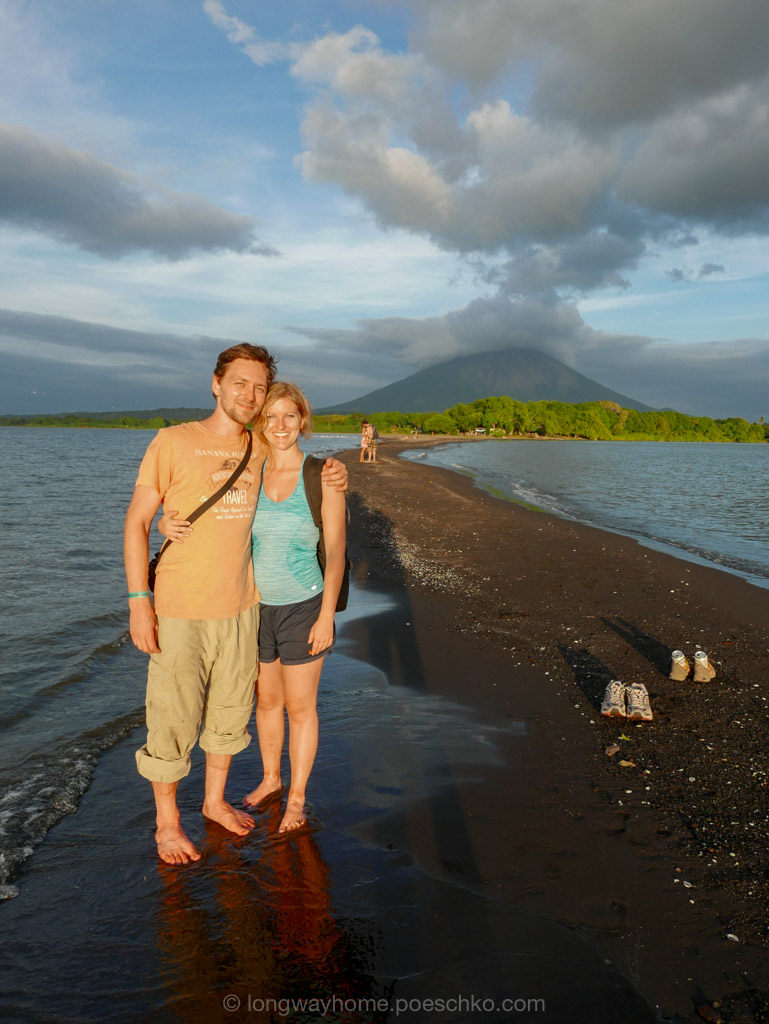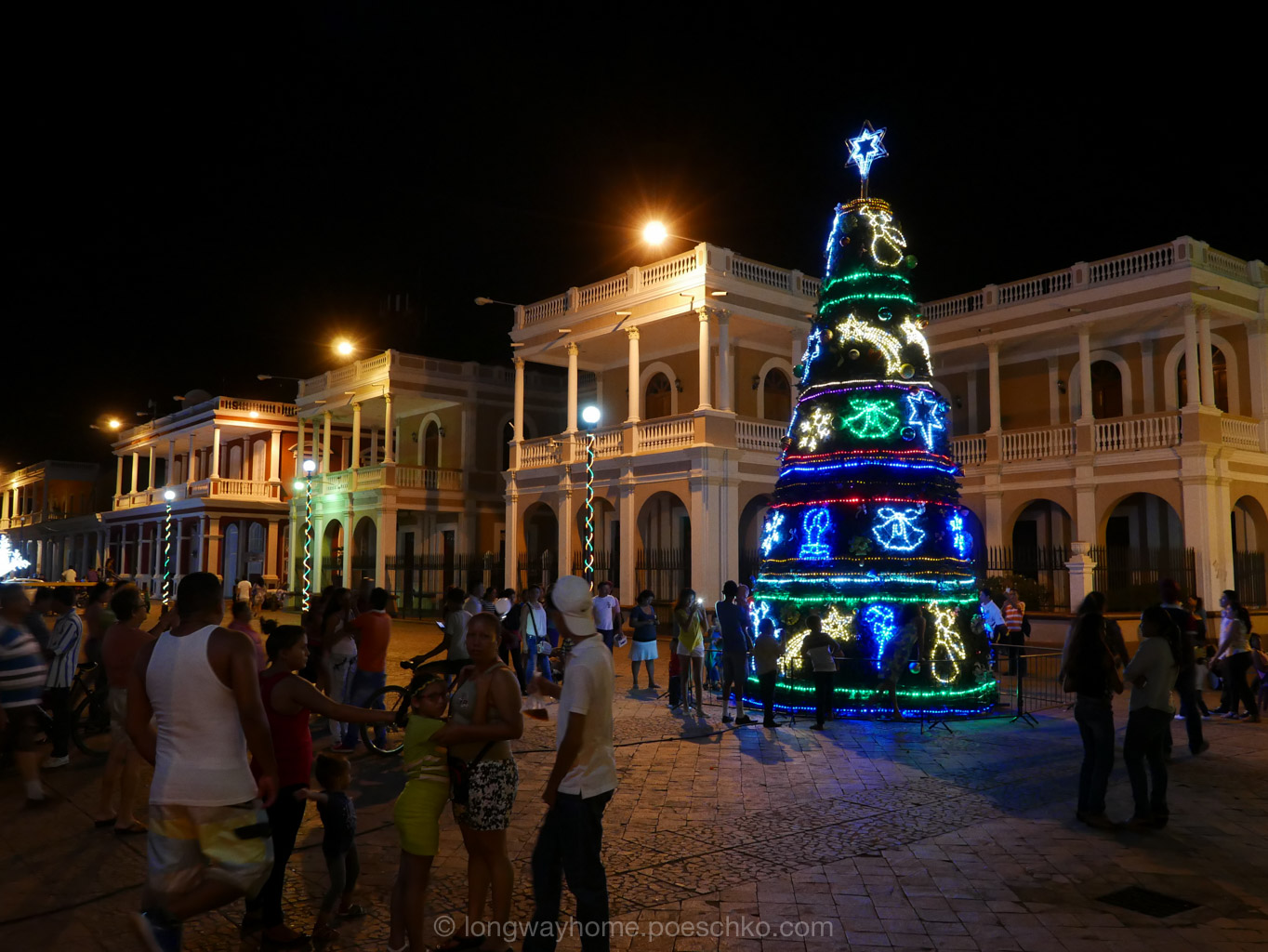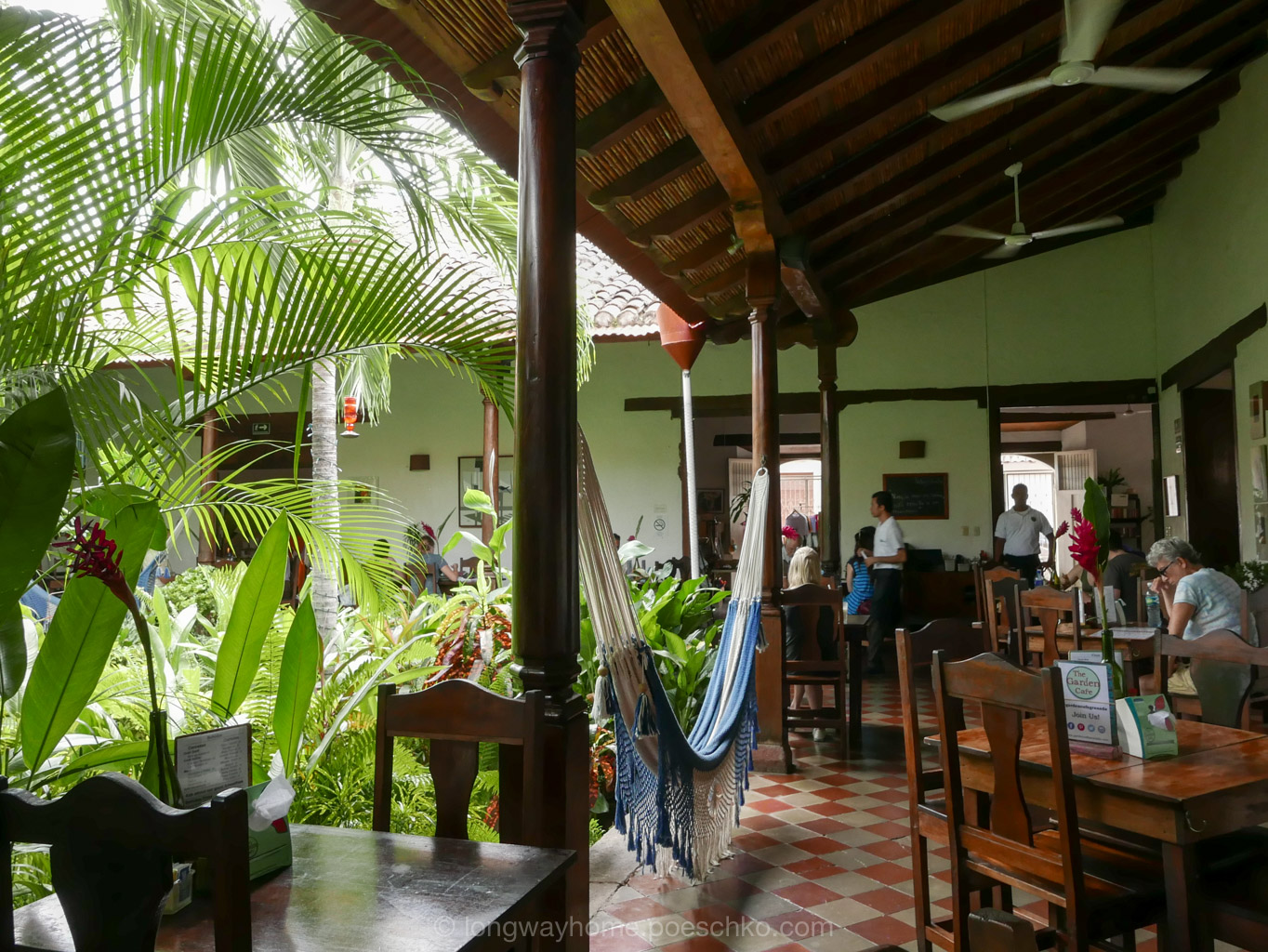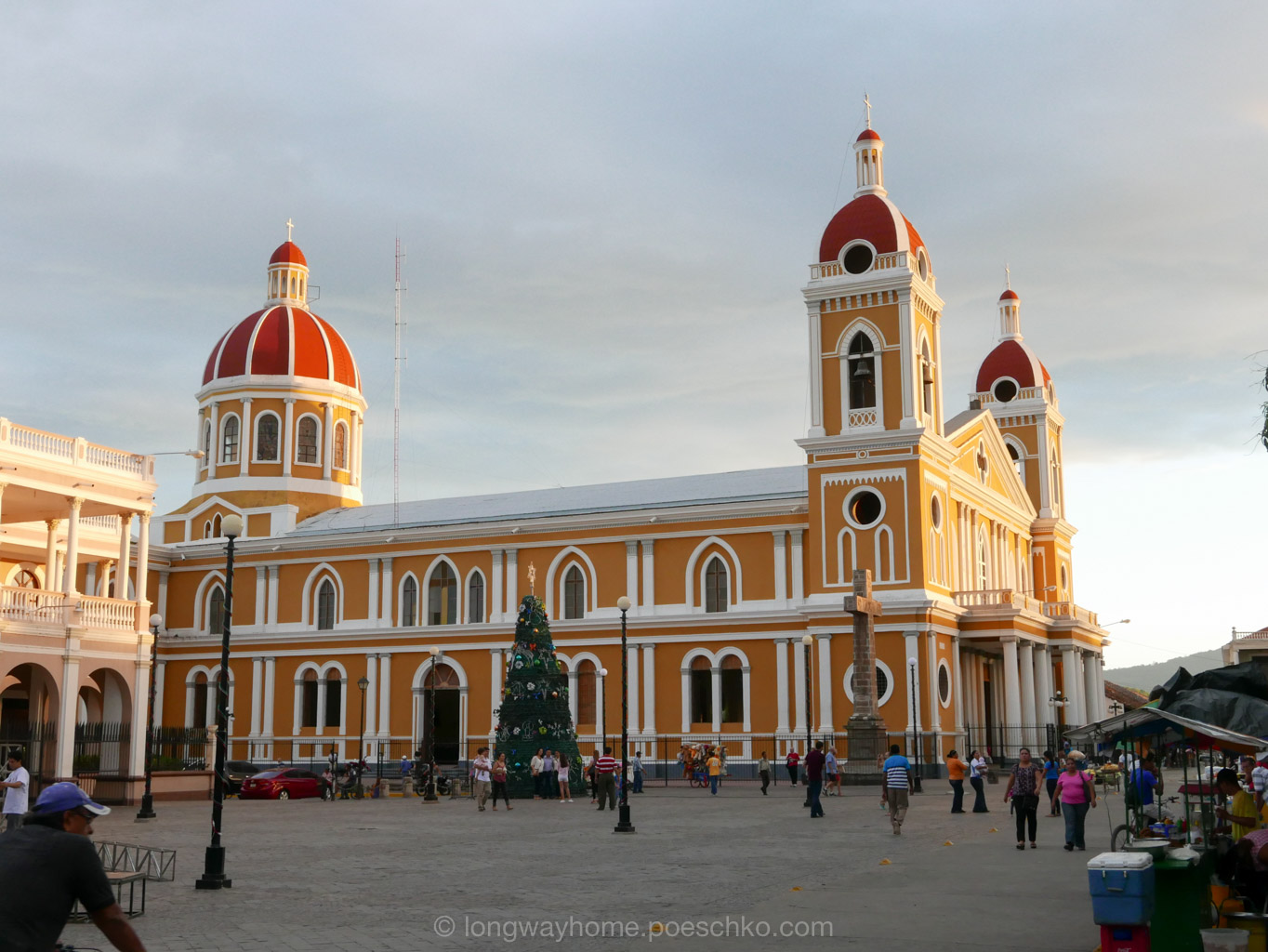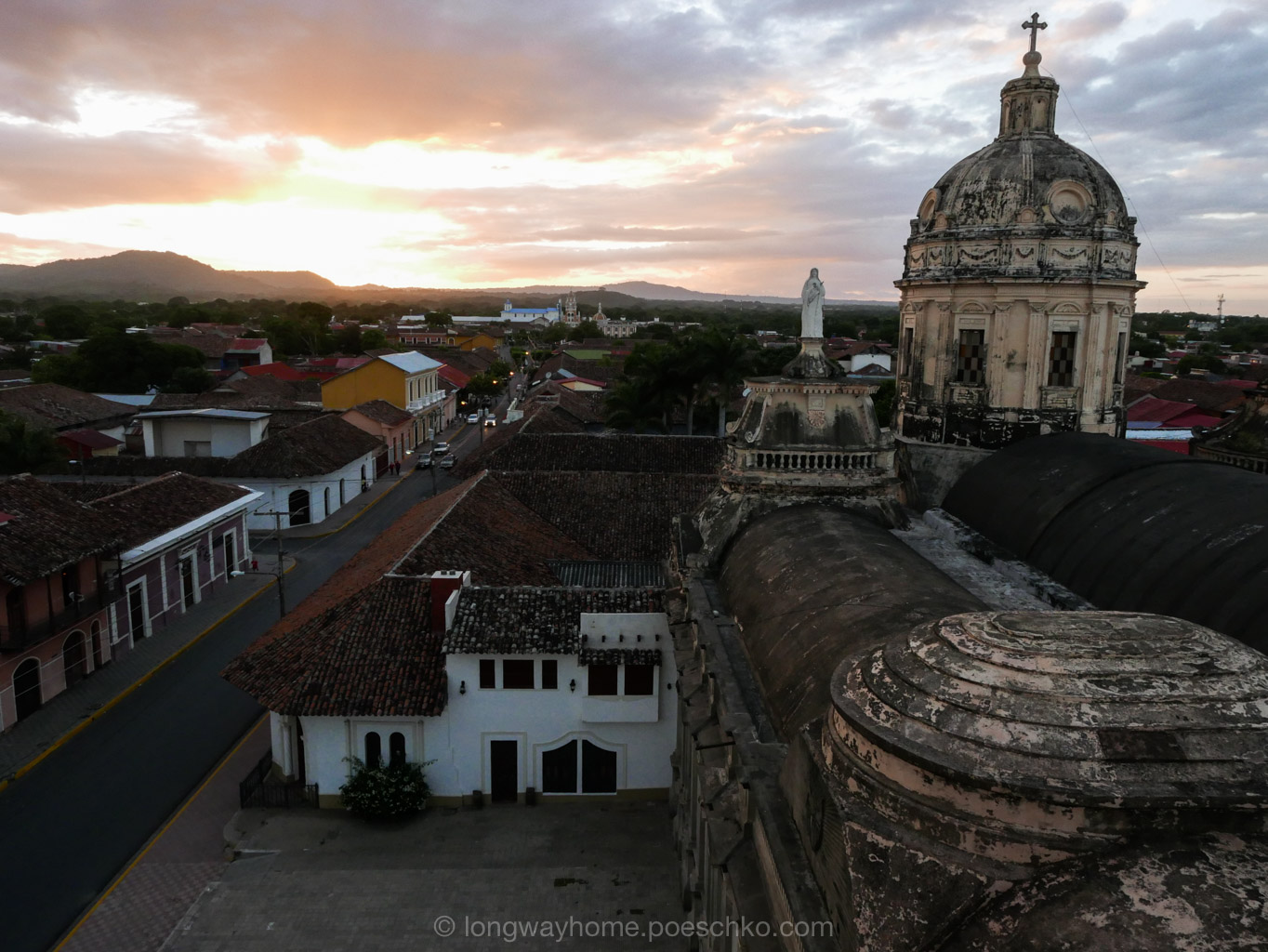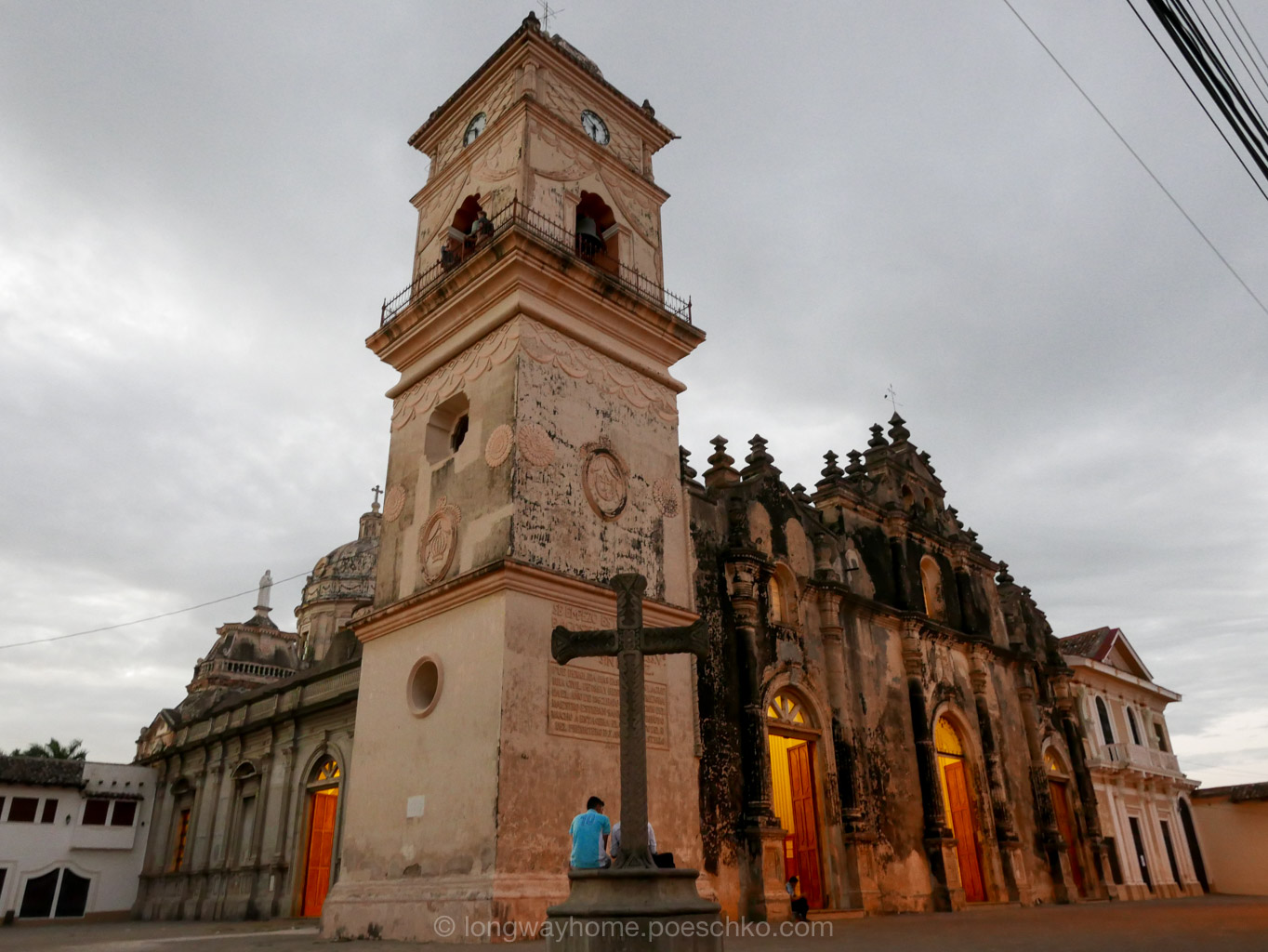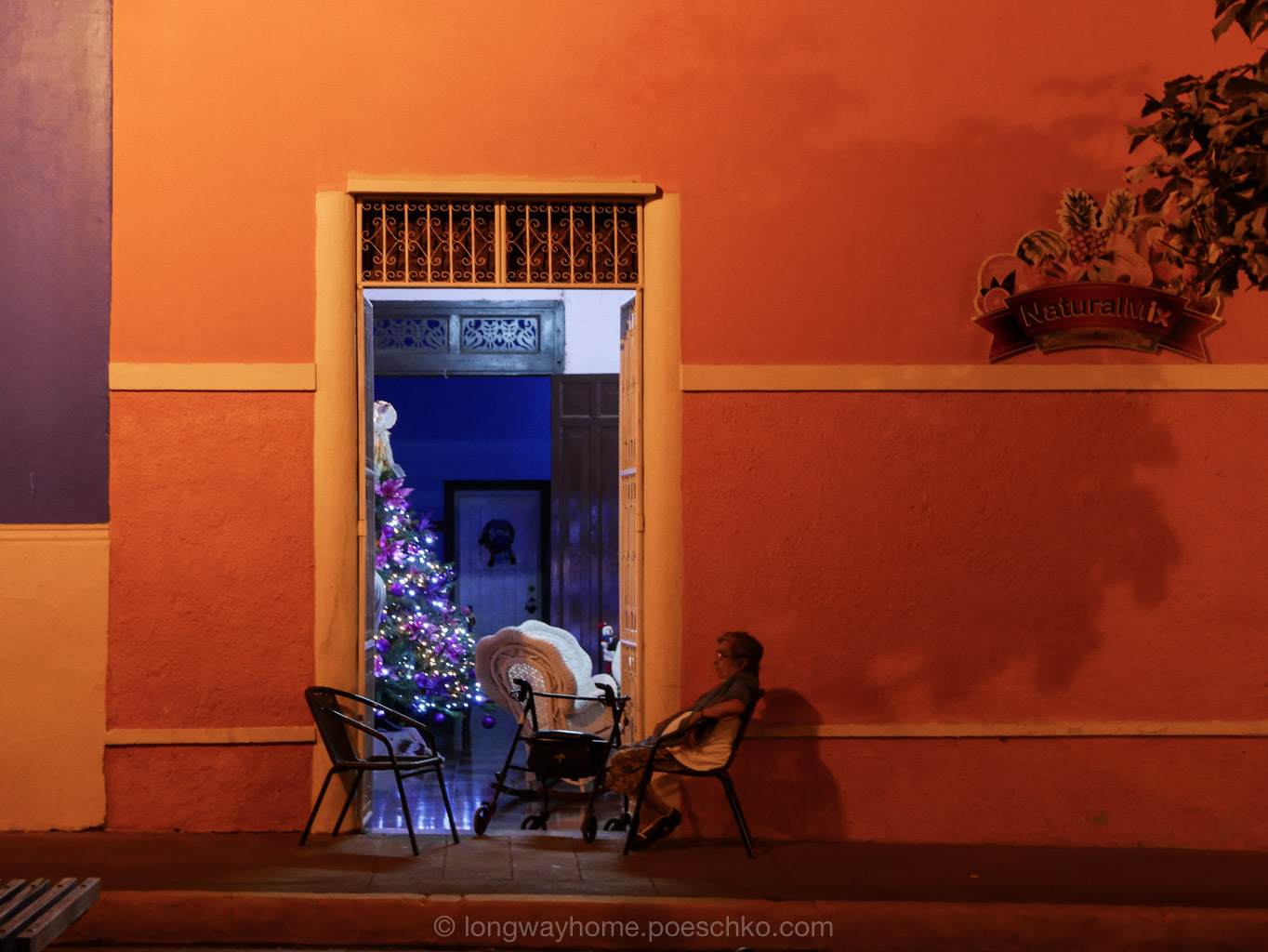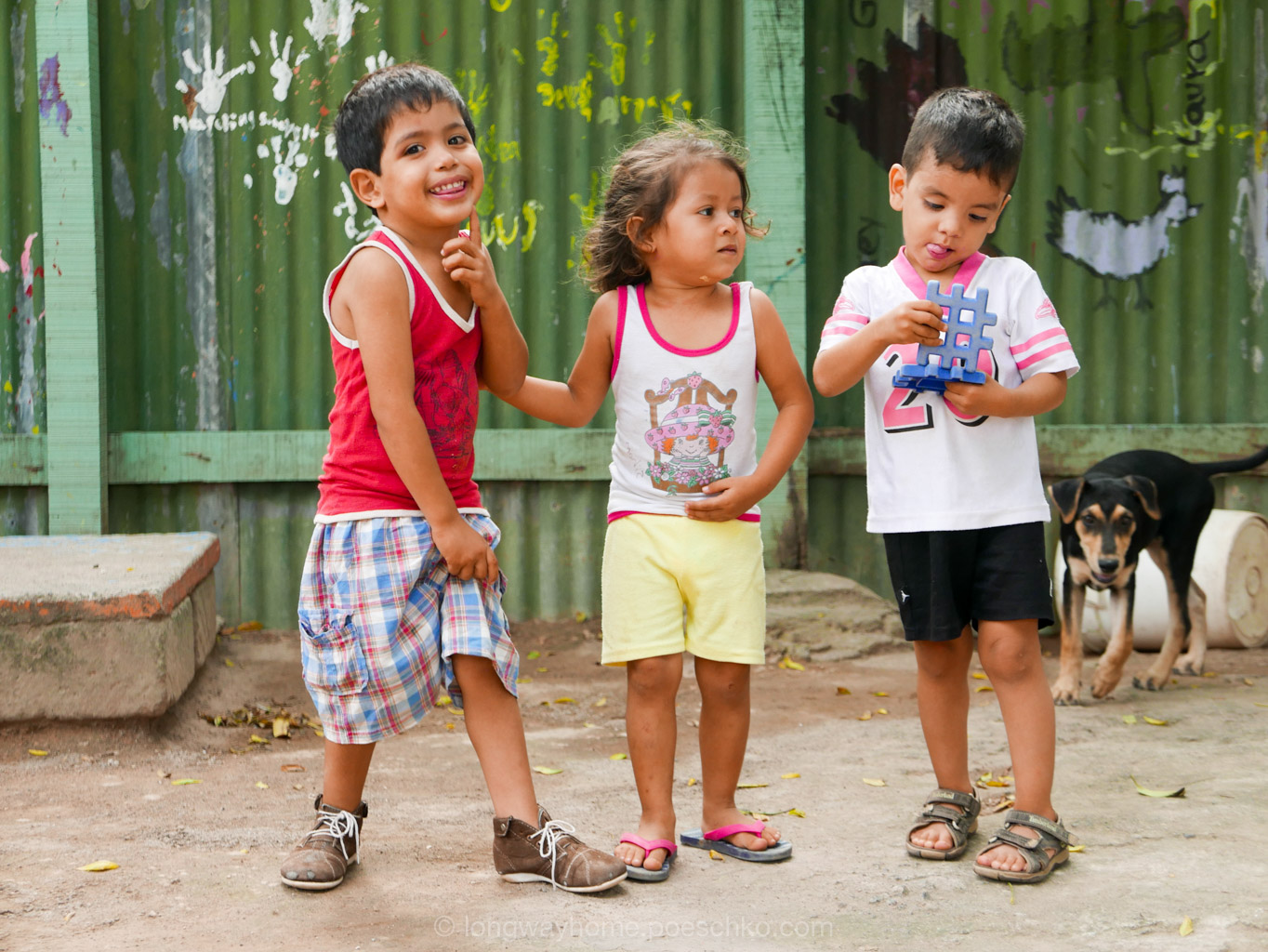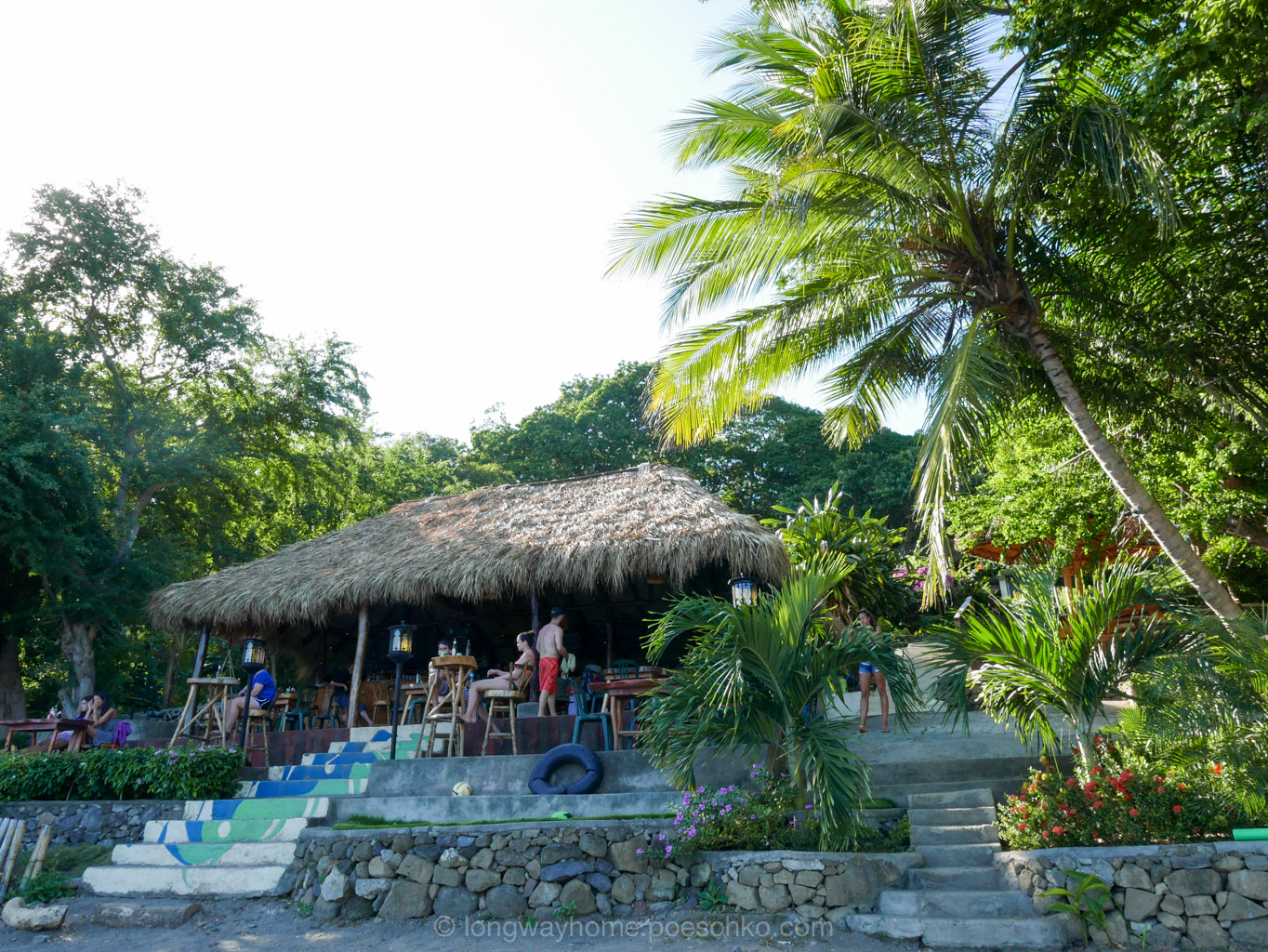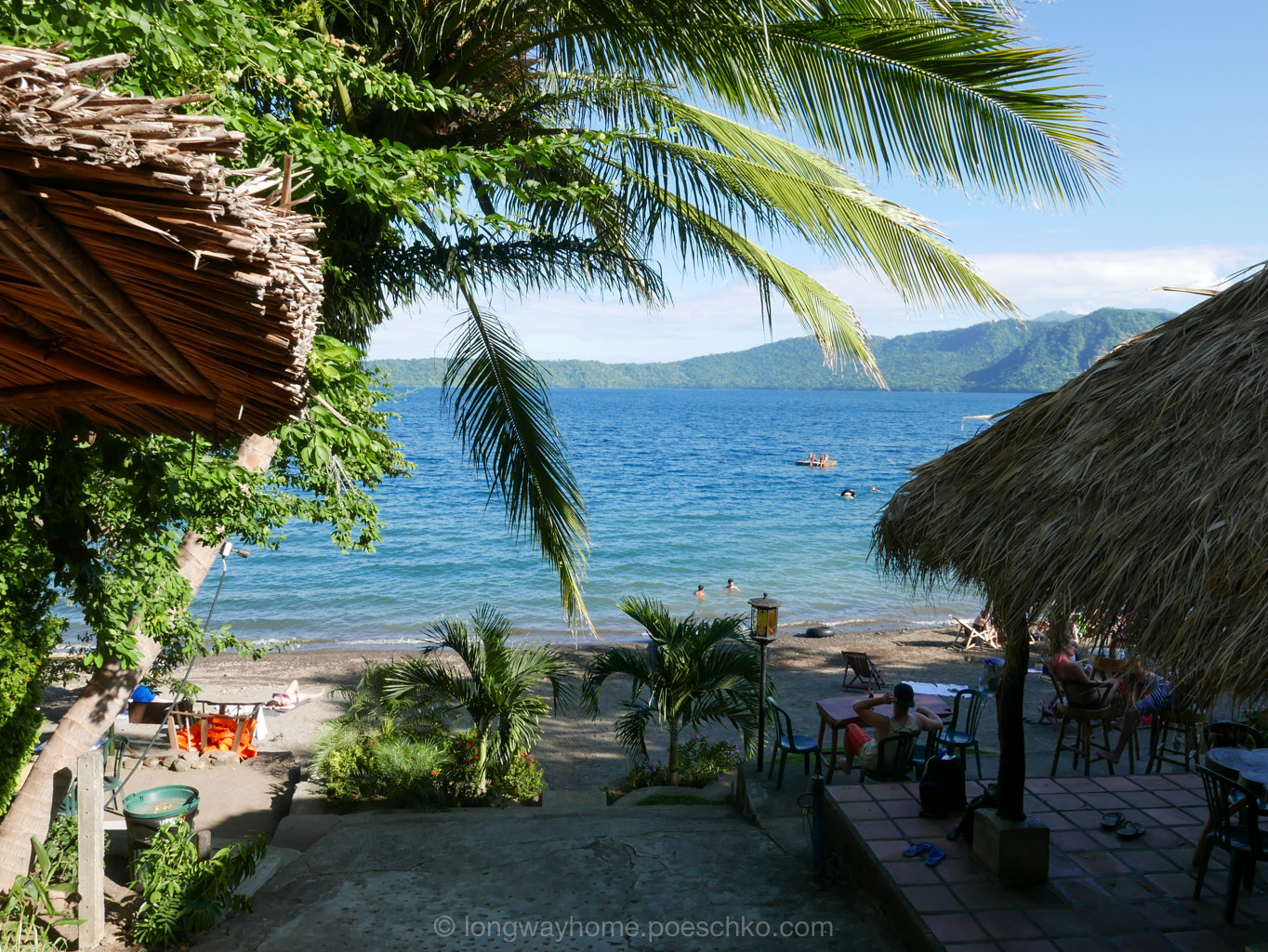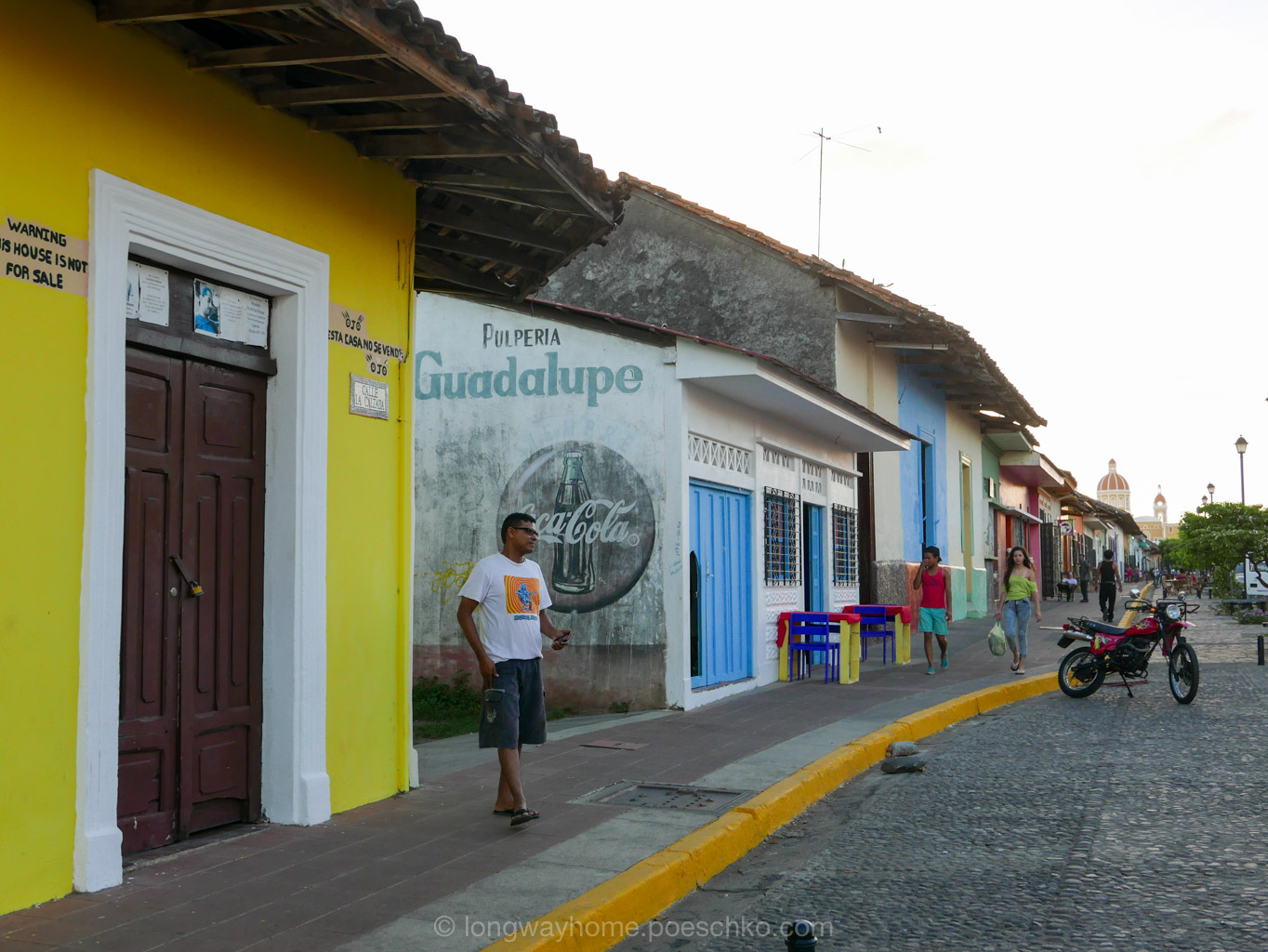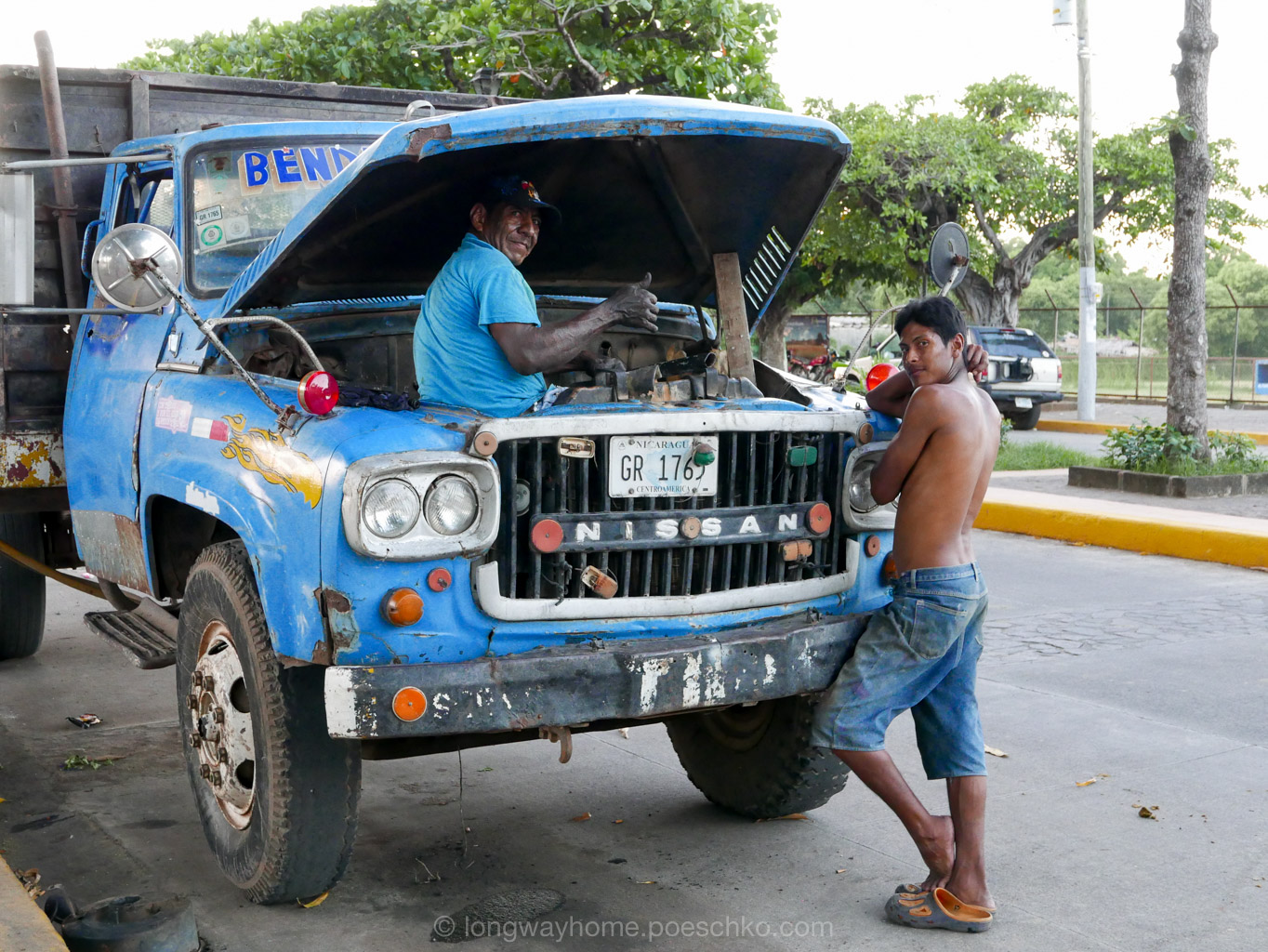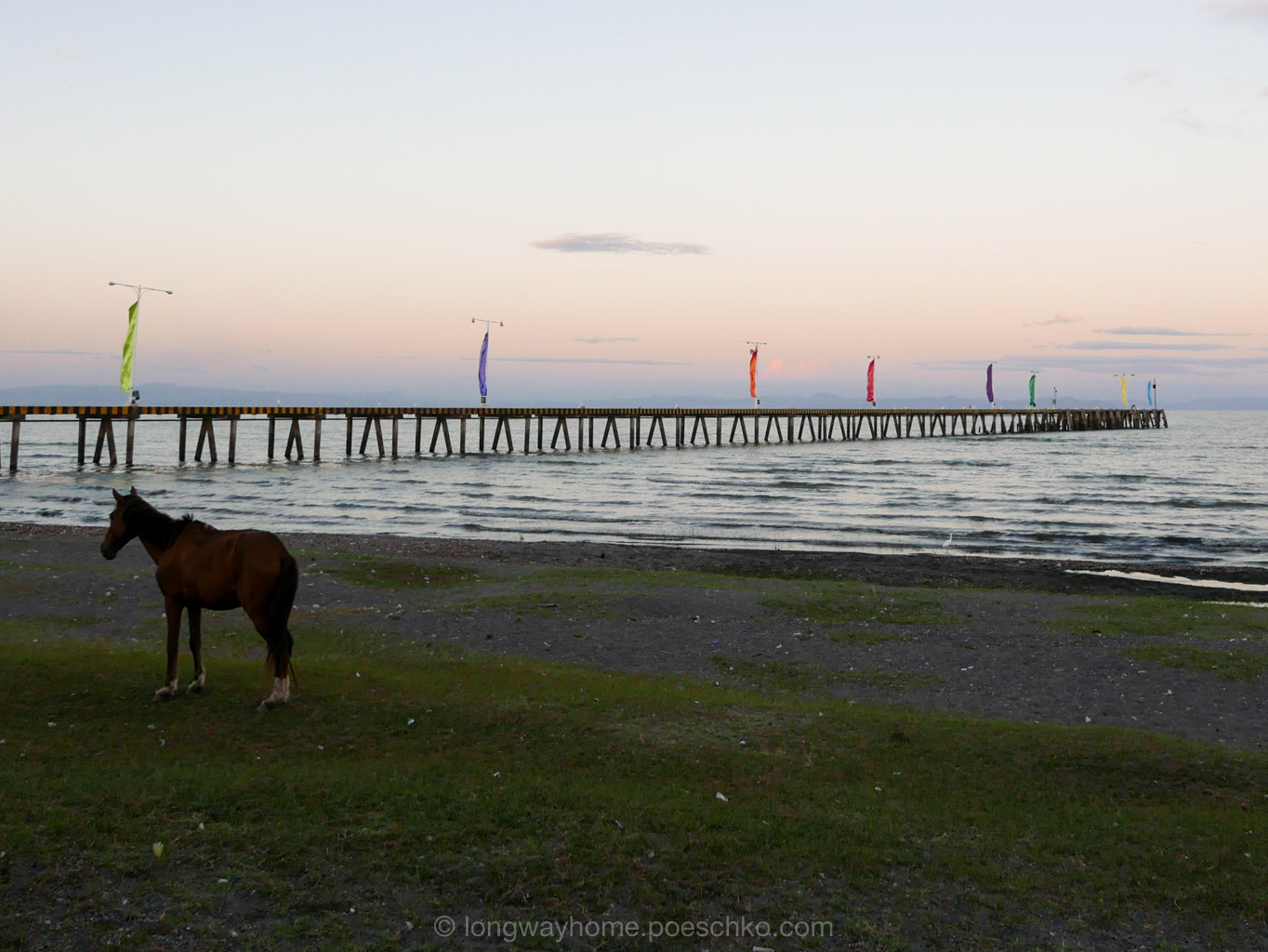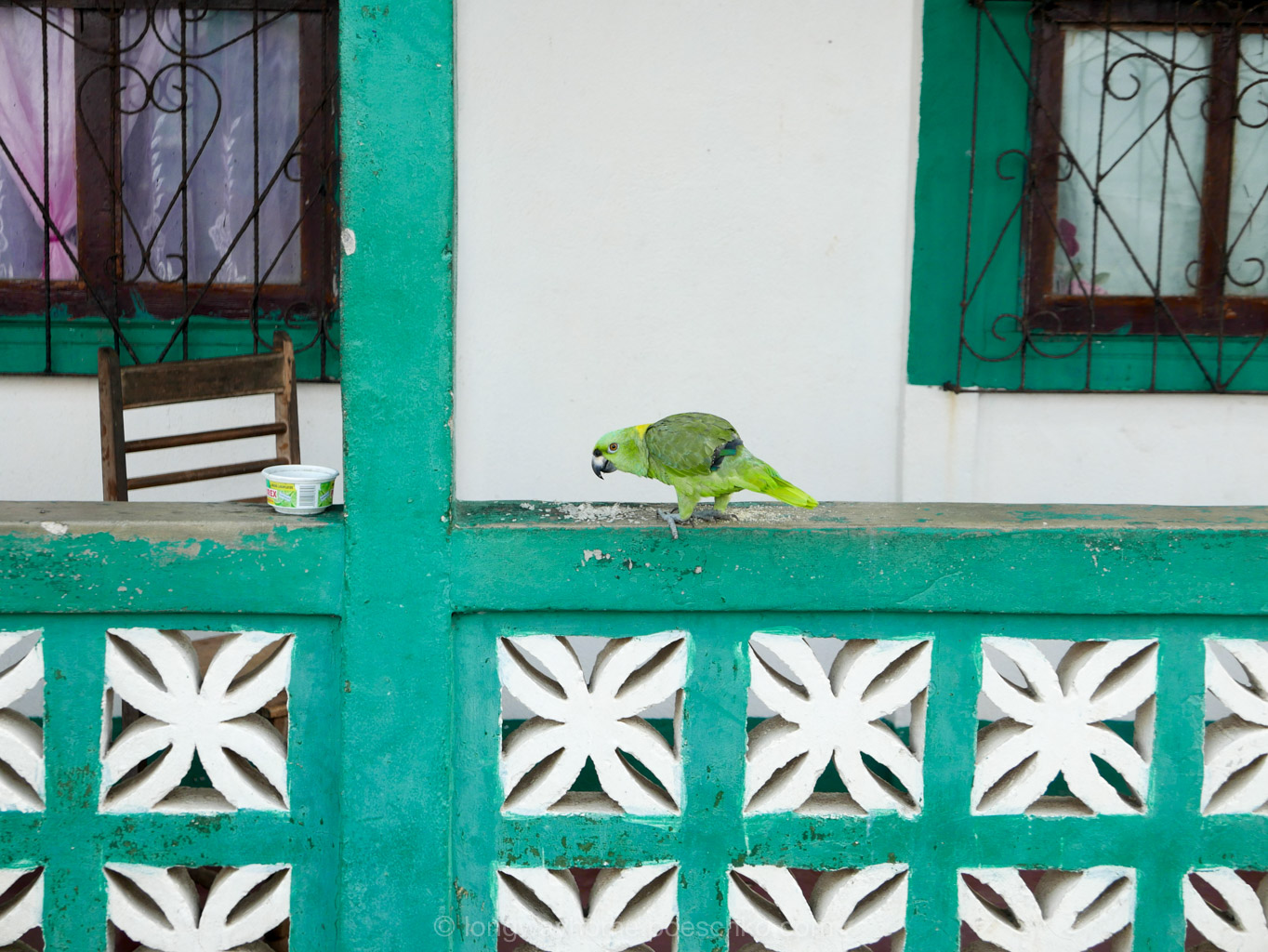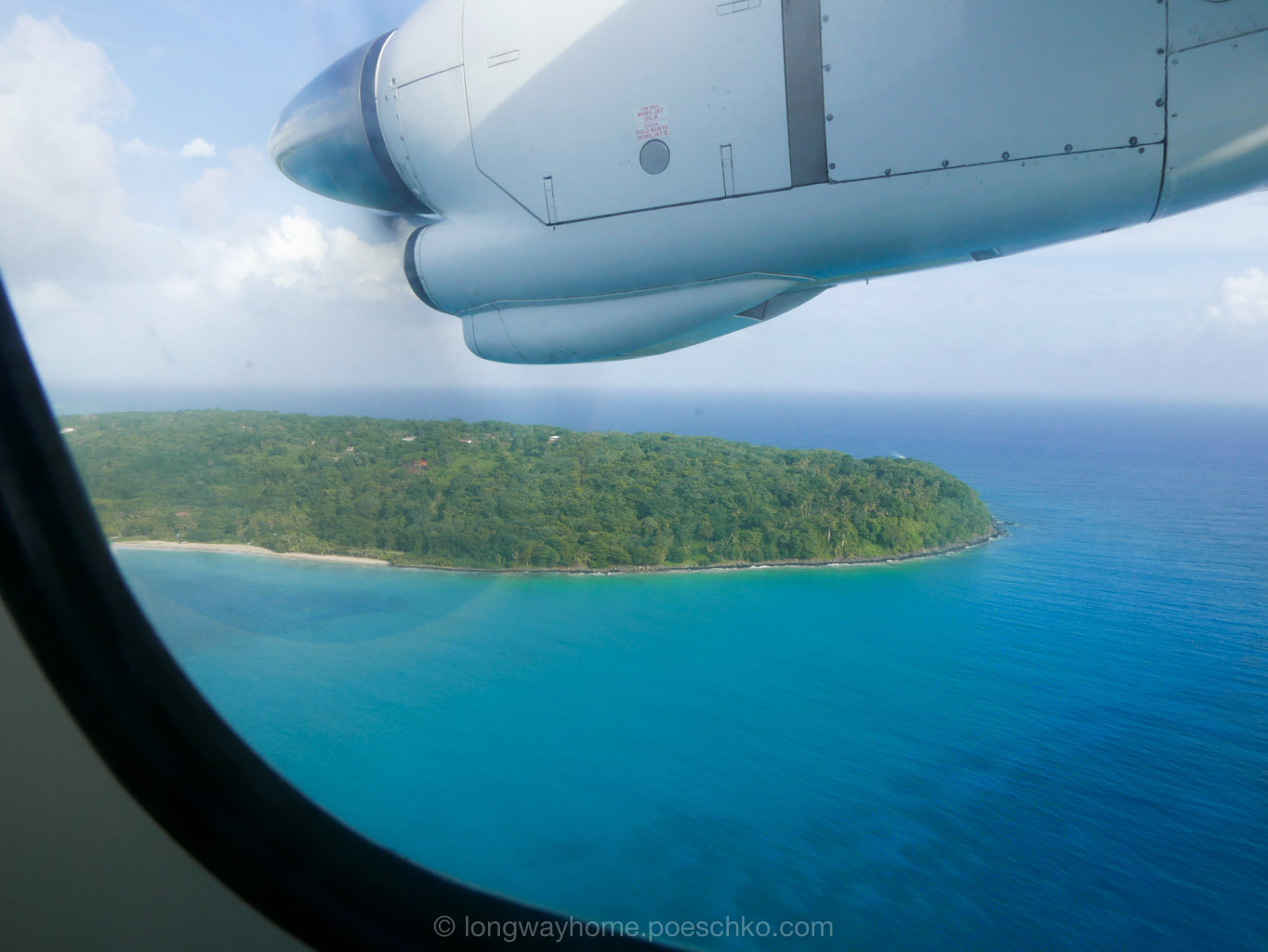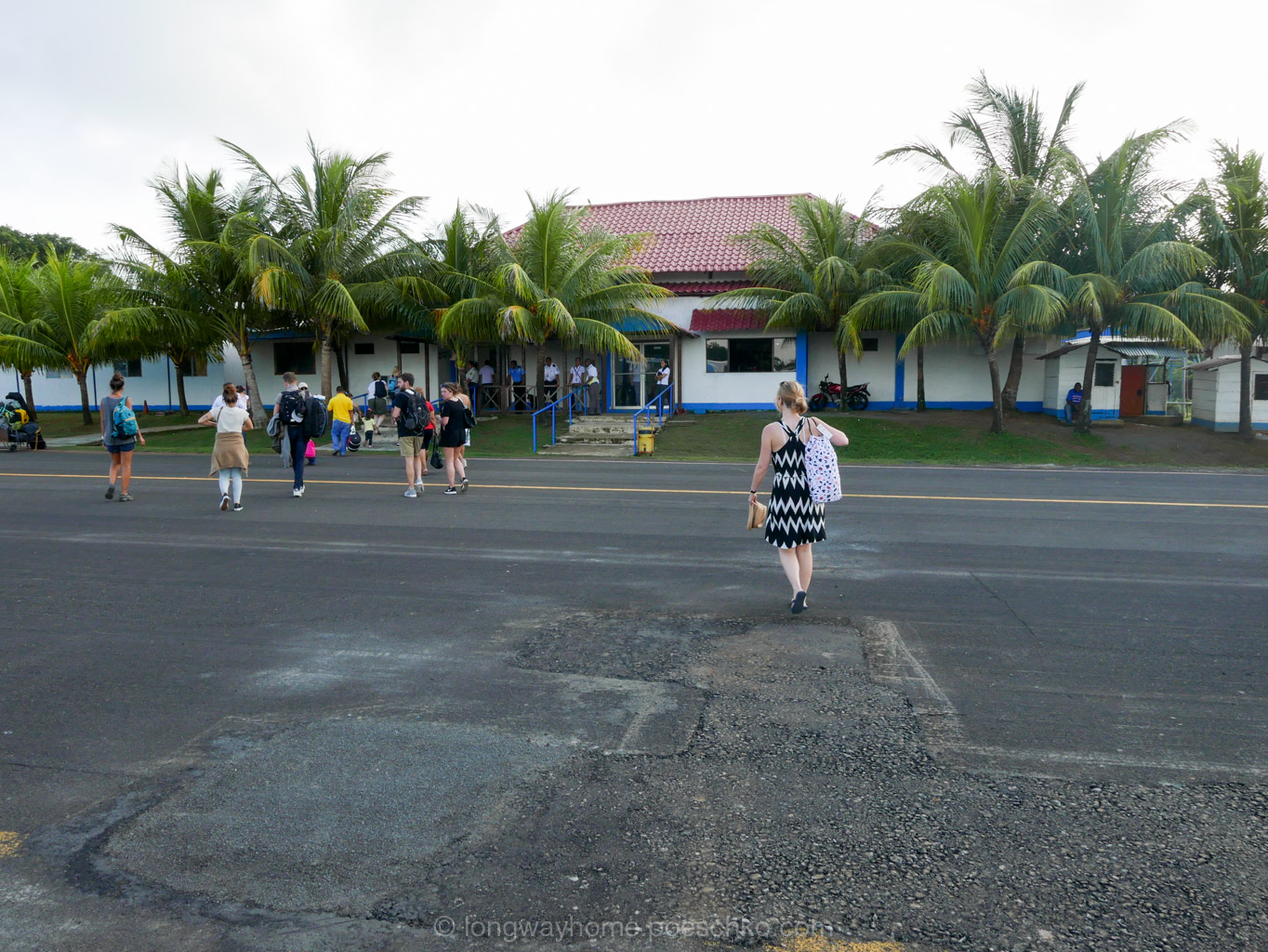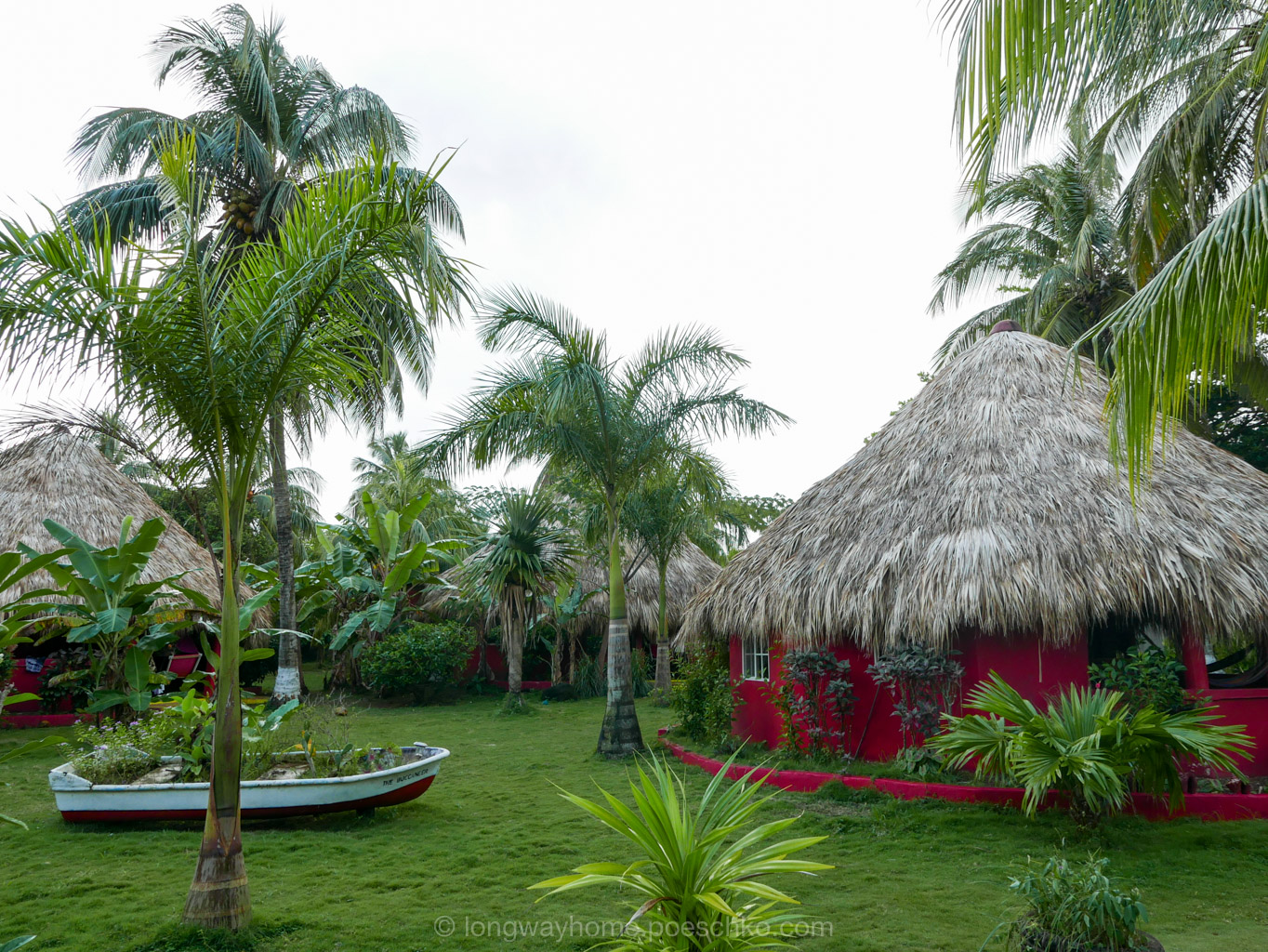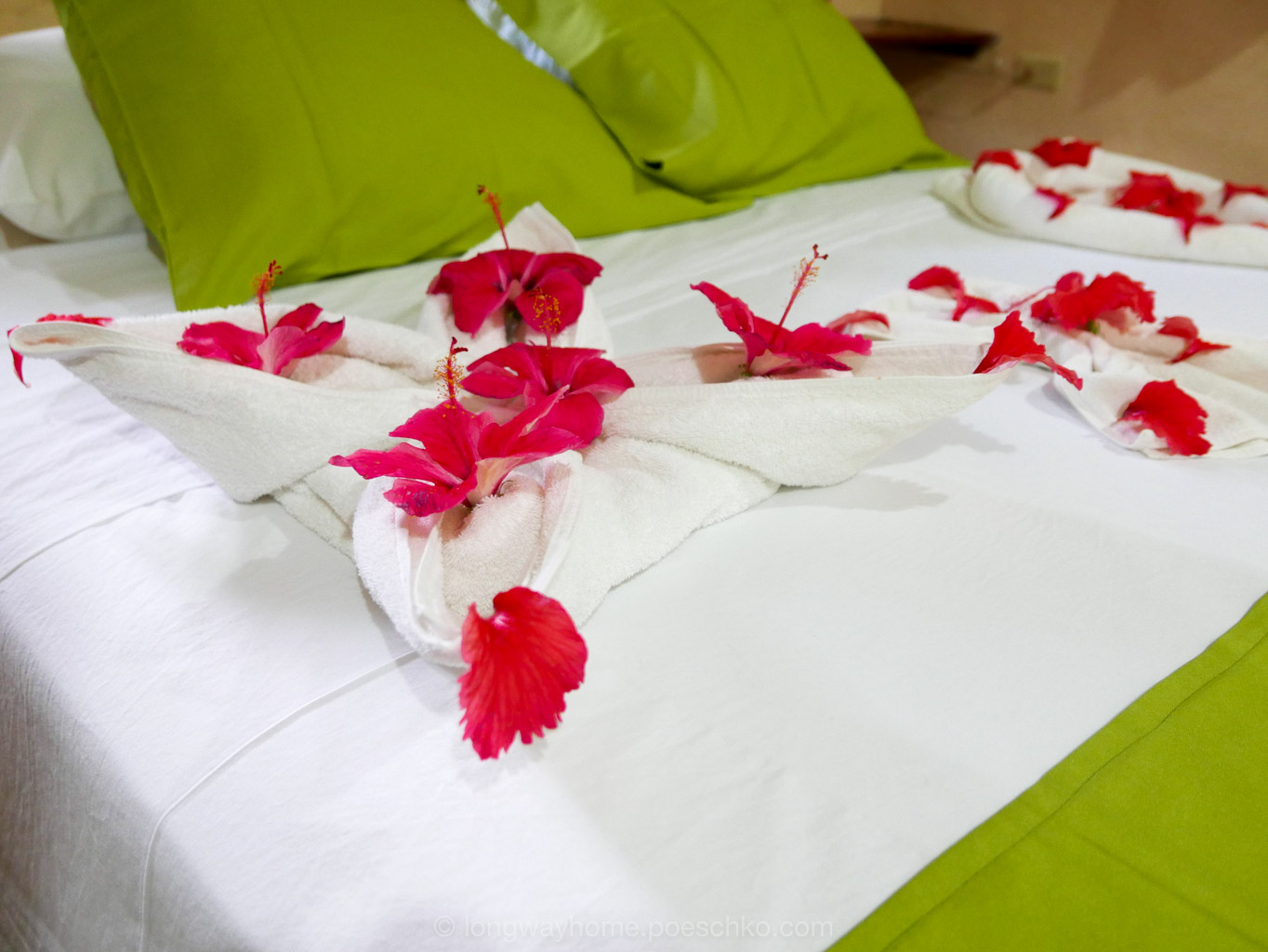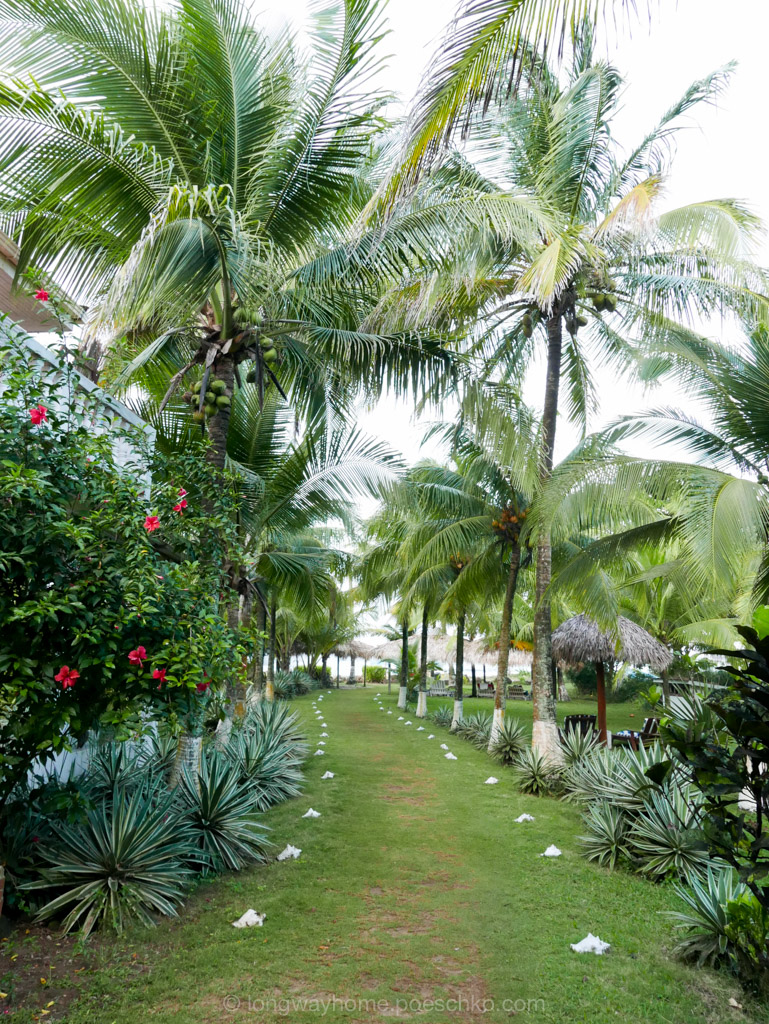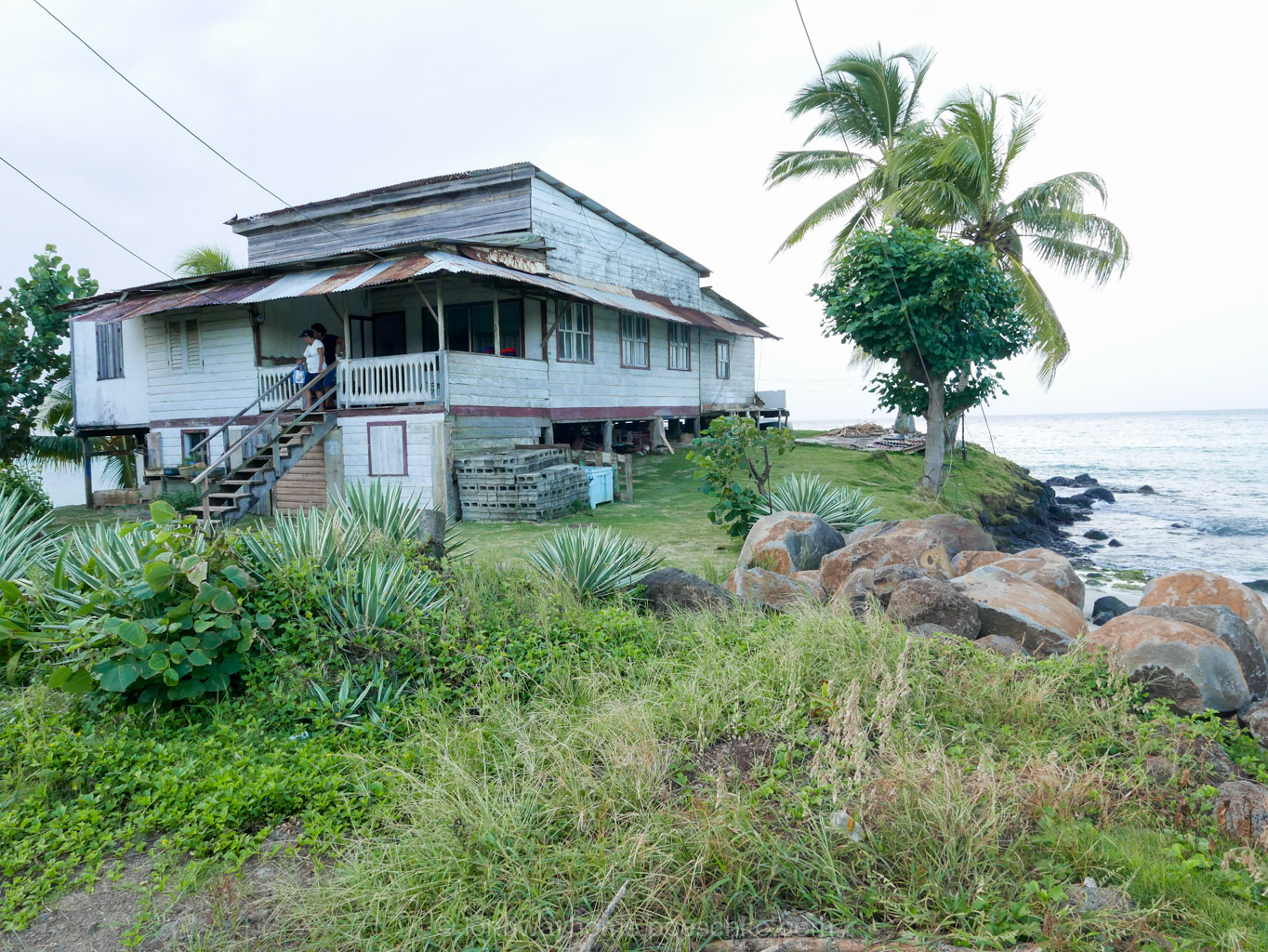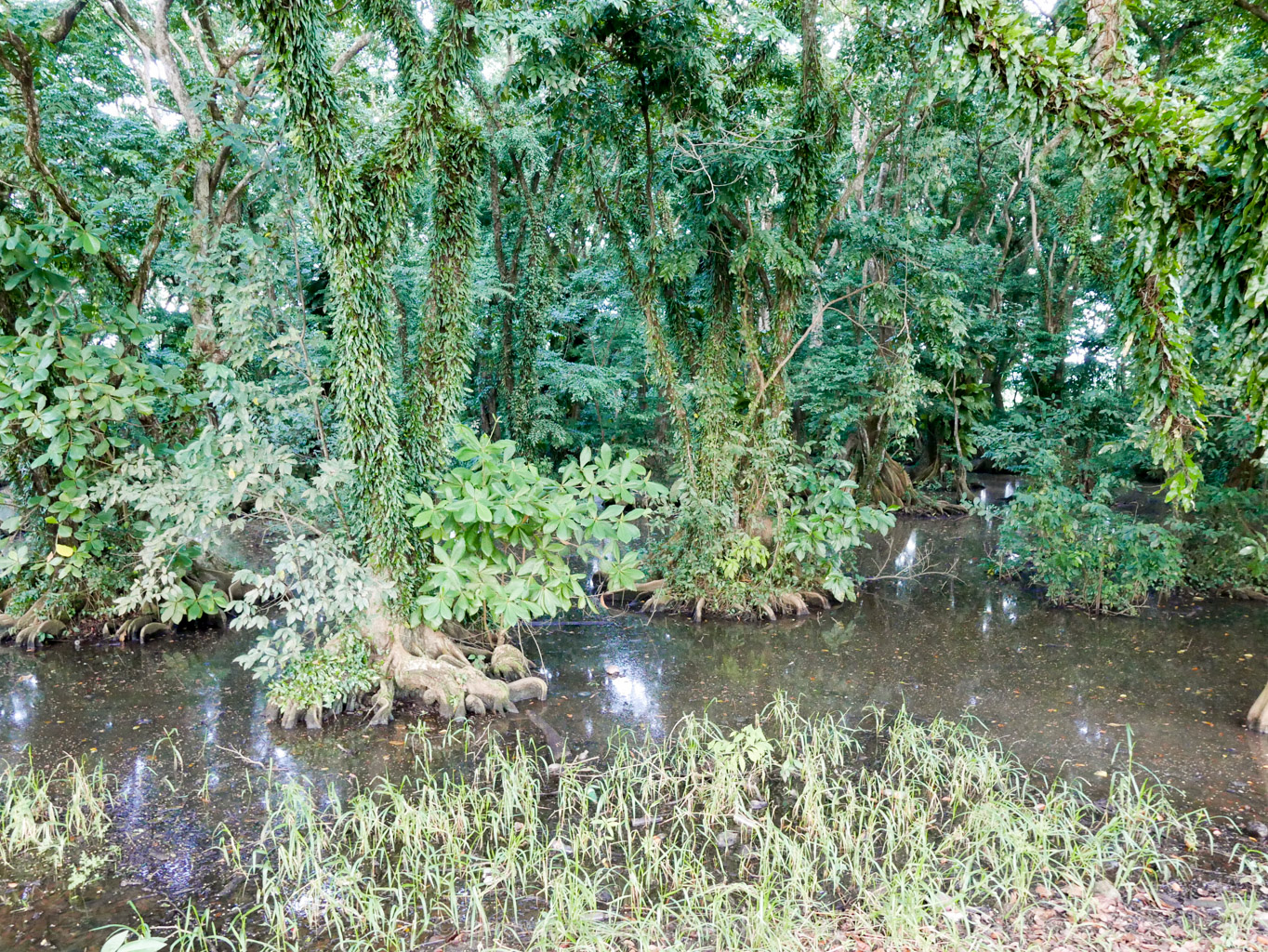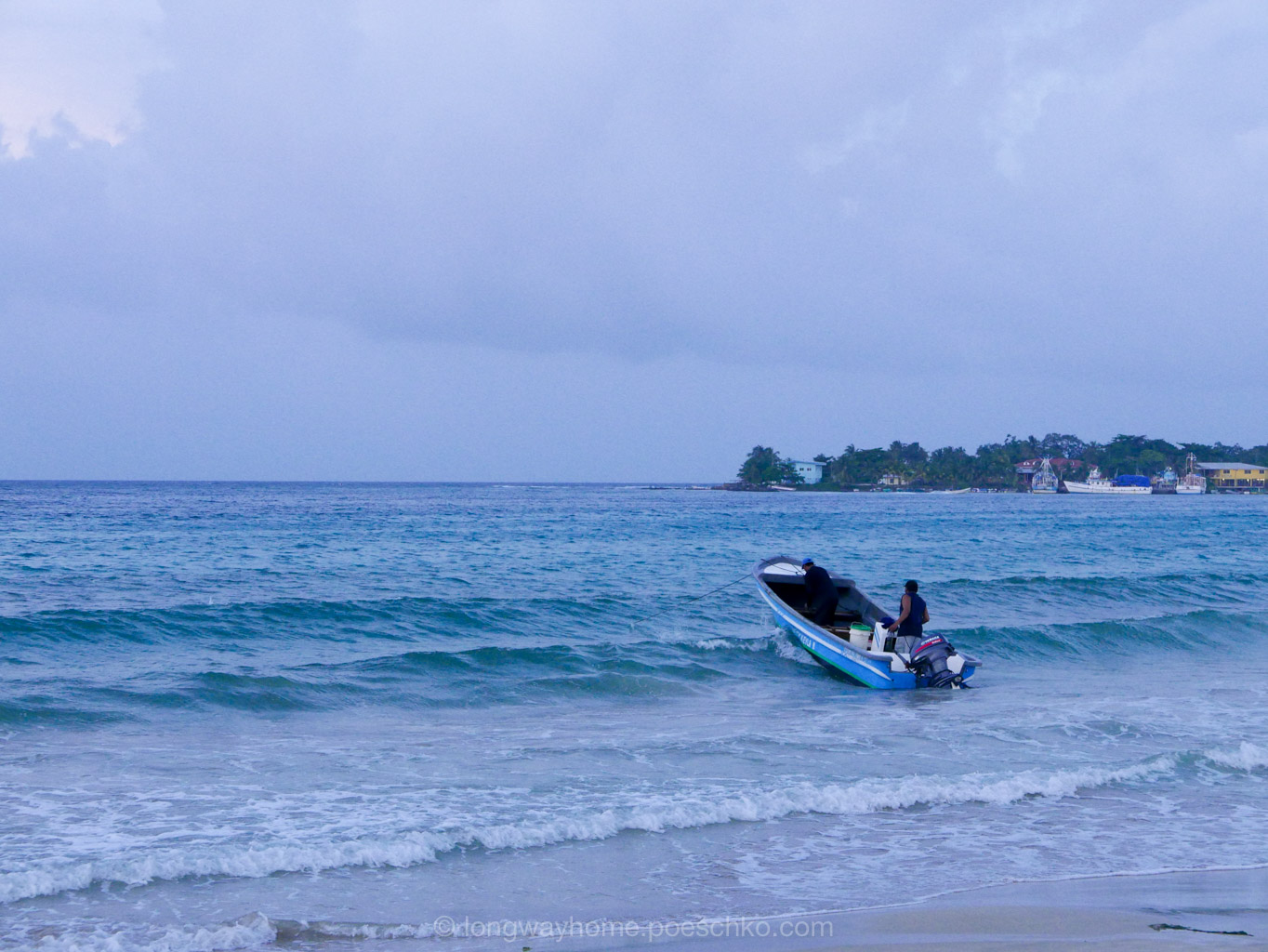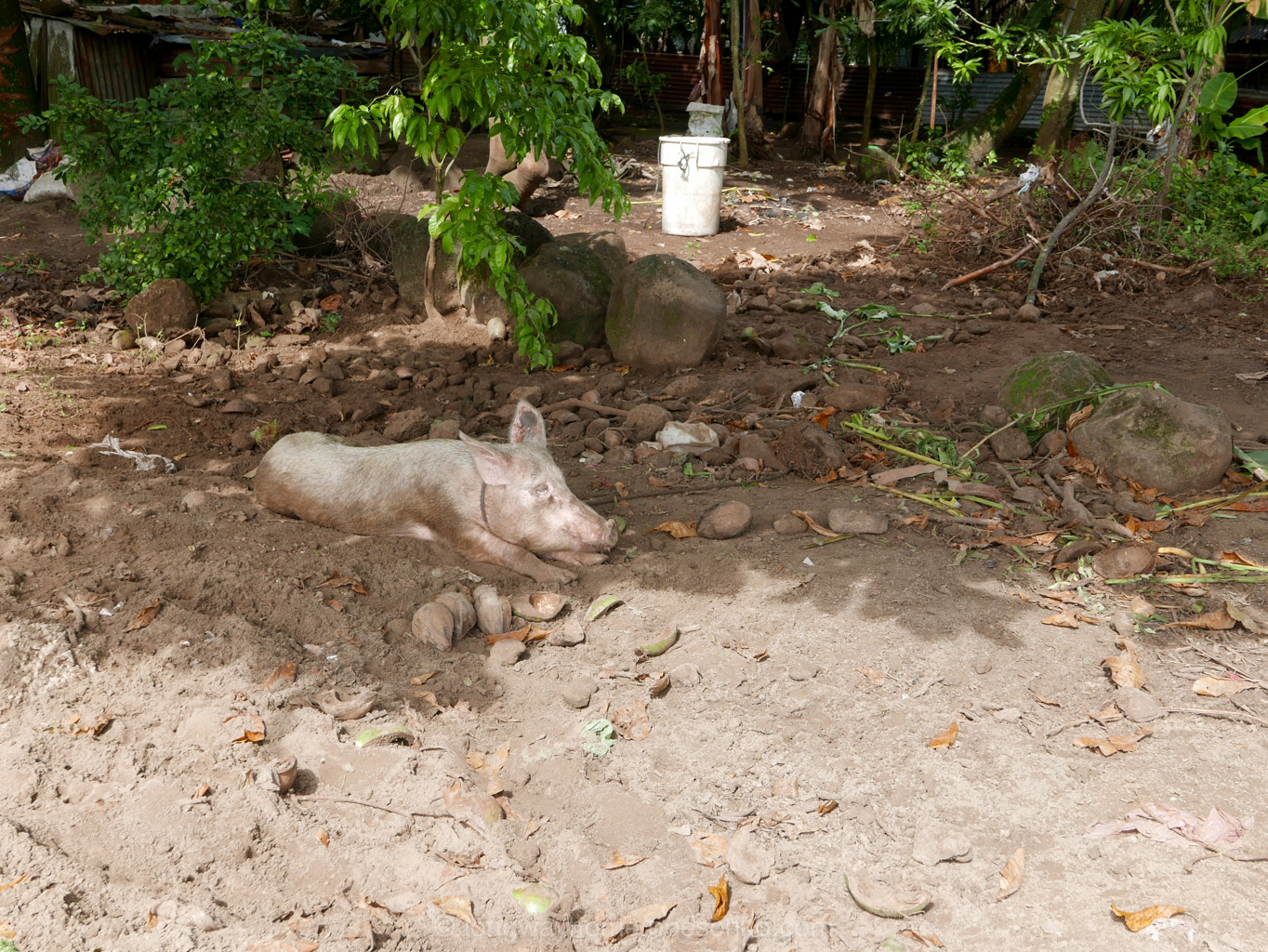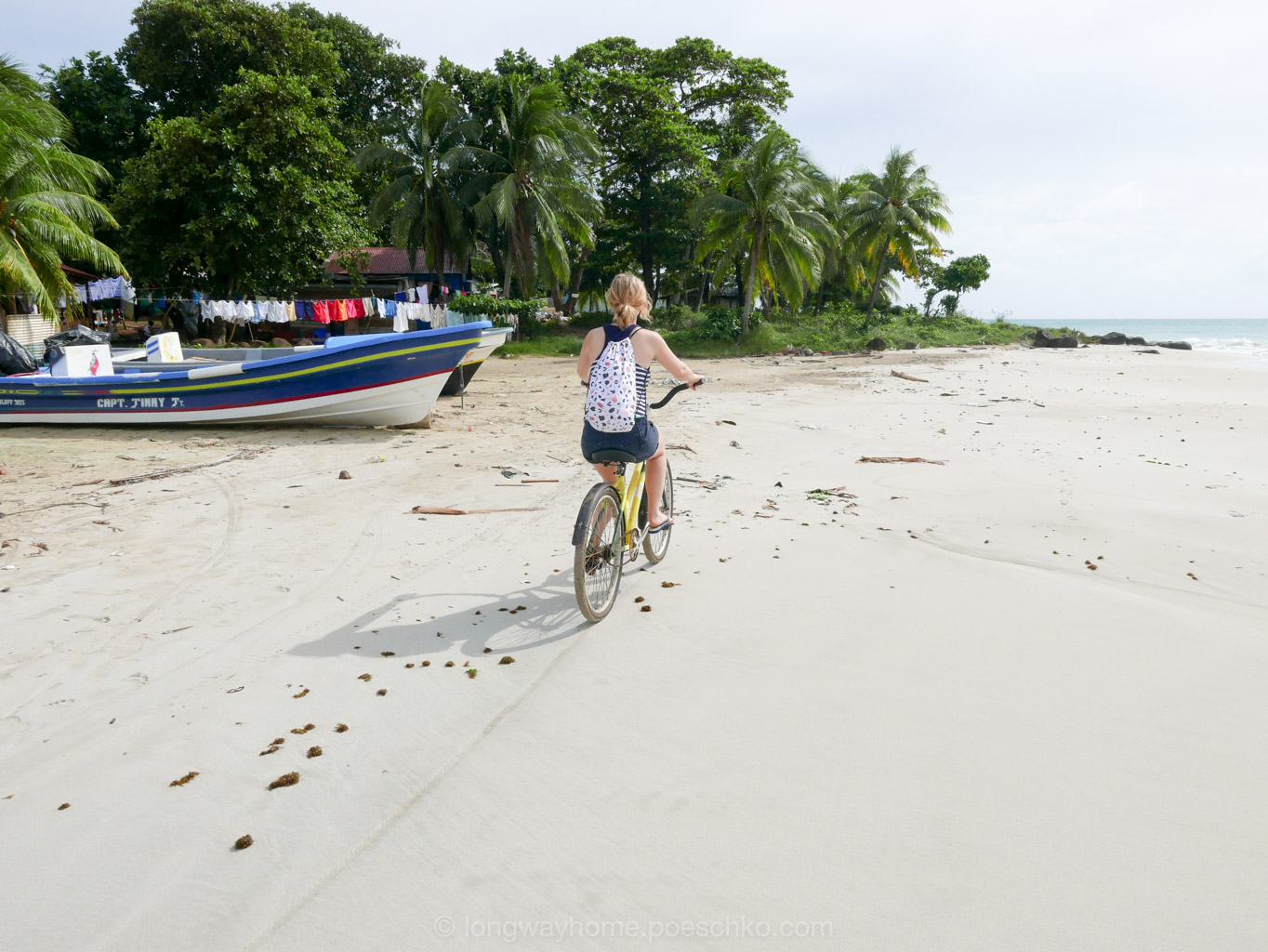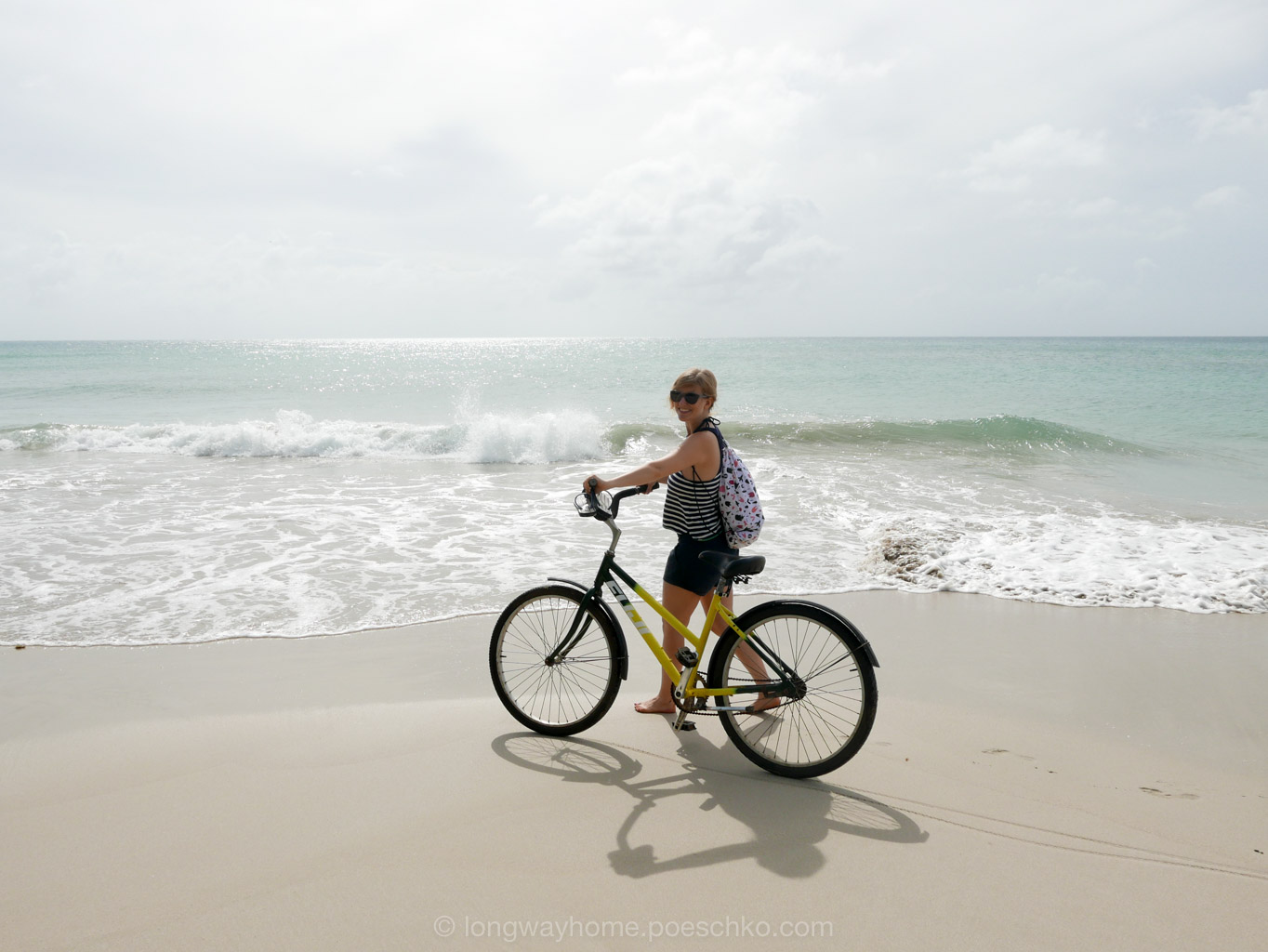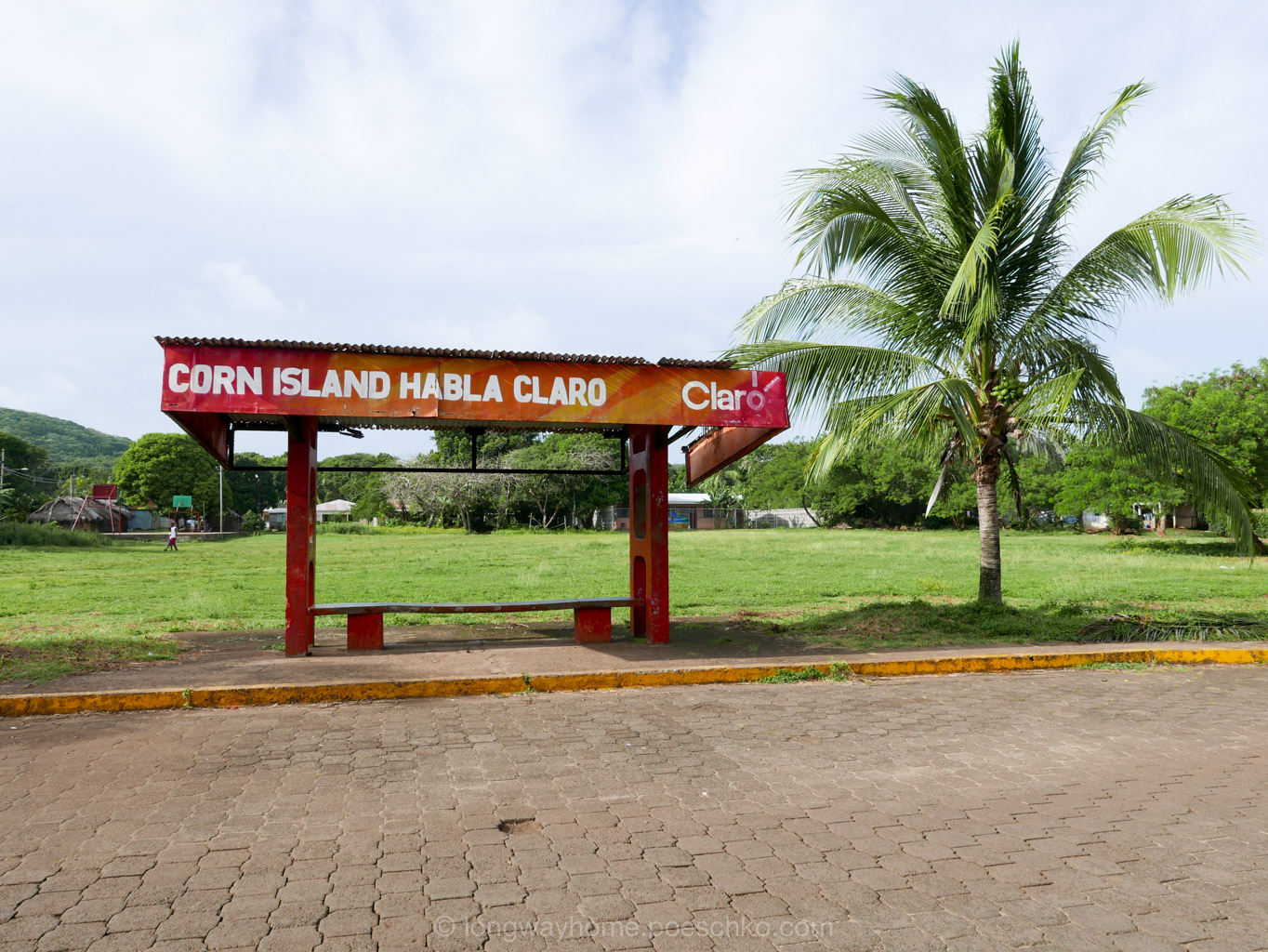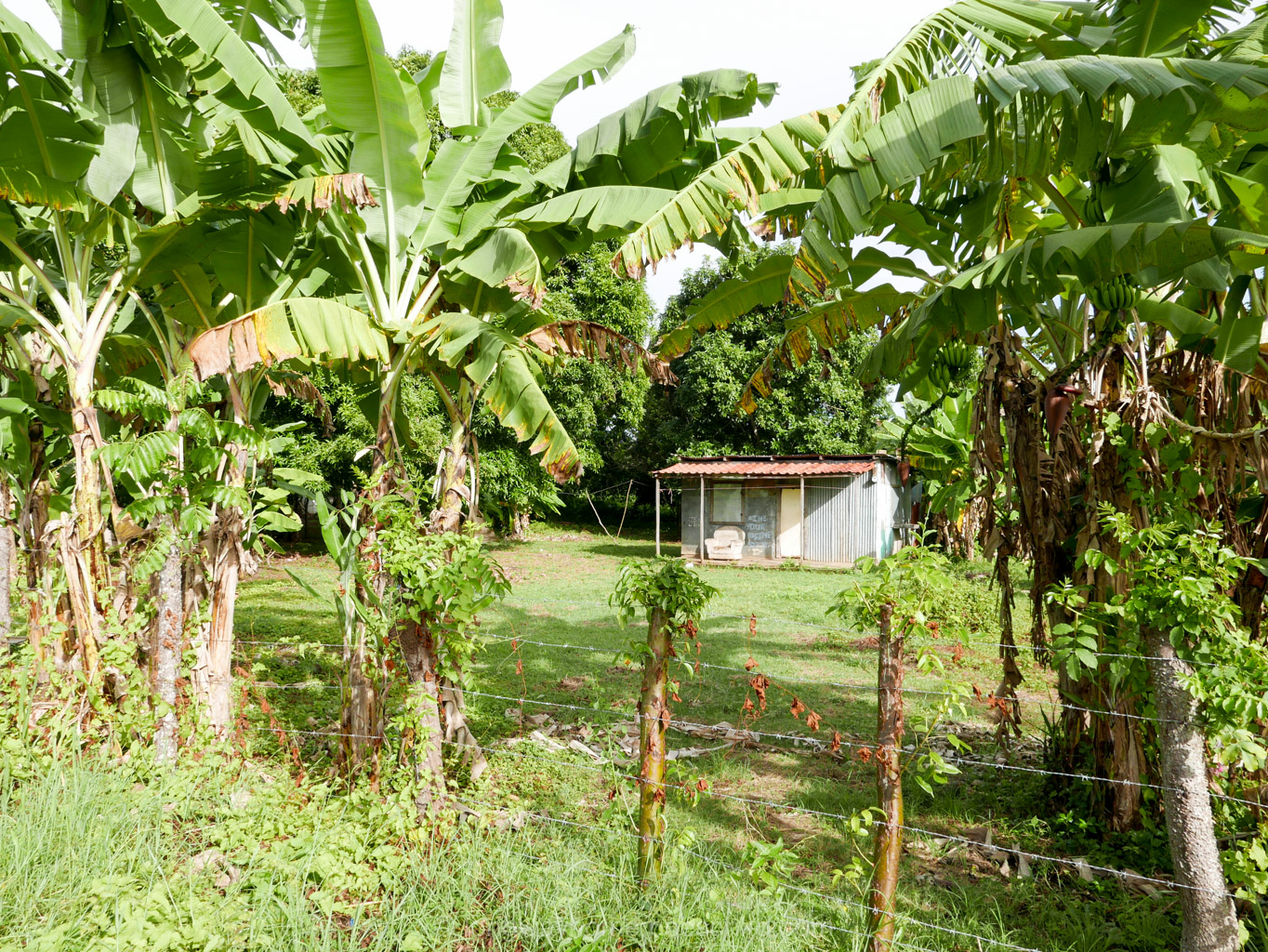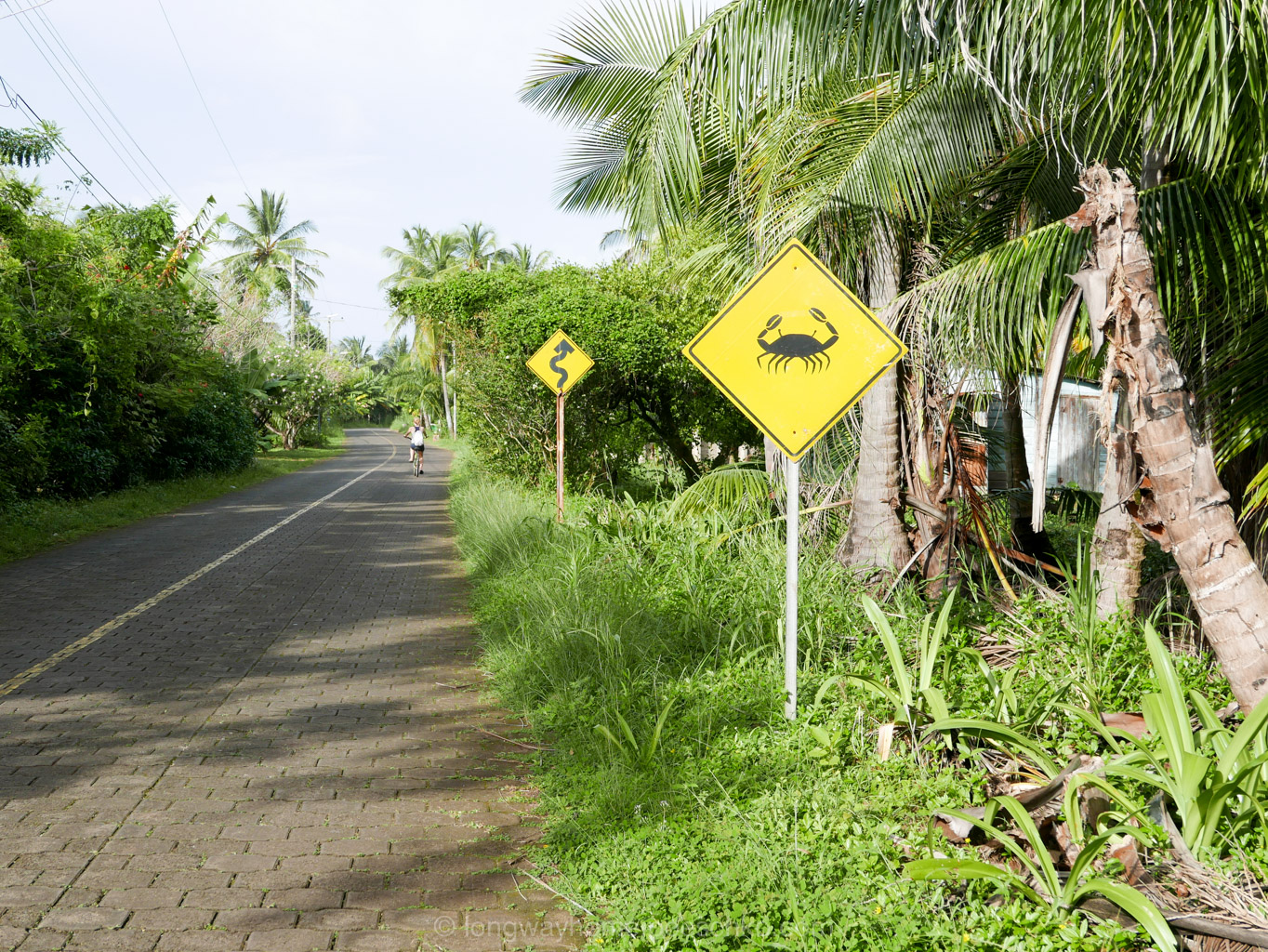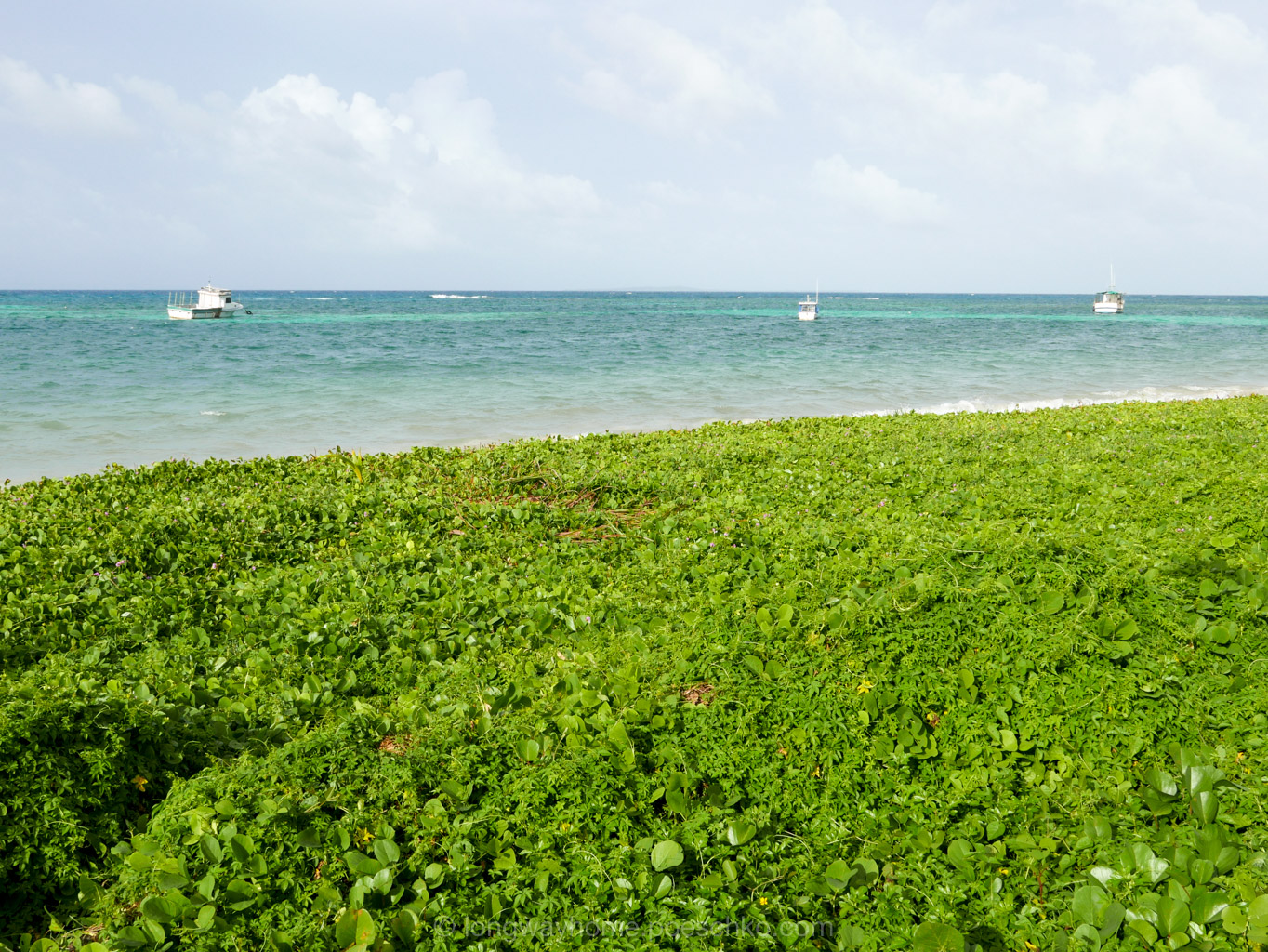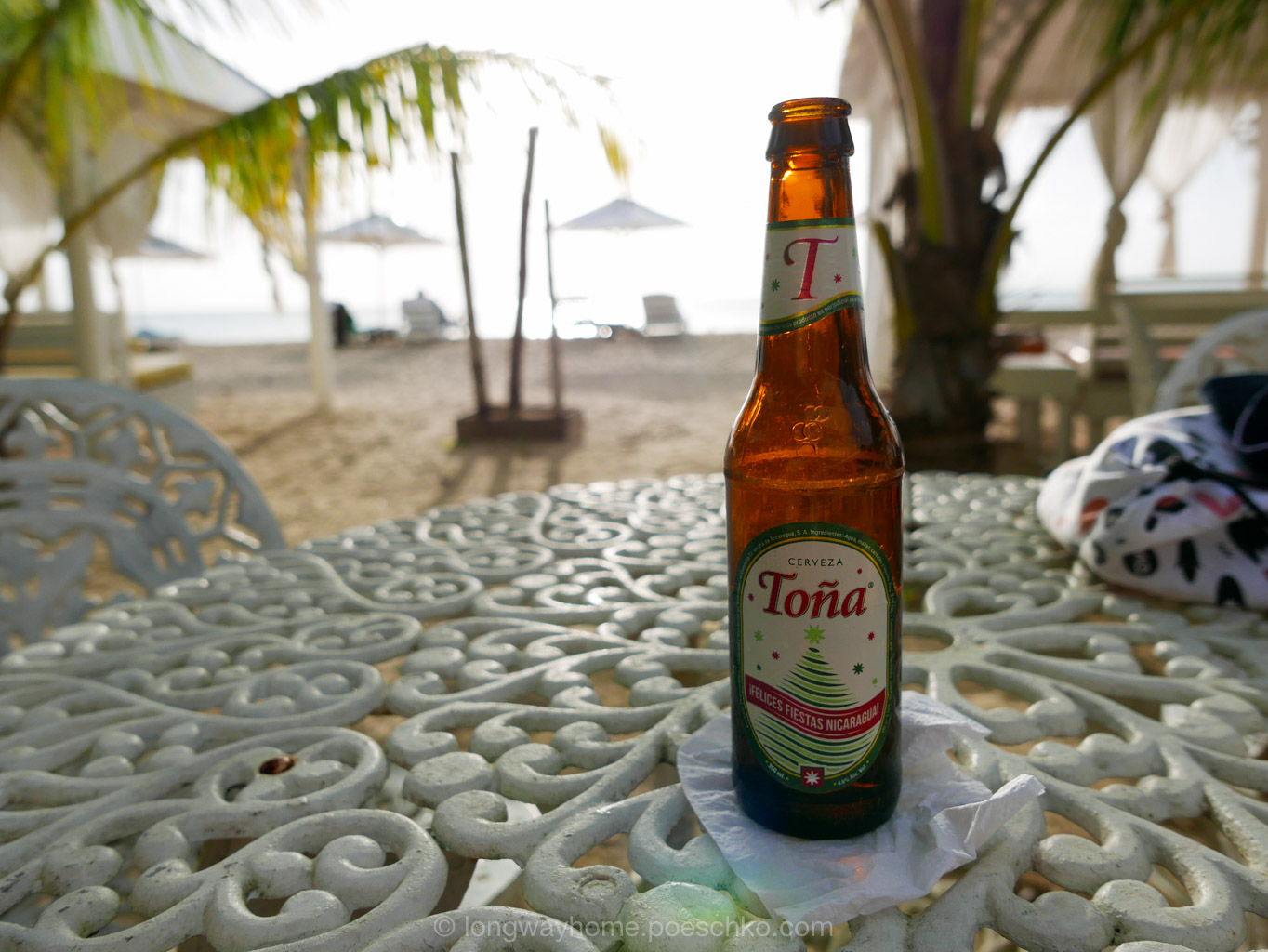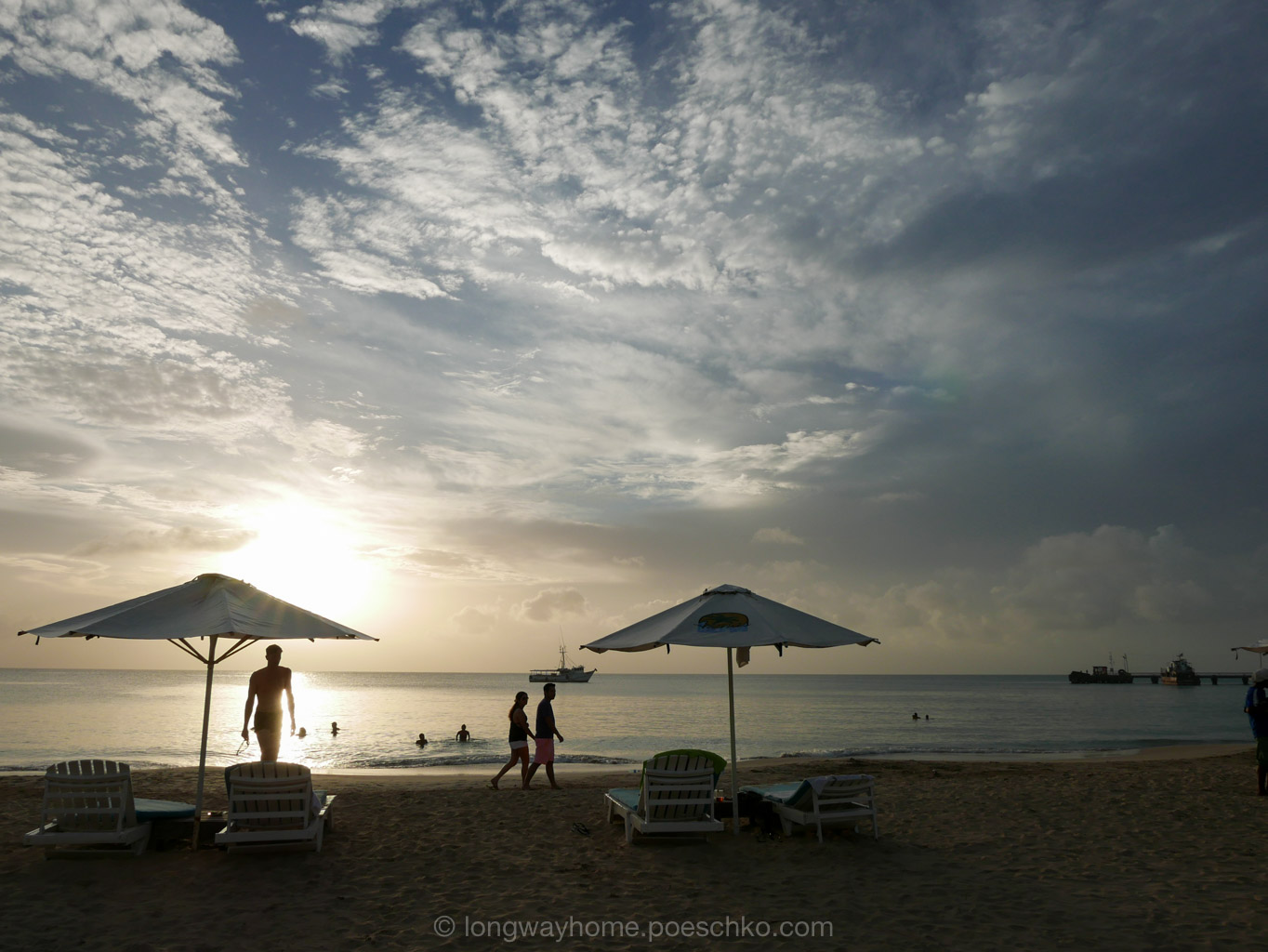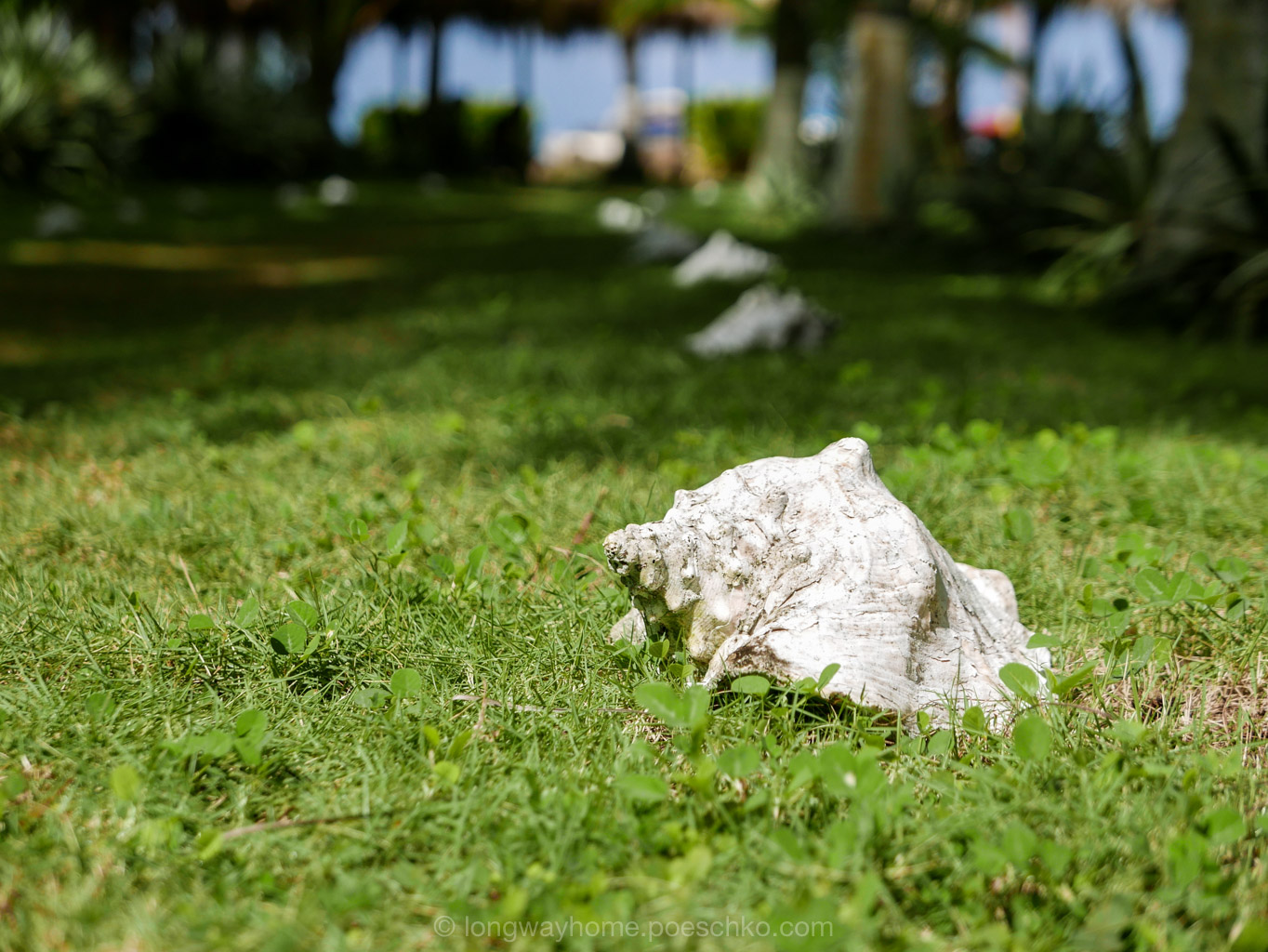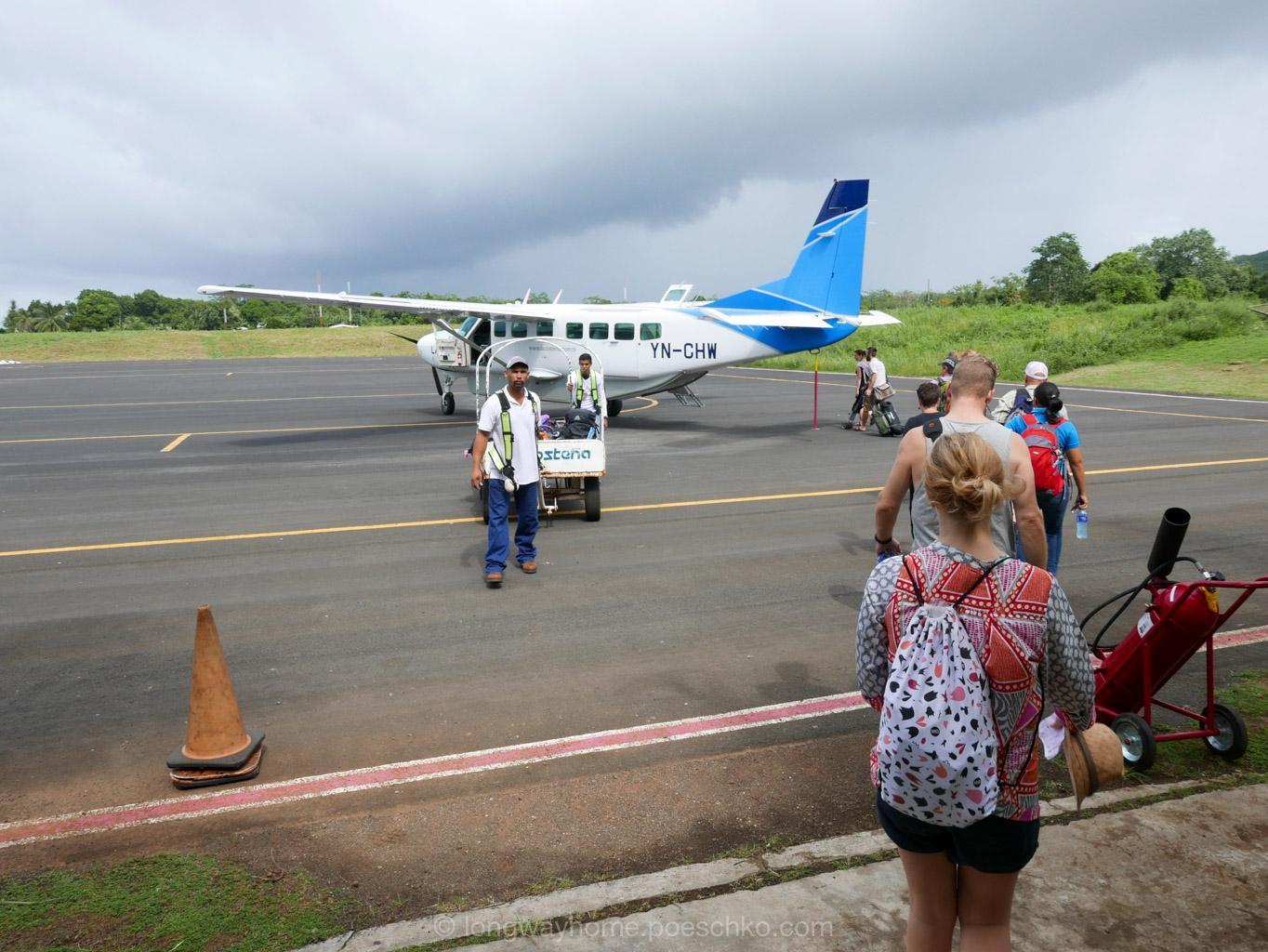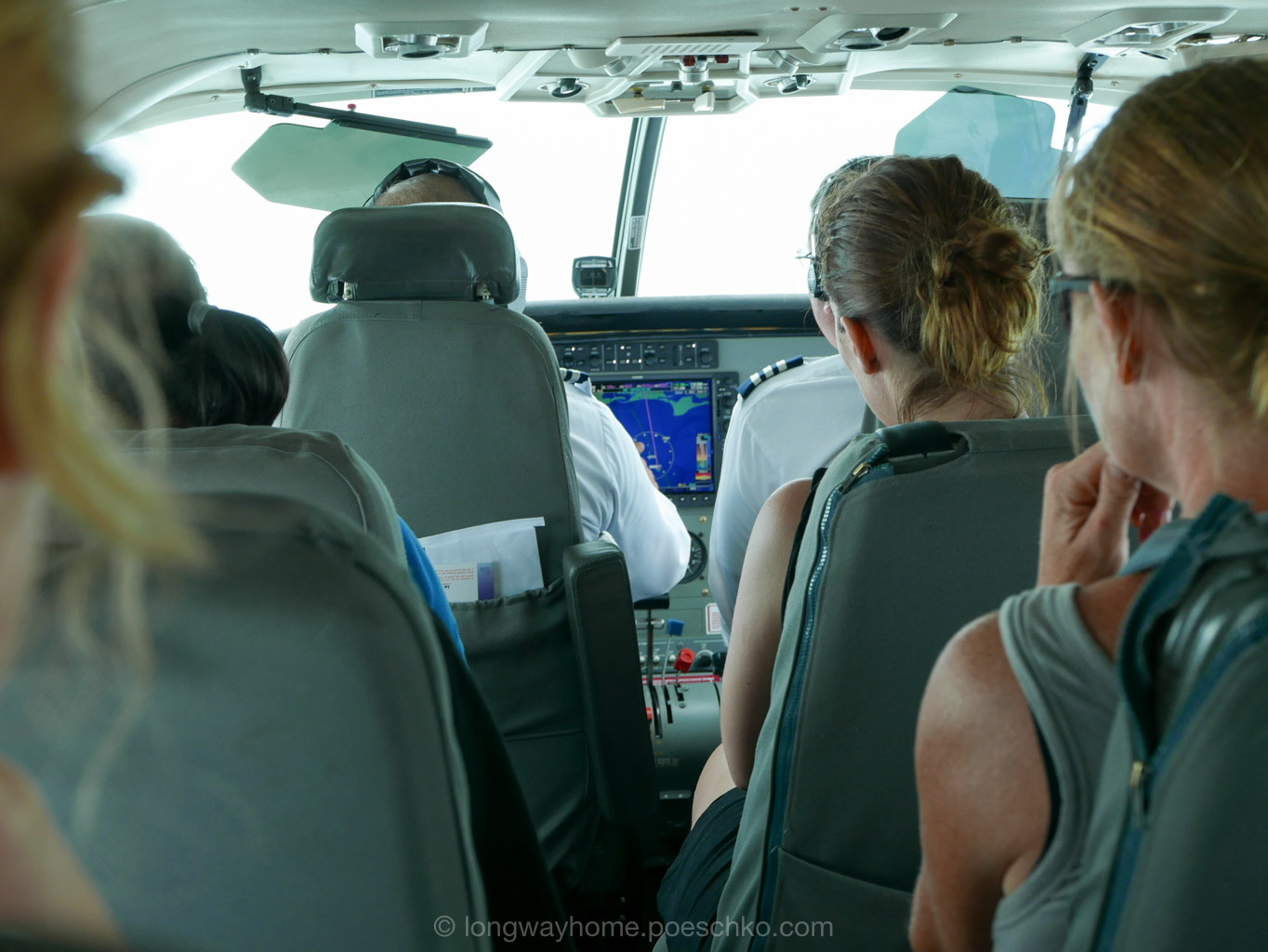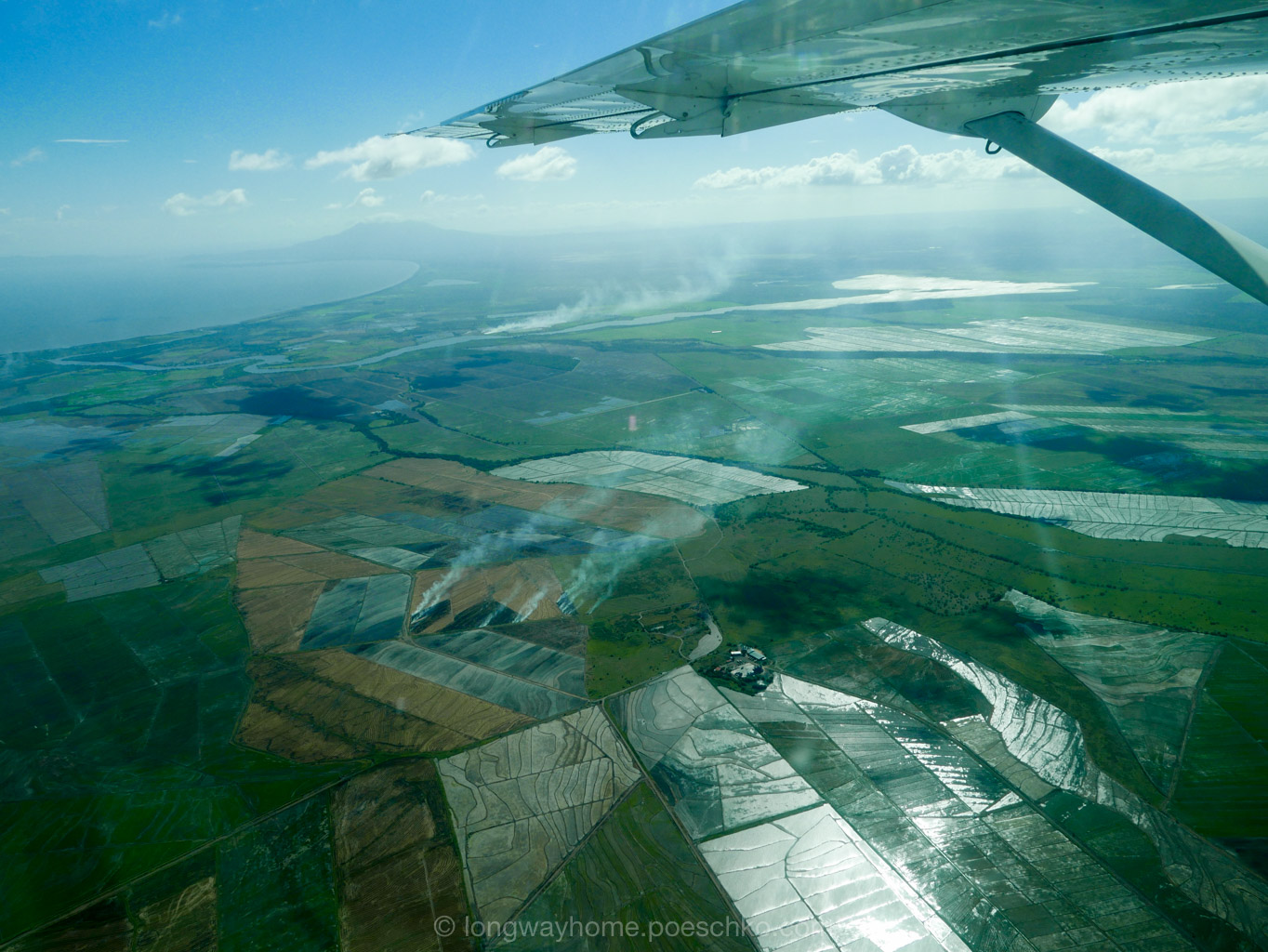Isla de Ometepe is the world’s largest volcanic island in a freshwater lake, located in Lake Nicaragua. Its main attractions are the two volcanoes Concepción and Maderas, which are called volcán de fuego and volcán de agua, respectiveley, because Concepción is an active volcano with small to medium ash explosions and eruptions every 50 years, while in Maderas’ crater, a lagoon has formed. Climbing the volcanoes should only be done with a qualified guide—it has happened in the past that people got lost (in lack of designated trails) and even died.
Getting to Ometepe was not difficult at all: From Granada, we took a shuttle to San Jorge, where the ferries leave, and then set over to Moyogalpa, one of Ometepe’s two main towns. The ferry took about 1h 15m to get to Moyogalpa.
Obviously, we had to climb a volcano. At 6:45 in the morning, we met with our young, competent guide Ezekiel who would be taking us safely up and down the volcano Concepción, with an elevation of 1600 m the taller one of the two. We started our hike at 50 m above sea level. The first section of the hike was pretty flat, but quickly turned into a strenuous uphill path through amazing plantain and banana plantations, later cutting through a beautiful humid and dense rainforest, home to miko and congo (or howler) monkeys and other animals. At about 1000 m, vegetation stops and there is nothing but rock, stone and blackish sand.
The view from the 1000 m mirador (viewpoint) was amazing: we overlooked the island, Lake Nicaragua and spotted more volcanoes and the city of Granada on the lake’s shore. The top of the volcano, however, was covered in a thick cloud that at 10:30 already began to descend towards the mirador, where we rested and had a snack in the sunshine after the strenuous first three hours of hiking. Although we knew that the chances of seeing the crater in these cloudy conditions were low, we decided to continue our hike towards the top.
Climbing up on rocks and sand was really hard, and we imagined it would be even harder on the way down. Plus, the view was very limited in the clouds. Given the bad conditions and the difficult ascent, we turned around at 1400 m, only 200 vertical meters below the crater.
But on our way down, we were compensated with spotting many, many monkeys (and them spotting us—at one point, they literally circled us) and beautiful blue, yellow and orange butterflies.
We reached the foot of the volcano by 3:15 in the afternoon, almost eight hours after we had started from there. We were pretty exhausted, but very happy and impressed by Concepción’s range of vegetation and its biodiversity.
There was still time to visit Punta Jesus María, a narrow sandbank from which we had a great panoramic view of Isla Ometepe with its two volcanoes. And we also had our well-deserved beer, a coconut to drink and delicious papaya juice to recover from the hike. A tuk-tuk (one of the island’s tricycle taxis) took us back to Moyogalpa.
We stayed for two nights at the Corner House Bed & Breakfast right on Moyogalpa’s main street leading uphill from the port. Highly recommended! (You just have to use the complementary earplugs when the street party outside gets too loud.)
Goodbye, Nicaragua!
On December 12, we started our return to the mainland very early, because we had to cross the border to Costa Rica and make it in time to Liberia to catch our shuttle to Santa Elena.
Nicaragua was such a great place! Tourism is just about to take off and is being highly pushed by the government. But for now, the country seems to be quite pristine (and chaotic). It has a lot to offer, although we preferred the rural areas and nature sights to most of its cities (with the exception of Granada). We never felt unsafe or ripped off. The infrastructure might not be the best, but finding and taking transportation was easy (and it certainly helps if you know some Spanish).
Comment and share
 Miraflores Locks, Panama Canal.
Miraflores Locks, Panama Canal.